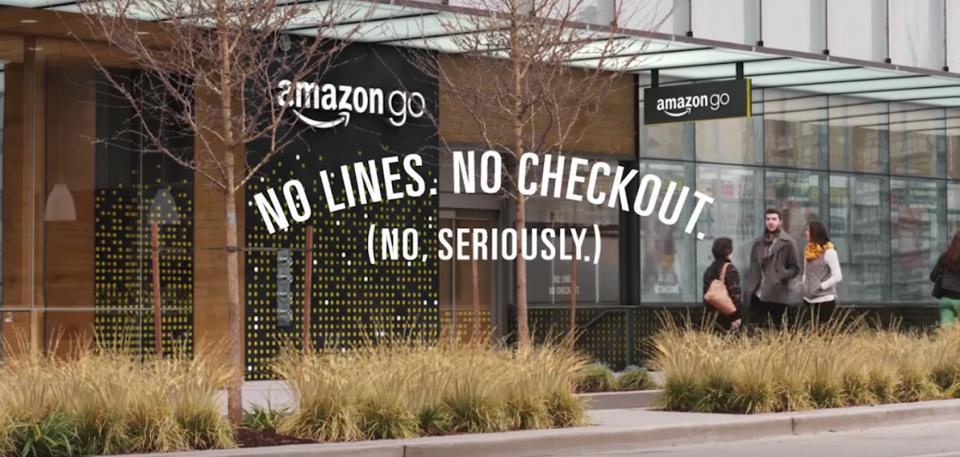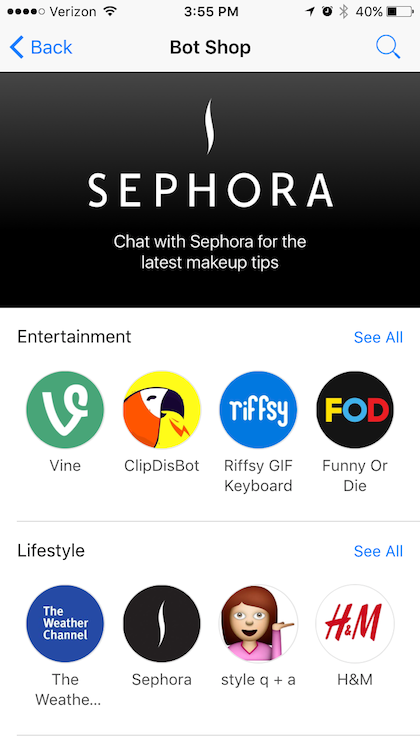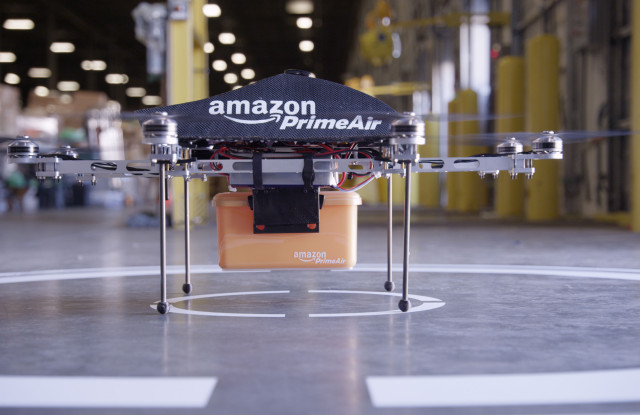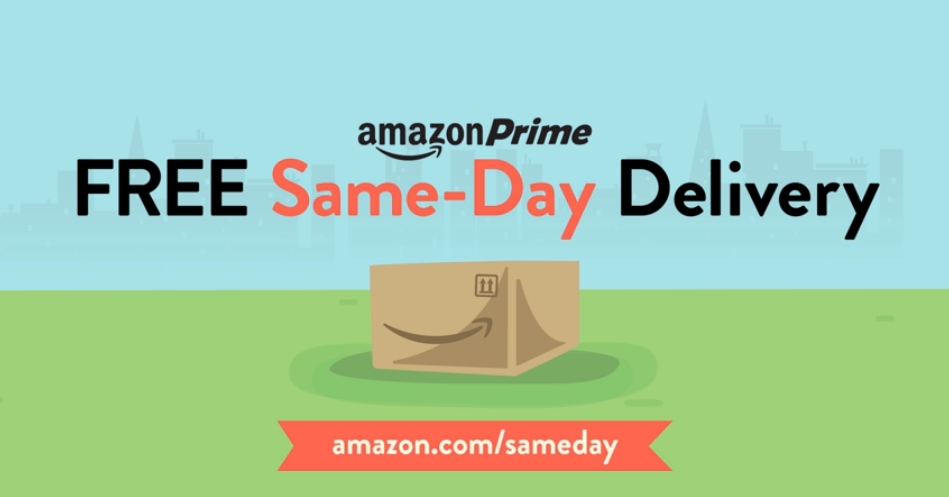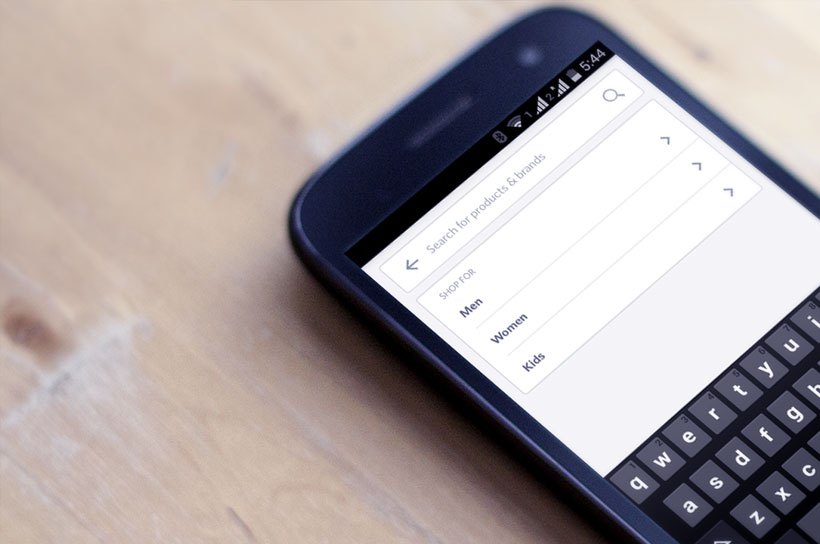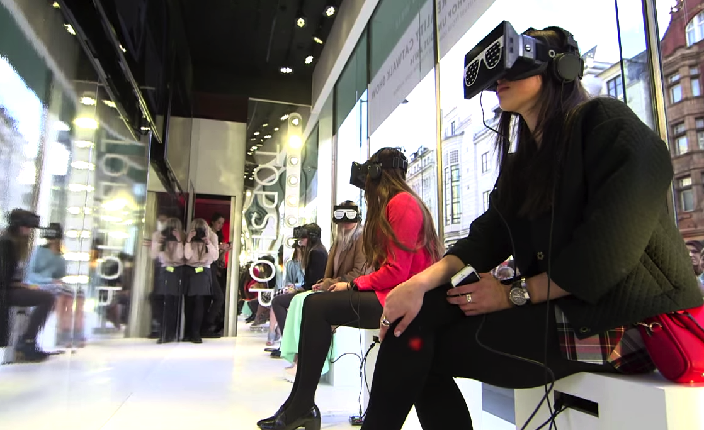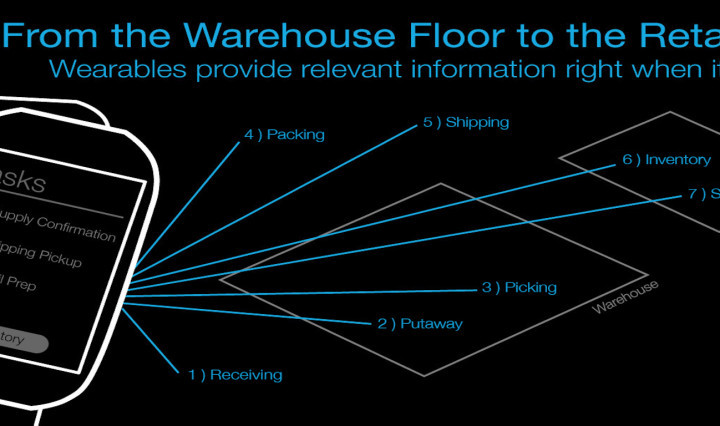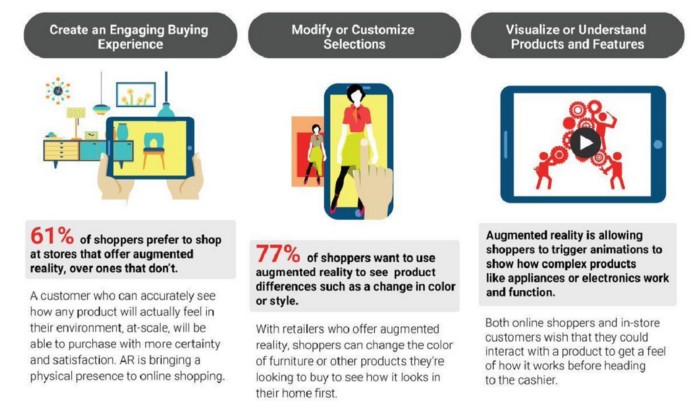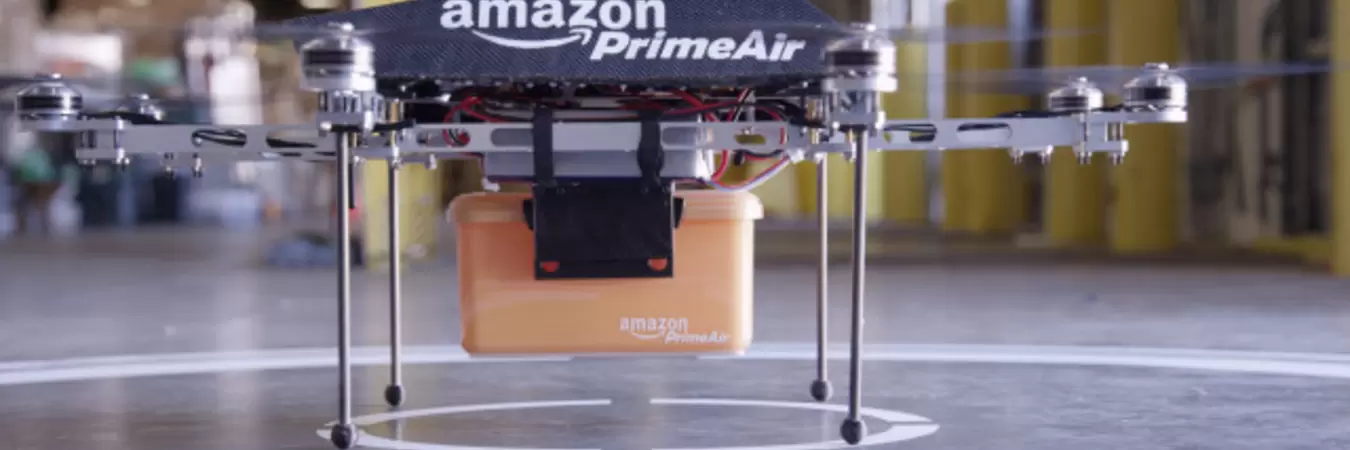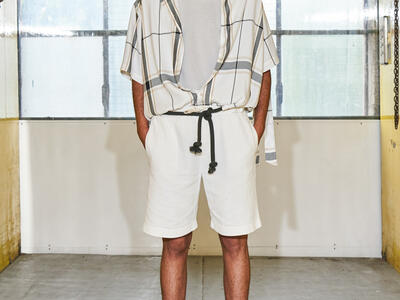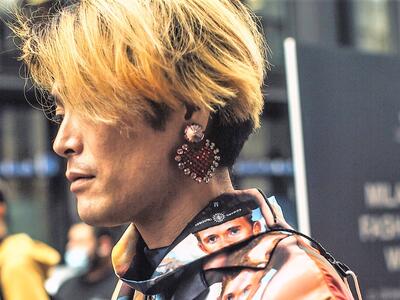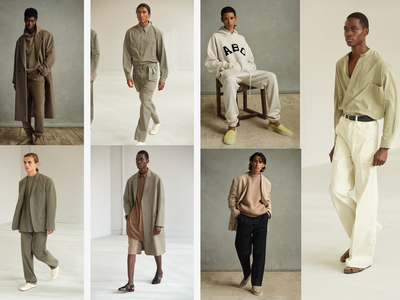- Deprecated function: Use of "static" in callables is deprecated in Drupal\user\Entity\Role::postLoad() (line 172 of core/modules/user/src/Entity/Role.php).
Drupal\user\Entity\Role::postLoad(Object, Array) (Line: 423)
Drupal\Core\Entity\EntityStorageBase->postLoad(Array) (Line: 353)
Drupal\Core\Entity\EntityStorageBase->loadMultiple(Array) (Line: 16)
Drupal\user\RoleStorage->isPermissionInRoles('bypass httpswww redirect', Array) (Line: 112)
Drupal\Core\Session\UserSession->hasPermission('bypass httpswww redirect') (Line: 105)
Drupal\Core\Session\AccountProxy->hasPermission('bypass httpswww redirect') (Line: 62)
Drupal\httpswww\EventSubscriber\HttpsWwwRedirectSubscriber->redirect(Object, 'kernel.request', Object)
call_user_func(Array, Object, 'kernel.request', Object) (Line: 142)
Drupal\Component\EventDispatcher\ContainerAwareEventDispatcher->dispatch(Object, 'kernel.request') (Line: 145)
Symfony\Component\HttpKernel\HttpKernel->handleRaw(Object, 1) (Line: 81)
Symfony\Component\HttpKernel\HttpKernel->handle(Object, 1, 1) (Line: 68)
Drupal\simple_oauth\HttpMiddleware\BasicAuthSwap->handle(Object, 1, 1) (Line: 58)
Drupal\Core\StackMiddleware\Session->handle(Object, 1, 1) (Line: 48)
Drupal\Core\StackMiddleware\KernelPreHandle->handle(Object, 1, 1) (Line: 106)
Drupal\page_cache\StackMiddleware\PageCache->pass(Object, 1, 1) (Line: 85)
Drupal\page_cache\StackMiddleware\PageCache->handle(Object, 1, 1) (Line: 49)
Asm89\Stack\Cors->handle(Object, 1, 1) (Line: 48)
Drupal\Core\StackMiddleware\ReverseProxyMiddleware->handle(Object, 1, 1) (Line: 51)
Drupal\Core\StackMiddleware\NegotiationMiddleware->handle(Object, 1, 1) (Line: 23)
Stack\StackedHttpKernel->handle(Object, 1, 1) (Line: 718)
Drupal\Core\DrupalKernel->handle(Object) (Line: 19)
- Deprecated function: strip_tags(): Passing null to parameter #1 ($string) of type string is deprecated in Drupal\tooltip_taxonomy\Services\TooltipManager->addVocabularyReplacement() (line 304 of modules/tooltip_taxonomy/src/Services/TooltipManager.php).
Drupal\tooltip_taxonomy\Services\TooltipManager->addVocabularyReplacement(Array, Array, '<strong><a>') (Line: 212)
Drupal\tooltip_taxonomy\Services\TooltipManager->addTooltip('full', Object, 'body', Array, Array) (Line: 52)
tooltip_taxonomy_entity_display_build_alter(Array, Array, NULL) (Line: 562)
Drupal\Core\Extension\ModuleHandler->alter('entity_display_build', Array, Array) (Line: 286)
Drupal\Core\Entity\Entity\EntityViewDisplay->buildMultiple(Array) (Line: 340)
Drupal\Core\Entity\EntityViewBuilder->buildComponents(Array, Array, Array, 'full') (Line: 24)
Drupal\node\NodeViewBuilder->buildComponents(Array, Array, Array, 'full') (Line: 282)
Drupal\Core\Entity\EntityViewBuilder->buildMultiple(Array) (Line: 239)
Drupal\Core\Entity\EntityViewBuilder->build(Array)
call_user_func_array(Array, Array) (Line: 101)
Drupal\Core\Render\Renderer->doTrustedCallback(Array, Array, 'Render #pre_render callbacks must be methods of a class that implements \Drupal\Core\Security\TrustedCallbackInterface or be an anonymous function. The callback was %s. See https://www.drupal.org/node/2966725', 'exception', 'Drupal\Core\Render\Element\RenderCallbackInterface') (Line: 788)
Drupal\Core\Render\Renderer->doCallback('#pre_render', Array, Array) (Line: 374)
Drupal\Core\Render\Renderer->doRender(Array, ) (Line: 204)
Drupal\Core\Render\Renderer->render(Array, ) (Line: 242)
Drupal\Core\Render\MainContent\HtmlRenderer->Drupal\Core\Render\MainContent\{closure}() (Line: 580)
Drupal\Core\Render\Renderer->executeInRenderContext(Object, Object) (Line: 235)
Drupal\Core\Render\MainContent\HtmlRenderer->prepare(Array, Object, Object) (Line: 91)
Drupal\next\Render\MainContent\HtmlRenderer->prepare(Array, Object, Object) (Line: 132)
Drupal\Core\Render\MainContent\HtmlRenderer->renderResponse(Array, Object, Object) (Line: 90)
Drupal\Core\EventSubscriber\MainContentViewSubscriber->onViewRenderArray(Object, 'kernel.view', Object)
call_user_func(Array, Object, 'kernel.view', Object) (Line: 142)
Drupal\Component\EventDispatcher\ContainerAwareEventDispatcher->dispatch(Object, 'kernel.view') (Line: 174)
Symfony\Component\HttpKernel\HttpKernel->handleRaw(Object, 1) (Line: 81)
Symfony\Component\HttpKernel\HttpKernel->handle(Object, 1, 1) (Line: 68)
Drupal\simple_oauth\HttpMiddleware\BasicAuthSwap->handle(Object, 1, 1) (Line: 58)
Drupal\Core\StackMiddleware\Session->handle(Object, 1, 1) (Line: 48)
Drupal\Core\StackMiddleware\KernelPreHandle->handle(Object, 1, 1) (Line: 106)
Drupal\page_cache\StackMiddleware\PageCache->pass(Object, 1, 1) (Line: 85)
Drupal\page_cache\StackMiddleware\PageCache->handle(Object, 1, 1) (Line: 49)
Asm89\Stack\Cors->handle(Object, 1, 1) (Line: 48)
Drupal\Core\StackMiddleware\ReverseProxyMiddleware->handle(Object, 1, 1) (Line: 51)
Drupal\Core\StackMiddleware\NegotiationMiddleware->handle(Object, 1, 1) (Line: 23)
Stack\StackedHttpKernel->handle(Object, 1, 1) (Line: 718)
Drupal\Core\DrupalKernel->handle(Object) (Line: 19)
- Deprecated function: strip_tags(): Passing null to parameter #1 ($string) of type string is deprecated in Drupal\tooltip_taxonomy\Services\TooltipManager->addVocabularyReplacement() (line 304 of modules/tooltip_taxonomy/src/Services/TooltipManager.php).
Drupal\tooltip_taxonomy\Services\TooltipManager->addVocabularyReplacement(Array, Array, '<strong><a>') (Line: 212)
Drupal\tooltip_taxonomy\Services\TooltipManager->addTooltip('full', Object, 'body', Array, Array) (Line: 52)
tooltip_taxonomy_entity_display_build_alter(Array, Array, NULL) (Line: 562)
Drupal\Core\Extension\ModuleHandler->alter('entity_display_build', Array, Array) (Line: 286)
Drupal\Core\Entity\Entity\EntityViewDisplay->buildMultiple(Array) (Line: 340)
Drupal\Core\Entity\EntityViewBuilder->buildComponents(Array, Array, Array, 'full') (Line: 24)
Drupal\node\NodeViewBuilder->buildComponents(Array, Array, Array, 'full') (Line: 282)
Drupal\Core\Entity\EntityViewBuilder->buildMultiple(Array) (Line: 239)
Drupal\Core\Entity\EntityViewBuilder->build(Array)
call_user_func_array(Array, Array) (Line: 101)
Drupal\Core\Render\Renderer->doTrustedCallback(Array, Array, 'Render #pre_render callbacks must be methods of a class that implements \Drupal\Core\Security\TrustedCallbackInterface or be an anonymous function. The callback was %s. See https://www.drupal.org/node/2966725', 'exception', 'Drupal\Core\Render\Element\RenderCallbackInterface') (Line: 788)
Drupal\Core\Render\Renderer->doCallback('#pre_render', Array, Array) (Line: 374)
Drupal\Core\Render\Renderer->doRender(Array, ) (Line: 204)
Drupal\Core\Render\Renderer->render(Array, ) (Line: 242)
Drupal\Core\Render\MainContent\HtmlRenderer->Drupal\Core\Render\MainContent\{closure}() (Line: 580)
Drupal\Core\Render\Renderer->executeInRenderContext(Object, Object) (Line: 235)
Drupal\Core\Render\MainContent\HtmlRenderer->prepare(Array, Object, Object) (Line: 91)
Drupal\next\Render\MainContent\HtmlRenderer->prepare(Array, Object, Object) (Line: 132)
Drupal\Core\Render\MainContent\HtmlRenderer->renderResponse(Array, Object, Object) (Line: 90)
Drupal\Core\EventSubscriber\MainContentViewSubscriber->onViewRenderArray(Object, 'kernel.view', Object)
call_user_func(Array, Object, 'kernel.view', Object) (Line: 142)
Drupal\Component\EventDispatcher\ContainerAwareEventDispatcher->dispatch(Object, 'kernel.view') (Line: 174)
Symfony\Component\HttpKernel\HttpKernel->handleRaw(Object, 1) (Line: 81)
Symfony\Component\HttpKernel\HttpKernel->handle(Object, 1, 1) (Line: 68)
Drupal\simple_oauth\HttpMiddleware\BasicAuthSwap->handle(Object, 1, 1) (Line: 58)
Drupal\Core\StackMiddleware\Session->handle(Object, 1, 1) (Line: 48)
Drupal\Core\StackMiddleware\KernelPreHandle->handle(Object, 1, 1) (Line: 106)
Drupal\page_cache\StackMiddleware\PageCache->pass(Object, 1, 1) (Line: 85)
Drupal\page_cache\StackMiddleware\PageCache->handle(Object, 1, 1) (Line: 49)
Asm89\Stack\Cors->handle(Object, 1, 1) (Line: 48)
Drupal\Core\StackMiddleware\ReverseProxyMiddleware->handle(Object, 1, 1) (Line: 51)
Drupal\Core\StackMiddleware\NegotiationMiddleware->handle(Object, 1, 1) (Line: 23)
Stack\StackedHttpKernel->handle(Object, 1, 1) (Line: 718)
Drupal\Core\DrupalKernel->handle(Object) (Line: 19)
- Deprecated function: strip_tags(): Passing null to parameter #1 ($string) of type string is deprecated in Drupal\tooltip_taxonomy\Services\TooltipManager->addVocabularyReplacement() (line 304 of modules/tooltip_taxonomy/src/Services/TooltipManager.php).
Drupal\tooltip_taxonomy\Services\TooltipManager->addVocabularyReplacement(Array, Array, '<strong><a>') (Line: 212)
Drupal\tooltip_taxonomy\Services\TooltipManager->addTooltip('full', Object, 'body', Array, Array) (Line: 52)
tooltip_taxonomy_entity_display_build_alter(Array, Array, NULL) (Line: 562)
Drupal\Core\Extension\ModuleHandler->alter('entity_display_build', Array, Array) (Line: 286)
Drupal\Core\Entity\Entity\EntityViewDisplay->buildMultiple(Array) (Line: 340)
Drupal\Core\Entity\EntityViewBuilder->buildComponents(Array, Array, Array, 'full') (Line: 24)
Drupal\node\NodeViewBuilder->buildComponents(Array, Array, Array, 'full') (Line: 282)
Drupal\Core\Entity\EntityViewBuilder->buildMultiple(Array) (Line: 239)
Drupal\Core\Entity\EntityViewBuilder->build(Array)
call_user_func_array(Array, Array) (Line: 101)
Drupal\Core\Render\Renderer->doTrustedCallback(Array, Array, 'Render #pre_render callbacks must be methods of a class that implements \Drupal\Core\Security\TrustedCallbackInterface or be an anonymous function. The callback was %s. See https://www.drupal.org/node/2966725', 'exception', 'Drupal\Core\Render\Element\RenderCallbackInterface') (Line: 788)
Drupal\Core\Render\Renderer->doCallback('#pre_render', Array, Array) (Line: 374)
Drupal\Core\Render\Renderer->doRender(Array, ) (Line: 204)
Drupal\Core\Render\Renderer->render(Array, ) (Line: 242)
Drupal\Core\Render\MainContent\HtmlRenderer->Drupal\Core\Render\MainContent\{closure}() (Line: 580)
Drupal\Core\Render\Renderer->executeInRenderContext(Object, Object) (Line: 235)
Drupal\Core\Render\MainContent\HtmlRenderer->prepare(Array, Object, Object) (Line: 91)
Drupal\next\Render\MainContent\HtmlRenderer->prepare(Array, Object, Object) (Line: 132)
Drupal\Core\Render\MainContent\HtmlRenderer->renderResponse(Array, Object, Object) (Line: 90)
Drupal\Core\EventSubscriber\MainContentViewSubscriber->onViewRenderArray(Object, 'kernel.view', Object)
call_user_func(Array, Object, 'kernel.view', Object) (Line: 142)
Drupal\Component\EventDispatcher\ContainerAwareEventDispatcher->dispatch(Object, 'kernel.view') (Line: 174)
Symfony\Component\HttpKernel\HttpKernel->handleRaw(Object, 1) (Line: 81)
Symfony\Component\HttpKernel\HttpKernel->handle(Object, 1, 1) (Line: 68)
Drupal\simple_oauth\HttpMiddleware\BasicAuthSwap->handle(Object, 1, 1) (Line: 58)
Drupal\Core\StackMiddleware\Session->handle(Object, 1, 1) (Line: 48)
Drupal\Core\StackMiddleware\KernelPreHandle->handle(Object, 1, 1) (Line: 106)
Drupal\page_cache\StackMiddleware\PageCache->pass(Object, 1, 1) (Line: 85)
Drupal\page_cache\StackMiddleware\PageCache->handle(Object, 1, 1) (Line: 49)
Asm89\Stack\Cors->handle(Object, 1, 1) (Line: 48)
Drupal\Core\StackMiddleware\ReverseProxyMiddleware->handle(Object, 1, 1) (Line: 51)
Drupal\Core\StackMiddleware\NegotiationMiddleware->handle(Object, 1, 1) (Line: 23)
Stack\StackedHttpKernel->handle(Object, 1, 1) (Line: 718)
Drupal\Core\DrupalKernel->handle(Object) (Line: 19)
- Deprecated function: strip_tags(): Passing null to parameter #1 ($string) of type string is deprecated in Drupal\tooltip_taxonomy\Services\TooltipManager->addVocabularyReplacement() (line 304 of modules/tooltip_taxonomy/src/Services/TooltipManager.php).
Drupal\tooltip_taxonomy\Services\TooltipManager->addVocabularyReplacement(Array, Array, '<strong><a>') (Line: 212)
Drupal\tooltip_taxonomy\Services\TooltipManager->addTooltip('full', Object, 'body', Array, Array) (Line: 52)
tooltip_taxonomy_entity_display_build_alter(Array, Array, NULL) (Line: 562)
Drupal\Core\Extension\ModuleHandler->alter('entity_display_build', Array, Array) (Line: 286)
Drupal\Core\Entity\Entity\EntityViewDisplay->buildMultiple(Array) (Line: 340)
Drupal\Core\Entity\EntityViewBuilder->buildComponents(Array, Array, Array, 'full') (Line: 24)
Drupal\node\NodeViewBuilder->buildComponents(Array, Array, Array, 'full') (Line: 282)
Drupal\Core\Entity\EntityViewBuilder->buildMultiple(Array) (Line: 239)
Drupal\Core\Entity\EntityViewBuilder->build(Array)
call_user_func_array(Array, Array) (Line: 101)
Drupal\Core\Render\Renderer->doTrustedCallback(Array, Array, 'Render #pre_render callbacks must be methods of a class that implements \Drupal\Core\Security\TrustedCallbackInterface or be an anonymous function. The callback was %s. See https://www.drupal.org/node/2966725', 'exception', 'Drupal\Core\Render\Element\RenderCallbackInterface') (Line: 788)
Drupal\Core\Render\Renderer->doCallback('#pre_render', Array, Array) (Line: 374)
Drupal\Core\Render\Renderer->doRender(Array, ) (Line: 204)
Drupal\Core\Render\Renderer->render(Array, ) (Line: 242)
Drupal\Core\Render\MainContent\HtmlRenderer->Drupal\Core\Render\MainContent\{closure}() (Line: 580)
Drupal\Core\Render\Renderer->executeInRenderContext(Object, Object) (Line: 235)
Drupal\Core\Render\MainContent\HtmlRenderer->prepare(Array, Object, Object) (Line: 91)
Drupal\next\Render\MainContent\HtmlRenderer->prepare(Array, Object, Object) (Line: 132)
Drupal\Core\Render\MainContent\HtmlRenderer->renderResponse(Array, Object, Object) (Line: 90)
Drupal\Core\EventSubscriber\MainContentViewSubscriber->onViewRenderArray(Object, 'kernel.view', Object)
call_user_func(Array, Object, 'kernel.view', Object) (Line: 142)
Drupal\Component\EventDispatcher\ContainerAwareEventDispatcher->dispatch(Object, 'kernel.view') (Line: 174)
Symfony\Component\HttpKernel\HttpKernel->handleRaw(Object, 1) (Line: 81)
Symfony\Component\HttpKernel\HttpKernel->handle(Object, 1, 1) (Line: 68)
Drupal\simple_oauth\HttpMiddleware\BasicAuthSwap->handle(Object, 1, 1) (Line: 58)
Drupal\Core\StackMiddleware\Session->handle(Object, 1, 1) (Line: 48)
Drupal\Core\StackMiddleware\KernelPreHandle->handle(Object, 1, 1) (Line: 106)
Drupal\page_cache\StackMiddleware\PageCache->pass(Object, 1, 1) (Line: 85)
Drupal\page_cache\StackMiddleware\PageCache->handle(Object, 1, 1) (Line: 49)
Asm89\Stack\Cors->handle(Object, 1, 1) (Line: 48)
Drupal\Core\StackMiddleware\ReverseProxyMiddleware->handle(Object, 1, 1) (Line: 51)
Drupal\Core\StackMiddleware\NegotiationMiddleware->handle(Object, 1, 1) (Line: 23)
Stack\StackedHttpKernel->handle(Object, 1, 1) (Line: 718)
Drupal\Core\DrupalKernel->handle(Object) (Line: 19)
- Deprecated function: strip_tags(): Passing null to parameter #1 ($string) of type string is deprecated in Drupal\tooltip_taxonomy\Services\TooltipManager->addVocabularyReplacement() (line 304 of modules/tooltip_taxonomy/src/Services/TooltipManager.php).
Drupal\tooltip_taxonomy\Services\TooltipManager->addVocabularyReplacement(Array, Array, '<strong><a>') (Line: 212)
Drupal\tooltip_taxonomy\Services\TooltipManager->addTooltip('full', Object, 'body', Array, Array) (Line: 52)
tooltip_taxonomy_entity_display_build_alter(Array, Array, NULL) (Line: 562)
Drupal\Core\Extension\ModuleHandler->alter('entity_display_build', Array, Array) (Line: 286)
Drupal\Core\Entity\Entity\EntityViewDisplay->buildMultiple(Array) (Line: 340)
Drupal\Core\Entity\EntityViewBuilder->buildComponents(Array, Array, Array, 'full') (Line: 24)
Drupal\node\NodeViewBuilder->buildComponents(Array, Array, Array, 'full') (Line: 282)
Drupal\Core\Entity\EntityViewBuilder->buildMultiple(Array) (Line: 239)
Drupal\Core\Entity\EntityViewBuilder->build(Array)
call_user_func_array(Array, Array) (Line: 101)
Drupal\Core\Render\Renderer->doTrustedCallback(Array, Array, 'Render #pre_render callbacks must be methods of a class that implements \Drupal\Core\Security\TrustedCallbackInterface or be an anonymous function. The callback was %s. See https://www.drupal.org/node/2966725', 'exception', 'Drupal\Core\Render\Element\RenderCallbackInterface') (Line: 788)
Drupal\Core\Render\Renderer->doCallback('#pre_render', Array, Array) (Line: 374)
Drupal\Core\Render\Renderer->doRender(Array, ) (Line: 204)
Drupal\Core\Render\Renderer->render(Array, ) (Line: 242)
Drupal\Core\Render\MainContent\HtmlRenderer->Drupal\Core\Render\MainContent\{closure}() (Line: 580)
Drupal\Core\Render\Renderer->executeInRenderContext(Object, Object) (Line: 235)
Drupal\Core\Render\MainContent\HtmlRenderer->prepare(Array, Object, Object) (Line: 91)
Drupal\next\Render\MainContent\HtmlRenderer->prepare(Array, Object, Object) (Line: 132)
Drupal\Core\Render\MainContent\HtmlRenderer->renderResponse(Array, Object, Object) (Line: 90)
Drupal\Core\EventSubscriber\MainContentViewSubscriber->onViewRenderArray(Object, 'kernel.view', Object)
call_user_func(Array, Object, 'kernel.view', Object) (Line: 142)
Drupal\Component\EventDispatcher\ContainerAwareEventDispatcher->dispatch(Object, 'kernel.view') (Line: 174)
Symfony\Component\HttpKernel\HttpKernel->handleRaw(Object, 1) (Line: 81)
Symfony\Component\HttpKernel\HttpKernel->handle(Object, 1, 1) (Line: 68)
Drupal\simple_oauth\HttpMiddleware\BasicAuthSwap->handle(Object, 1, 1) (Line: 58)
Drupal\Core\StackMiddleware\Session->handle(Object, 1, 1) (Line: 48)
Drupal\Core\StackMiddleware\KernelPreHandle->handle(Object, 1, 1) (Line: 106)
Drupal\page_cache\StackMiddleware\PageCache->pass(Object, 1, 1) (Line: 85)
Drupal\page_cache\StackMiddleware\PageCache->handle(Object, 1, 1) (Line: 49)
Asm89\Stack\Cors->handle(Object, 1, 1) (Line: 48)
Drupal\Core\StackMiddleware\ReverseProxyMiddleware->handle(Object, 1, 1) (Line: 51)
Drupal\Core\StackMiddleware\NegotiationMiddleware->handle(Object, 1, 1) (Line: 23)
Stack\StackedHttpKernel->handle(Object, 1, 1) (Line: 718)
Drupal\Core\DrupalKernel->handle(Object) (Line: 19)
- Deprecated function: strip_tags(): Passing null to parameter #1 ($string) of type string is deprecated in Drupal\tooltip_taxonomy\Services\TooltipManager->addVocabularyReplacement() (line 304 of modules/tooltip_taxonomy/src/Services/TooltipManager.php).
Drupal\tooltip_taxonomy\Services\TooltipManager->addVocabularyReplacement(Array, Array, '<strong><a>') (Line: 212)
Drupal\tooltip_taxonomy\Services\TooltipManager->addTooltip('full', Object, 'body', Array, Array) (Line: 52)
tooltip_taxonomy_entity_display_build_alter(Array, Array, NULL) (Line: 562)
Drupal\Core\Extension\ModuleHandler->alter('entity_display_build', Array, Array) (Line: 286)
Drupal\Core\Entity\Entity\EntityViewDisplay->buildMultiple(Array) (Line: 340)
Drupal\Core\Entity\EntityViewBuilder->buildComponents(Array, Array, Array, 'full') (Line: 24)
Drupal\node\NodeViewBuilder->buildComponents(Array, Array, Array, 'full') (Line: 282)
Drupal\Core\Entity\EntityViewBuilder->buildMultiple(Array) (Line: 239)
Drupal\Core\Entity\EntityViewBuilder->build(Array)
call_user_func_array(Array, Array) (Line: 101)
Drupal\Core\Render\Renderer->doTrustedCallback(Array, Array, 'Render #pre_render callbacks must be methods of a class that implements \Drupal\Core\Security\TrustedCallbackInterface or be an anonymous function. The callback was %s. See https://www.drupal.org/node/2966725', 'exception', 'Drupal\Core\Render\Element\RenderCallbackInterface') (Line: 788)
Drupal\Core\Render\Renderer->doCallback('#pre_render', Array, Array) (Line: 374)
Drupal\Core\Render\Renderer->doRender(Array, ) (Line: 204)
Drupal\Core\Render\Renderer->render(Array, ) (Line: 242)
Drupal\Core\Render\MainContent\HtmlRenderer->Drupal\Core\Render\MainContent\{closure}() (Line: 580)
Drupal\Core\Render\Renderer->executeInRenderContext(Object, Object) (Line: 235)
Drupal\Core\Render\MainContent\HtmlRenderer->prepare(Array, Object, Object) (Line: 91)
Drupal\next\Render\MainContent\HtmlRenderer->prepare(Array, Object, Object) (Line: 132)
Drupal\Core\Render\MainContent\HtmlRenderer->renderResponse(Array, Object, Object) (Line: 90)
Drupal\Core\EventSubscriber\MainContentViewSubscriber->onViewRenderArray(Object, 'kernel.view', Object)
call_user_func(Array, Object, 'kernel.view', Object) (Line: 142)
Drupal\Component\EventDispatcher\ContainerAwareEventDispatcher->dispatch(Object, 'kernel.view') (Line: 174)
Symfony\Component\HttpKernel\HttpKernel->handleRaw(Object, 1) (Line: 81)
Symfony\Component\HttpKernel\HttpKernel->handle(Object, 1, 1) (Line: 68)
Drupal\simple_oauth\HttpMiddleware\BasicAuthSwap->handle(Object, 1, 1) (Line: 58)
Drupal\Core\StackMiddleware\Session->handle(Object, 1, 1) (Line: 48)
Drupal\Core\StackMiddleware\KernelPreHandle->handle(Object, 1, 1) (Line: 106)
Drupal\page_cache\StackMiddleware\PageCache->pass(Object, 1, 1) (Line: 85)
Drupal\page_cache\StackMiddleware\PageCache->handle(Object, 1, 1) (Line: 49)
Asm89\Stack\Cors->handle(Object, 1, 1) (Line: 48)
Drupal\Core\StackMiddleware\ReverseProxyMiddleware->handle(Object, 1, 1) (Line: 51)
Drupal\Core\StackMiddleware\NegotiationMiddleware->handle(Object, 1, 1) (Line: 23)
Stack\StackedHttpKernel->handle(Object, 1, 1) (Line: 718)
Drupal\Core\DrupalKernel->handle(Object) (Line: 19)
- Deprecated function: strip_tags(): Passing null to parameter #1 ($string) of type string is deprecated in Drupal\tooltip_taxonomy\Services\TooltipManager->addVocabularyReplacement() (line 304 of modules/tooltip_taxonomy/src/Services/TooltipManager.php).
Drupal\tooltip_taxonomy\Services\TooltipManager->addVocabularyReplacement(Array, Array, '<strong><a>') (Line: 212)
Drupal\tooltip_taxonomy\Services\TooltipManager->addTooltip('full', Object, 'body', Array, Array) (Line: 52)
tooltip_taxonomy_entity_display_build_alter(Array, Array, NULL) (Line: 562)
Drupal\Core\Extension\ModuleHandler->alter('entity_display_build', Array, Array) (Line: 286)
Drupal\Core\Entity\Entity\EntityViewDisplay->buildMultiple(Array) (Line: 340)
Drupal\Core\Entity\EntityViewBuilder->buildComponents(Array, Array, Array, 'full') (Line: 24)
Drupal\node\NodeViewBuilder->buildComponents(Array, Array, Array, 'full') (Line: 282)
Drupal\Core\Entity\EntityViewBuilder->buildMultiple(Array) (Line: 239)
Drupal\Core\Entity\EntityViewBuilder->build(Array)
call_user_func_array(Array, Array) (Line: 101)
Drupal\Core\Render\Renderer->doTrustedCallback(Array, Array, 'Render #pre_render callbacks must be methods of a class that implements \Drupal\Core\Security\TrustedCallbackInterface or be an anonymous function. The callback was %s. See https://www.drupal.org/node/2966725', 'exception', 'Drupal\Core\Render\Element\RenderCallbackInterface') (Line: 788)
Drupal\Core\Render\Renderer->doCallback('#pre_render', Array, Array) (Line: 374)
Drupal\Core\Render\Renderer->doRender(Array, ) (Line: 204)
Drupal\Core\Render\Renderer->render(Array, ) (Line: 242)
Drupal\Core\Render\MainContent\HtmlRenderer->Drupal\Core\Render\MainContent\{closure}() (Line: 580)
Drupal\Core\Render\Renderer->executeInRenderContext(Object, Object) (Line: 235)
Drupal\Core\Render\MainContent\HtmlRenderer->prepare(Array, Object, Object) (Line: 91)
Drupal\next\Render\MainContent\HtmlRenderer->prepare(Array, Object, Object) (Line: 132)
Drupal\Core\Render\MainContent\HtmlRenderer->renderResponse(Array, Object, Object) (Line: 90)
Drupal\Core\EventSubscriber\MainContentViewSubscriber->onViewRenderArray(Object, 'kernel.view', Object)
call_user_func(Array, Object, 'kernel.view', Object) (Line: 142)
Drupal\Component\EventDispatcher\ContainerAwareEventDispatcher->dispatch(Object, 'kernel.view') (Line: 174)
Symfony\Component\HttpKernel\HttpKernel->handleRaw(Object, 1) (Line: 81)
Symfony\Component\HttpKernel\HttpKernel->handle(Object, 1, 1) (Line: 68)
Drupal\simple_oauth\HttpMiddleware\BasicAuthSwap->handle(Object, 1, 1) (Line: 58)
Drupal\Core\StackMiddleware\Session->handle(Object, 1, 1) (Line: 48)
Drupal\Core\StackMiddleware\KernelPreHandle->handle(Object, 1, 1) (Line: 106)
Drupal\page_cache\StackMiddleware\PageCache->pass(Object, 1, 1) (Line: 85)
Drupal\page_cache\StackMiddleware\PageCache->handle(Object, 1, 1) (Line: 49)
Asm89\Stack\Cors->handle(Object, 1, 1) (Line: 48)
Drupal\Core\StackMiddleware\ReverseProxyMiddleware->handle(Object, 1, 1) (Line: 51)
Drupal\Core\StackMiddleware\NegotiationMiddleware->handle(Object, 1, 1) (Line: 23)
Stack\StackedHttpKernel->handle(Object, 1, 1) (Line: 718)
Drupal\Core\DrupalKernel->handle(Object) (Line: 19)
- Deprecated function: strip_tags(): Passing null to parameter #1 ($string) of type string is deprecated in Drupal\tooltip_taxonomy\Services\TooltipManager->addVocabularyReplacement() (line 304 of modules/tooltip_taxonomy/src/Services/TooltipManager.php).
Drupal\tooltip_taxonomy\Services\TooltipManager->addVocabularyReplacement(Array, Array, '<strong><a>') (Line: 212)
Drupal\tooltip_taxonomy\Services\TooltipManager->addTooltip('full', Object, 'body', Array, Array) (Line: 52)
tooltip_taxonomy_entity_display_build_alter(Array, Array, NULL) (Line: 562)
Drupal\Core\Extension\ModuleHandler->alter('entity_display_build', Array, Array) (Line: 286)
Drupal\Core\Entity\Entity\EntityViewDisplay->buildMultiple(Array) (Line: 340)
Drupal\Core\Entity\EntityViewBuilder->buildComponents(Array, Array, Array, 'full') (Line: 24)
Drupal\node\NodeViewBuilder->buildComponents(Array, Array, Array, 'full') (Line: 282)
Drupal\Core\Entity\EntityViewBuilder->buildMultiple(Array) (Line: 239)
Drupal\Core\Entity\EntityViewBuilder->build(Array)
call_user_func_array(Array, Array) (Line: 101)
Drupal\Core\Render\Renderer->doTrustedCallback(Array, Array, 'Render #pre_render callbacks must be methods of a class that implements \Drupal\Core\Security\TrustedCallbackInterface or be an anonymous function. The callback was %s. See https://www.drupal.org/node/2966725', 'exception', 'Drupal\Core\Render\Element\RenderCallbackInterface') (Line: 788)
Drupal\Core\Render\Renderer->doCallback('#pre_render', Array, Array) (Line: 374)
Drupal\Core\Render\Renderer->doRender(Array, ) (Line: 204)
Drupal\Core\Render\Renderer->render(Array, ) (Line: 242)
Drupal\Core\Render\MainContent\HtmlRenderer->Drupal\Core\Render\MainContent\{closure}() (Line: 580)
Drupal\Core\Render\Renderer->executeInRenderContext(Object, Object) (Line: 235)
Drupal\Core\Render\MainContent\HtmlRenderer->prepare(Array, Object, Object) (Line: 91)
Drupal\next\Render\MainContent\HtmlRenderer->prepare(Array, Object, Object) (Line: 132)
Drupal\Core\Render\MainContent\HtmlRenderer->renderResponse(Array, Object, Object) (Line: 90)
Drupal\Core\EventSubscriber\MainContentViewSubscriber->onViewRenderArray(Object, 'kernel.view', Object)
call_user_func(Array, Object, 'kernel.view', Object) (Line: 142)
Drupal\Component\EventDispatcher\ContainerAwareEventDispatcher->dispatch(Object, 'kernel.view') (Line: 174)
Symfony\Component\HttpKernel\HttpKernel->handleRaw(Object, 1) (Line: 81)
Symfony\Component\HttpKernel\HttpKernel->handle(Object, 1, 1) (Line: 68)
Drupal\simple_oauth\HttpMiddleware\BasicAuthSwap->handle(Object, 1, 1) (Line: 58)
Drupal\Core\StackMiddleware\Session->handle(Object, 1, 1) (Line: 48)
Drupal\Core\StackMiddleware\KernelPreHandle->handle(Object, 1, 1) (Line: 106)
Drupal\page_cache\StackMiddleware\PageCache->pass(Object, 1, 1) (Line: 85)
Drupal\page_cache\StackMiddleware\PageCache->handle(Object, 1, 1) (Line: 49)
Asm89\Stack\Cors->handle(Object, 1, 1) (Line: 48)
Drupal\Core\StackMiddleware\ReverseProxyMiddleware->handle(Object, 1, 1) (Line: 51)
Drupal\Core\StackMiddleware\NegotiationMiddleware->handle(Object, 1, 1) (Line: 23)
Stack\StackedHttpKernel->handle(Object, 1, 1) (Line: 718)
Drupal\Core\DrupalKernel->handle(Object) (Line: 19)
- Deprecated function: Creation of dynamic property Drupal\metatag\Plugin\metatag\Tag\CanonicalUrl::$weight is deprecated in Drupal\metatag\Plugin\metatag\Tag\MetaNameBase->__construct() (line 125 of modules/metatag/src/Plugin/metatag/Tag/MetaNameBase.php).
Drupal\metatag\Plugin\metatag\Tag\MetaNameBase->__construct(Array, 'canonical_url', Array) (Line: 25)
Drupal\Core\Plugin\Factory\ContainerFactory->createInstance('canonical_url', Array) (Line: 83)
Drupal\Component\Plugin\PluginManagerBase->createInstance('canonical_url') (Line: 568)
Drupal\metatag\MetatagManager->generateRawElements(Array, Object) (Line: 493)
Drupal\metatag\MetatagManager->generateElements(Array, Object) (Line: 528)
metatag_get_tags_from_route() (Line: 297)
_metatag_remove_duplicate_entity_tags(Array) (Line: 243)
metatag_entity_view_alter(Array, Object, Object) (Line: 562)
Drupal\Core\Extension\ModuleHandler->alter('node_view', Array, Object, Object) (Line: 305)
Drupal\Core\Entity\EntityViewBuilder->buildMultiple(Array) (Line: 239)
Drupal\Core\Entity\EntityViewBuilder->build(Array)
call_user_func_array(Array, Array) (Line: 101)
Drupal\Core\Render\Renderer->doTrustedCallback(Array, Array, 'Render #pre_render callbacks must be methods of a class that implements \Drupal\Core\Security\TrustedCallbackInterface or be an anonymous function. The callback was %s. See https://www.drupal.org/node/2966725', 'exception', 'Drupal\Core\Render\Element\RenderCallbackInterface') (Line: 788)
Drupal\Core\Render\Renderer->doCallback('#pre_render', Array, Array) (Line: 374)
Drupal\Core\Render\Renderer->doRender(Array, ) (Line: 204)
Drupal\Core\Render\Renderer->render(Array, ) (Line: 242)
Drupal\Core\Render\MainContent\HtmlRenderer->Drupal\Core\Render\MainContent\{closure}() (Line: 580)
Drupal\Core\Render\Renderer->executeInRenderContext(Object, Object) (Line: 235)
Drupal\Core\Render\MainContent\HtmlRenderer->prepare(Array, Object, Object) (Line: 91)
Drupal\next\Render\MainContent\HtmlRenderer->prepare(Array, Object, Object) (Line: 132)
Drupal\Core\Render\MainContent\HtmlRenderer->renderResponse(Array, Object, Object) (Line: 90)
Drupal\Core\EventSubscriber\MainContentViewSubscriber->onViewRenderArray(Object, 'kernel.view', Object)
call_user_func(Array, Object, 'kernel.view', Object) (Line: 142)
Drupal\Component\EventDispatcher\ContainerAwareEventDispatcher->dispatch(Object, 'kernel.view') (Line: 174)
Symfony\Component\HttpKernel\HttpKernel->handleRaw(Object, 1) (Line: 81)
Symfony\Component\HttpKernel\HttpKernel->handle(Object, 1, 1) (Line: 68)
Drupal\simple_oauth\HttpMiddleware\BasicAuthSwap->handle(Object, 1, 1) (Line: 58)
Drupal\Core\StackMiddleware\Session->handle(Object, 1, 1) (Line: 48)
Drupal\Core\StackMiddleware\KernelPreHandle->handle(Object, 1, 1) (Line: 106)
Drupal\page_cache\StackMiddleware\PageCache->pass(Object, 1, 1) (Line: 85)
Drupal\page_cache\StackMiddleware\PageCache->handle(Object, 1, 1) (Line: 49)
Asm89\Stack\Cors->handle(Object, 1, 1) (Line: 48)
Drupal\Core\StackMiddleware\ReverseProxyMiddleware->handle(Object, 1, 1) (Line: 51)
Drupal\Core\StackMiddleware\NegotiationMiddleware->handle(Object, 1, 1) (Line: 23)
Stack\StackedHttpKernel->handle(Object, 1, 1) (Line: 718)
Drupal\Core\DrupalKernel->handle(Object) (Line: 19)
- Deprecated function: Creation of dynamic property Drupal\metatag\Plugin\metatag\Tag\ContentLanguage::$weight is deprecated in Drupal\metatag\Plugin\metatag\Tag\MetaNameBase->__construct() (line 125 of modules/metatag/src/Plugin/metatag/Tag/MetaNameBase.php).
Drupal\metatag\Plugin\metatag\Tag\MetaNameBase->__construct(Array, 'content_language', Array) (Line: 25)
Drupal\Core\Plugin\Factory\ContainerFactory->createInstance('content_language', Array) (Line: 83)
Drupal\Component\Plugin\PluginManagerBase->createInstance('content_language') (Line: 568)
Drupal\metatag\MetatagManager->generateRawElements(Array, Object) (Line: 493)
Drupal\metatag\MetatagManager->generateElements(Array, Object) (Line: 528)
metatag_get_tags_from_route() (Line: 297)
_metatag_remove_duplicate_entity_tags(Array) (Line: 243)
metatag_entity_view_alter(Array, Object, Object) (Line: 562)
Drupal\Core\Extension\ModuleHandler->alter('node_view', Array, Object, Object) (Line: 305)
Drupal\Core\Entity\EntityViewBuilder->buildMultiple(Array) (Line: 239)
Drupal\Core\Entity\EntityViewBuilder->build(Array)
call_user_func_array(Array, Array) (Line: 101)
Drupal\Core\Render\Renderer->doTrustedCallback(Array, Array, 'Render #pre_render callbacks must be methods of a class that implements \Drupal\Core\Security\TrustedCallbackInterface or be an anonymous function. The callback was %s. See https://www.drupal.org/node/2966725', 'exception', 'Drupal\Core\Render\Element\RenderCallbackInterface') (Line: 788)
Drupal\Core\Render\Renderer->doCallback('#pre_render', Array, Array) (Line: 374)
Drupal\Core\Render\Renderer->doRender(Array, ) (Line: 204)
Drupal\Core\Render\Renderer->render(Array, ) (Line: 242)
Drupal\Core\Render\MainContent\HtmlRenderer->Drupal\Core\Render\MainContent\{closure}() (Line: 580)
Drupal\Core\Render\Renderer->executeInRenderContext(Object, Object) (Line: 235)
Drupal\Core\Render\MainContent\HtmlRenderer->prepare(Array, Object, Object) (Line: 91)
Drupal\next\Render\MainContent\HtmlRenderer->prepare(Array, Object, Object) (Line: 132)
Drupal\Core\Render\MainContent\HtmlRenderer->renderResponse(Array, Object, Object) (Line: 90)
Drupal\Core\EventSubscriber\MainContentViewSubscriber->onViewRenderArray(Object, 'kernel.view', Object)
call_user_func(Array, Object, 'kernel.view', Object) (Line: 142)
Drupal\Component\EventDispatcher\ContainerAwareEventDispatcher->dispatch(Object, 'kernel.view') (Line: 174)
Symfony\Component\HttpKernel\HttpKernel->handleRaw(Object, 1) (Line: 81)
Symfony\Component\HttpKernel\HttpKernel->handle(Object, 1, 1) (Line: 68)
Drupal\simple_oauth\HttpMiddleware\BasicAuthSwap->handle(Object, 1, 1) (Line: 58)
Drupal\Core\StackMiddleware\Session->handle(Object, 1, 1) (Line: 48)
Drupal\Core\StackMiddleware\KernelPreHandle->handle(Object, 1, 1) (Line: 106)
Drupal\page_cache\StackMiddleware\PageCache->pass(Object, 1, 1) (Line: 85)
Drupal\page_cache\StackMiddleware\PageCache->handle(Object, 1, 1) (Line: 49)
Asm89\Stack\Cors->handle(Object, 1, 1) (Line: 48)
Drupal\Core\StackMiddleware\ReverseProxyMiddleware->handle(Object, 1, 1) (Line: 51)
Drupal\Core\StackMiddleware\NegotiationMiddleware->handle(Object, 1, 1) (Line: 23)
Stack\StackedHttpKernel->handle(Object, 1, 1) (Line: 718)
Drupal\Core\DrupalKernel->handle(Object) (Line: 19)
- Deprecated function: Creation of dynamic property Drupal\metatag\Plugin\metatag\Tag\ShortLink::$weight is deprecated in Drupal\metatag\Plugin\metatag\Tag\MetaNameBase->__construct() (line 125 of modules/metatag/src/Plugin/metatag/Tag/MetaNameBase.php).
Drupal\metatag\Plugin\metatag\Tag\MetaNameBase->__construct(Array, 'shortlink', Array) (Line: 25)
Drupal\Core\Plugin\Factory\ContainerFactory->createInstance('shortlink', Array) (Line: 83)
Drupal\Component\Plugin\PluginManagerBase->createInstance('shortlink') (Line: 568)
Drupal\metatag\MetatagManager->generateRawElements(Array, Object) (Line: 493)
Drupal\metatag\MetatagManager->generateElements(Array, Object) (Line: 528)
metatag_get_tags_from_route() (Line: 297)
_metatag_remove_duplicate_entity_tags(Array) (Line: 243)
metatag_entity_view_alter(Array, Object, Object) (Line: 562)
Drupal\Core\Extension\ModuleHandler->alter('node_view', Array, Object, Object) (Line: 305)
Drupal\Core\Entity\EntityViewBuilder->buildMultiple(Array) (Line: 239)
Drupal\Core\Entity\EntityViewBuilder->build(Array)
call_user_func_array(Array, Array) (Line: 101)
Drupal\Core\Render\Renderer->doTrustedCallback(Array, Array, 'Render #pre_render callbacks must be methods of a class that implements \Drupal\Core\Security\TrustedCallbackInterface or be an anonymous function. The callback was %s. See https://www.drupal.org/node/2966725', 'exception', 'Drupal\Core\Render\Element\RenderCallbackInterface') (Line: 788)
Drupal\Core\Render\Renderer->doCallback('#pre_render', Array, Array) (Line: 374)
Drupal\Core\Render\Renderer->doRender(Array, ) (Line: 204)
Drupal\Core\Render\Renderer->render(Array, ) (Line: 242)
Drupal\Core\Render\MainContent\HtmlRenderer->Drupal\Core\Render\MainContent\{closure}() (Line: 580)
Drupal\Core\Render\Renderer->executeInRenderContext(Object, Object) (Line: 235)
Drupal\Core\Render\MainContent\HtmlRenderer->prepare(Array, Object, Object) (Line: 91)
Drupal\next\Render\MainContent\HtmlRenderer->prepare(Array, Object, Object) (Line: 132)
Drupal\Core\Render\MainContent\HtmlRenderer->renderResponse(Array, Object, Object) (Line: 90)
Drupal\Core\EventSubscriber\MainContentViewSubscriber->onViewRenderArray(Object, 'kernel.view', Object)
call_user_func(Array, Object, 'kernel.view', Object) (Line: 142)
Drupal\Component\EventDispatcher\ContainerAwareEventDispatcher->dispatch(Object, 'kernel.view') (Line: 174)
Symfony\Component\HttpKernel\HttpKernel->handleRaw(Object, 1) (Line: 81)
Symfony\Component\HttpKernel\HttpKernel->handle(Object, 1, 1) (Line: 68)
Drupal\simple_oauth\HttpMiddleware\BasicAuthSwap->handle(Object, 1, 1) (Line: 58)
Drupal\Core\StackMiddleware\Session->handle(Object, 1, 1) (Line: 48)
Drupal\Core\StackMiddleware\KernelPreHandle->handle(Object, 1, 1) (Line: 106)
Drupal\page_cache\StackMiddleware\PageCache->pass(Object, 1, 1) (Line: 85)
Drupal\page_cache\StackMiddleware\PageCache->handle(Object, 1, 1) (Line: 49)
Asm89\Stack\Cors->handle(Object, 1, 1) (Line: 48)
Drupal\Core\StackMiddleware\ReverseProxyMiddleware->handle(Object, 1, 1) (Line: 51)
Drupal\Core\StackMiddleware\NegotiationMiddleware->handle(Object, 1, 1) (Line: 23)
Stack\StackedHttpKernel->handle(Object, 1, 1) (Line: 718)
Drupal\Core\DrupalKernel->handle(Object) (Line: 19)
- Deprecated function: Creation of dynamic property Drupal\metatag\Plugin\metatag\Tag\OriginalSource::$weight is deprecated in Drupal\metatag\Plugin\metatag\Tag\MetaNameBase->__construct() (line 125 of modules/metatag/src/Plugin/metatag/Tag/MetaNameBase.php).
Drupal\metatag\Plugin\metatag\Tag\MetaNameBase->__construct(Array, 'original_source', Array) (Line: 25)
Drupal\Core\Plugin\Factory\ContainerFactory->createInstance('original_source', Array) (Line: 83)
Drupal\Component\Plugin\PluginManagerBase->createInstance('original_source') (Line: 568)
Drupal\metatag\MetatagManager->generateRawElements(Array, Object) (Line: 493)
Drupal\metatag\MetatagManager->generateElements(Array, Object) (Line: 528)
metatag_get_tags_from_route() (Line: 297)
_metatag_remove_duplicate_entity_tags(Array) (Line: 243)
metatag_entity_view_alter(Array, Object, Object) (Line: 562)
Drupal\Core\Extension\ModuleHandler->alter('node_view', Array, Object, Object) (Line: 305)
Drupal\Core\Entity\EntityViewBuilder->buildMultiple(Array) (Line: 239)
Drupal\Core\Entity\EntityViewBuilder->build(Array)
call_user_func_array(Array, Array) (Line: 101)
Drupal\Core\Render\Renderer->doTrustedCallback(Array, Array, 'Render #pre_render callbacks must be methods of a class that implements \Drupal\Core\Security\TrustedCallbackInterface or be an anonymous function. The callback was %s. See https://www.drupal.org/node/2966725', 'exception', 'Drupal\Core\Render\Element\RenderCallbackInterface') (Line: 788)
Drupal\Core\Render\Renderer->doCallback('#pre_render', Array, Array) (Line: 374)
Drupal\Core\Render\Renderer->doRender(Array, ) (Line: 204)
Drupal\Core\Render\Renderer->render(Array, ) (Line: 242)
Drupal\Core\Render\MainContent\HtmlRenderer->Drupal\Core\Render\MainContent\{closure}() (Line: 580)
Drupal\Core\Render\Renderer->executeInRenderContext(Object, Object) (Line: 235)
Drupal\Core\Render\MainContent\HtmlRenderer->prepare(Array, Object, Object) (Line: 91)
Drupal\next\Render\MainContent\HtmlRenderer->prepare(Array, Object, Object) (Line: 132)
Drupal\Core\Render\MainContent\HtmlRenderer->renderResponse(Array, Object, Object) (Line: 90)
Drupal\Core\EventSubscriber\MainContentViewSubscriber->onViewRenderArray(Object, 'kernel.view', Object)
call_user_func(Array, Object, 'kernel.view', Object) (Line: 142)
Drupal\Component\EventDispatcher\ContainerAwareEventDispatcher->dispatch(Object, 'kernel.view') (Line: 174)
Symfony\Component\HttpKernel\HttpKernel->handleRaw(Object, 1) (Line: 81)
Symfony\Component\HttpKernel\HttpKernel->handle(Object, 1, 1) (Line: 68)
Drupal\simple_oauth\HttpMiddleware\BasicAuthSwap->handle(Object, 1, 1) (Line: 58)
Drupal\Core\StackMiddleware\Session->handle(Object, 1, 1) (Line: 48)
Drupal\Core\StackMiddleware\KernelPreHandle->handle(Object, 1, 1) (Line: 106)
Drupal\page_cache\StackMiddleware\PageCache->pass(Object, 1, 1) (Line: 85)
Drupal\page_cache\StackMiddleware\PageCache->handle(Object, 1, 1) (Line: 49)
Asm89\Stack\Cors->handle(Object, 1, 1) (Line: 48)
Drupal\Core\StackMiddleware\ReverseProxyMiddleware->handle(Object, 1, 1) (Line: 51)
Drupal\Core\StackMiddleware\NegotiationMiddleware->handle(Object, 1, 1) (Line: 23)
Stack\StackedHttpKernel->handle(Object, 1, 1) (Line: 718)
Drupal\Core\DrupalKernel->handle(Object) (Line: 19)
- Deprecated function: Creation of dynamic property Drupal\metatag\Plugin\metatag\Tag\Rights::$weight is deprecated in Drupal\metatag\Plugin\metatag\Tag\MetaNameBase->__construct() (line 125 of modules/metatag/src/Plugin/metatag/Tag/MetaNameBase.php).
Drupal\metatag\Plugin\metatag\Tag\MetaNameBase->__construct(Array, 'rights', Array) (Line: 25)
Drupal\Core\Plugin\Factory\ContainerFactory->createInstance('rights', Array) (Line: 83)
Drupal\Component\Plugin\PluginManagerBase->createInstance('rights') (Line: 568)
Drupal\metatag\MetatagManager->generateRawElements(Array, Object) (Line: 493)
Drupal\metatag\MetatagManager->generateElements(Array, Object) (Line: 528)
metatag_get_tags_from_route() (Line: 297)
_metatag_remove_duplicate_entity_tags(Array) (Line: 243)
metatag_entity_view_alter(Array, Object, Object) (Line: 562)
Drupal\Core\Extension\ModuleHandler->alter('node_view', Array, Object, Object) (Line: 305)
Drupal\Core\Entity\EntityViewBuilder->buildMultiple(Array) (Line: 239)
Drupal\Core\Entity\EntityViewBuilder->build(Array)
call_user_func_array(Array, Array) (Line: 101)
Drupal\Core\Render\Renderer->doTrustedCallback(Array, Array, 'Render #pre_render callbacks must be methods of a class that implements \Drupal\Core\Security\TrustedCallbackInterface or be an anonymous function. The callback was %s. See https://www.drupal.org/node/2966725', 'exception', 'Drupal\Core\Render\Element\RenderCallbackInterface') (Line: 788)
Drupal\Core\Render\Renderer->doCallback('#pre_render', Array, Array) (Line: 374)
Drupal\Core\Render\Renderer->doRender(Array, ) (Line: 204)
Drupal\Core\Render\Renderer->render(Array, ) (Line: 242)
Drupal\Core\Render\MainContent\HtmlRenderer->Drupal\Core\Render\MainContent\{closure}() (Line: 580)
Drupal\Core\Render\Renderer->executeInRenderContext(Object, Object) (Line: 235)
Drupal\Core\Render\MainContent\HtmlRenderer->prepare(Array, Object, Object) (Line: 91)
Drupal\next\Render\MainContent\HtmlRenderer->prepare(Array, Object, Object) (Line: 132)
Drupal\Core\Render\MainContent\HtmlRenderer->renderResponse(Array, Object, Object) (Line: 90)
Drupal\Core\EventSubscriber\MainContentViewSubscriber->onViewRenderArray(Object, 'kernel.view', Object)
call_user_func(Array, Object, 'kernel.view', Object) (Line: 142)
Drupal\Component\EventDispatcher\ContainerAwareEventDispatcher->dispatch(Object, 'kernel.view') (Line: 174)
Symfony\Component\HttpKernel\HttpKernel->handleRaw(Object, 1) (Line: 81)
Symfony\Component\HttpKernel\HttpKernel->handle(Object, 1, 1) (Line: 68)
Drupal\simple_oauth\HttpMiddleware\BasicAuthSwap->handle(Object, 1, 1) (Line: 58)
Drupal\Core\StackMiddleware\Session->handle(Object, 1, 1) (Line: 48)
Drupal\Core\StackMiddleware\KernelPreHandle->handle(Object, 1, 1) (Line: 106)
Drupal\page_cache\StackMiddleware\PageCache->pass(Object, 1, 1) (Line: 85)
Drupal\page_cache\StackMiddleware\PageCache->handle(Object, 1, 1) (Line: 49)
Asm89\Stack\Cors->handle(Object, 1, 1) (Line: 48)
Drupal\Core\StackMiddleware\ReverseProxyMiddleware->handle(Object, 1, 1) (Line: 51)
Drupal\Core\StackMiddleware\NegotiationMiddleware->handle(Object, 1, 1) (Line: 23)
Stack\StackedHttpKernel->handle(Object, 1, 1) (Line: 718)
Drupal\Core\DrupalKernel->handle(Object) (Line: 19)
- Deprecated function: Creation of dynamic property Drupal\metatag\Plugin\metatag\Tag\Title::$weight is deprecated in Drupal\metatag\Plugin\metatag\Tag\MetaNameBase->__construct() (line 125 of modules/metatag/src/Plugin/metatag/Tag/MetaNameBase.php).
Drupal\metatag\Plugin\metatag\Tag\MetaNameBase->__construct(Array, 'title', Array) (Line: 25)
Drupal\Core\Plugin\Factory\ContainerFactory->createInstance('title', Array) (Line: 83)
Drupal\Component\Plugin\PluginManagerBase->createInstance('title') (Line: 568)
Drupal\metatag\MetatagManager->generateRawElements(Array, Object) (Line: 493)
Drupal\metatag\MetatagManager->generateElements(Array, Object) (Line: 528)
metatag_get_tags_from_route() (Line: 297)
_metatag_remove_duplicate_entity_tags(Array) (Line: 243)
metatag_entity_view_alter(Array, Object, Object) (Line: 562)
Drupal\Core\Extension\ModuleHandler->alter('node_view', Array, Object, Object) (Line: 305)
Drupal\Core\Entity\EntityViewBuilder->buildMultiple(Array) (Line: 239)
Drupal\Core\Entity\EntityViewBuilder->build(Array)
call_user_func_array(Array, Array) (Line: 101)
Drupal\Core\Render\Renderer->doTrustedCallback(Array, Array, 'Render #pre_render callbacks must be methods of a class that implements \Drupal\Core\Security\TrustedCallbackInterface or be an anonymous function. The callback was %s. See https://www.drupal.org/node/2966725', 'exception', 'Drupal\Core\Render\Element\RenderCallbackInterface') (Line: 788)
Drupal\Core\Render\Renderer->doCallback('#pre_render', Array, Array) (Line: 374)
Drupal\Core\Render\Renderer->doRender(Array, ) (Line: 204)
Drupal\Core\Render\Renderer->render(Array, ) (Line: 242)
Drupal\Core\Render\MainContent\HtmlRenderer->Drupal\Core\Render\MainContent\{closure}() (Line: 580)
Drupal\Core\Render\Renderer->executeInRenderContext(Object, Object) (Line: 235)
Drupal\Core\Render\MainContent\HtmlRenderer->prepare(Array, Object, Object) (Line: 91)
Drupal\next\Render\MainContent\HtmlRenderer->prepare(Array, Object, Object) (Line: 132)
Drupal\Core\Render\MainContent\HtmlRenderer->renderResponse(Array, Object, Object) (Line: 90)
Drupal\Core\EventSubscriber\MainContentViewSubscriber->onViewRenderArray(Object, 'kernel.view', Object)
call_user_func(Array, Object, 'kernel.view', Object) (Line: 142)
Drupal\Component\EventDispatcher\ContainerAwareEventDispatcher->dispatch(Object, 'kernel.view') (Line: 174)
Symfony\Component\HttpKernel\HttpKernel->handleRaw(Object, 1) (Line: 81)
Symfony\Component\HttpKernel\HttpKernel->handle(Object, 1, 1) (Line: 68)
Drupal\simple_oauth\HttpMiddleware\BasicAuthSwap->handle(Object, 1, 1) (Line: 58)
Drupal\Core\StackMiddleware\Session->handle(Object, 1, 1) (Line: 48)
Drupal\Core\StackMiddleware\KernelPreHandle->handle(Object, 1, 1) (Line: 106)
Drupal\page_cache\StackMiddleware\PageCache->pass(Object, 1, 1) (Line: 85)
Drupal\page_cache\StackMiddleware\PageCache->handle(Object, 1, 1) (Line: 49)
Asm89\Stack\Cors->handle(Object, 1, 1) (Line: 48)
Drupal\Core\StackMiddleware\ReverseProxyMiddleware->handle(Object, 1, 1) (Line: 51)
Drupal\Core\StackMiddleware\NegotiationMiddleware->handle(Object, 1, 1) (Line: 23)
Stack\StackedHttpKernel->handle(Object, 1, 1) (Line: 718)
Drupal\Core\DrupalKernel->handle(Object) (Line: 19)
- Deprecated function: Creation of dynamic property Drupal\metatag\Plugin\metatag\Tag\Description::$weight is deprecated in Drupal\metatag\Plugin\metatag\Tag\MetaNameBase->__construct() (line 125 of modules/metatag/src/Plugin/metatag/Tag/MetaNameBase.php).
Drupal\metatag\Plugin\metatag\Tag\MetaNameBase->__construct(Array, 'description', Array) (Line: 25)
Drupal\Core\Plugin\Factory\ContainerFactory->createInstance('description', Array) (Line: 83)
Drupal\Component\Plugin\PluginManagerBase->createInstance('description') (Line: 568)
Drupal\metatag\MetatagManager->generateRawElements(Array, Object) (Line: 493)
Drupal\metatag\MetatagManager->generateElements(Array, Object) (Line: 528)
metatag_get_tags_from_route() (Line: 297)
_metatag_remove_duplicate_entity_tags(Array) (Line: 243)
metatag_entity_view_alter(Array, Object, Object) (Line: 562)
Drupal\Core\Extension\ModuleHandler->alter('node_view', Array, Object, Object) (Line: 305)
Drupal\Core\Entity\EntityViewBuilder->buildMultiple(Array) (Line: 239)
Drupal\Core\Entity\EntityViewBuilder->build(Array)
call_user_func_array(Array, Array) (Line: 101)
Drupal\Core\Render\Renderer->doTrustedCallback(Array, Array, 'Render #pre_render callbacks must be methods of a class that implements \Drupal\Core\Security\TrustedCallbackInterface or be an anonymous function. The callback was %s. See https://www.drupal.org/node/2966725', 'exception', 'Drupal\Core\Render\Element\RenderCallbackInterface') (Line: 788)
Drupal\Core\Render\Renderer->doCallback('#pre_render', Array, Array) (Line: 374)
Drupal\Core\Render\Renderer->doRender(Array, ) (Line: 204)
Drupal\Core\Render\Renderer->render(Array, ) (Line: 242)
Drupal\Core\Render\MainContent\HtmlRenderer->Drupal\Core\Render\MainContent\{closure}() (Line: 580)
Drupal\Core\Render\Renderer->executeInRenderContext(Object, Object) (Line: 235)
Drupal\Core\Render\MainContent\HtmlRenderer->prepare(Array, Object, Object) (Line: 91)
Drupal\next\Render\MainContent\HtmlRenderer->prepare(Array, Object, Object) (Line: 132)
Drupal\Core\Render\MainContent\HtmlRenderer->renderResponse(Array, Object, Object) (Line: 90)
Drupal\Core\EventSubscriber\MainContentViewSubscriber->onViewRenderArray(Object, 'kernel.view', Object)
call_user_func(Array, Object, 'kernel.view', Object) (Line: 142)
Drupal\Component\EventDispatcher\ContainerAwareEventDispatcher->dispatch(Object, 'kernel.view') (Line: 174)
Symfony\Component\HttpKernel\HttpKernel->handleRaw(Object, 1) (Line: 81)
Symfony\Component\HttpKernel\HttpKernel->handle(Object, 1, 1) (Line: 68)
Drupal\simple_oauth\HttpMiddleware\BasicAuthSwap->handle(Object, 1, 1) (Line: 58)
Drupal\Core\StackMiddleware\Session->handle(Object, 1, 1) (Line: 48)
Drupal\Core\StackMiddleware\KernelPreHandle->handle(Object, 1, 1) (Line: 106)
Drupal\page_cache\StackMiddleware\PageCache->pass(Object, 1, 1) (Line: 85)
Drupal\page_cache\StackMiddleware\PageCache->handle(Object, 1, 1) (Line: 49)
Asm89\Stack\Cors->handle(Object, 1, 1) (Line: 48)
Drupal\Core\StackMiddleware\ReverseProxyMiddleware->handle(Object, 1, 1) (Line: 51)
Drupal\Core\StackMiddleware\NegotiationMiddleware->handle(Object, 1, 1) (Line: 23)
Stack\StackedHttpKernel->handle(Object, 1, 1) (Line: 718)
Drupal\Core\DrupalKernel->handle(Object) (Line: 19)
- Deprecated function: Creation of dynamic property Drupal\metatag\Plugin\metatag\Tag\AbstractTag::$weight is deprecated in Drupal\metatag\Plugin\metatag\Tag\MetaNameBase->__construct() (line 125 of modules/metatag/src/Plugin/metatag/Tag/MetaNameBase.php).
Drupal\metatag\Plugin\metatag\Tag\MetaNameBase->__construct(Array, 'abstract', Array) (Line: 25)
Drupal\Core\Plugin\Factory\ContainerFactory->createInstance('abstract', Array) (Line: 83)
Drupal\Component\Plugin\PluginManagerBase->createInstance('abstract') (Line: 568)
Drupal\metatag\MetatagManager->generateRawElements(Array, Object) (Line: 493)
Drupal\metatag\MetatagManager->generateElements(Array, Object) (Line: 528)
metatag_get_tags_from_route() (Line: 297)
_metatag_remove_duplicate_entity_tags(Array) (Line: 243)
metatag_entity_view_alter(Array, Object, Object) (Line: 562)
Drupal\Core\Extension\ModuleHandler->alter('node_view', Array, Object, Object) (Line: 305)
Drupal\Core\Entity\EntityViewBuilder->buildMultiple(Array) (Line: 239)
Drupal\Core\Entity\EntityViewBuilder->build(Array)
call_user_func_array(Array, Array) (Line: 101)
Drupal\Core\Render\Renderer->doTrustedCallback(Array, Array, 'Render #pre_render callbacks must be methods of a class that implements \Drupal\Core\Security\TrustedCallbackInterface or be an anonymous function. The callback was %s. See https://www.drupal.org/node/2966725', 'exception', 'Drupal\Core\Render\Element\RenderCallbackInterface') (Line: 788)
Drupal\Core\Render\Renderer->doCallback('#pre_render', Array, Array) (Line: 374)
Drupal\Core\Render\Renderer->doRender(Array, ) (Line: 204)
Drupal\Core\Render\Renderer->render(Array, ) (Line: 242)
Drupal\Core\Render\MainContent\HtmlRenderer->Drupal\Core\Render\MainContent\{closure}() (Line: 580)
Drupal\Core\Render\Renderer->executeInRenderContext(Object, Object) (Line: 235)
Drupal\Core\Render\MainContent\HtmlRenderer->prepare(Array, Object, Object) (Line: 91)
Drupal\next\Render\MainContent\HtmlRenderer->prepare(Array, Object, Object) (Line: 132)
Drupal\Core\Render\MainContent\HtmlRenderer->renderResponse(Array, Object, Object) (Line: 90)
Drupal\Core\EventSubscriber\MainContentViewSubscriber->onViewRenderArray(Object, 'kernel.view', Object)
call_user_func(Array, Object, 'kernel.view', Object) (Line: 142)
Drupal\Component\EventDispatcher\ContainerAwareEventDispatcher->dispatch(Object, 'kernel.view') (Line: 174)
Symfony\Component\HttpKernel\HttpKernel->handleRaw(Object, 1) (Line: 81)
Symfony\Component\HttpKernel\HttpKernel->handle(Object, 1, 1) (Line: 68)
Drupal\simple_oauth\HttpMiddleware\BasicAuthSwap->handle(Object, 1, 1) (Line: 58)
Drupal\Core\StackMiddleware\Session->handle(Object, 1, 1) (Line: 48)
Drupal\Core\StackMiddleware\KernelPreHandle->handle(Object, 1, 1) (Line: 106)
Drupal\page_cache\StackMiddleware\PageCache->pass(Object, 1, 1) (Line: 85)
Drupal\page_cache\StackMiddleware\PageCache->handle(Object, 1, 1) (Line: 49)
Asm89\Stack\Cors->handle(Object, 1, 1) (Line: 48)
Drupal\Core\StackMiddleware\ReverseProxyMiddleware->handle(Object, 1, 1) (Line: 51)
Drupal\Core\StackMiddleware\NegotiationMiddleware->handle(Object, 1, 1) (Line: 23)
Stack\StackedHttpKernel->handle(Object, 1, 1) (Line: 718)
Drupal\Core\DrupalKernel->handle(Object) (Line: 19)
- Deprecated function: Creation of dynamic property Drupal\metatag_hreflang\Plugin\metatag\Tag\HreflangXDefault::$weight is deprecated in Drupal\metatag\Plugin\metatag\Tag\MetaNameBase->__construct() (line 125 of modules/metatag/src/Plugin/metatag/Tag/MetaNameBase.php).
Drupal\metatag\Plugin\metatag\Tag\MetaNameBase->__construct(Array, 'hreflang_xdefault', Array) (Line: 25)
Drupal\Core\Plugin\Factory\ContainerFactory->createInstance('hreflang_xdefault', Array) (Line: 83)
Drupal\Component\Plugin\PluginManagerBase->createInstance('hreflang_xdefault') (Line: 568)
Drupal\metatag\MetatagManager->generateRawElements(Array, Object) (Line: 493)
Drupal\metatag\MetatagManager->generateElements(Array, Object) (Line: 528)
metatag_get_tags_from_route() (Line: 297)
_metatag_remove_duplicate_entity_tags(Array) (Line: 243)
metatag_entity_view_alter(Array, Object, Object) (Line: 562)
Drupal\Core\Extension\ModuleHandler->alter('node_view', Array, Object, Object) (Line: 305)
Drupal\Core\Entity\EntityViewBuilder->buildMultiple(Array) (Line: 239)
Drupal\Core\Entity\EntityViewBuilder->build(Array)
call_user_func_array(Array, Array) (Line: 101)
Drupal\Core\Render\Renderer->doTrustedCallback(Array, Array, 'Render #pre_render callbacks must be methods of a class that implements \Drupal\Core\Security\TrustedCallbackInterface or be an anonymous function. The callback was %s. See https://www.drupal.org/node/2966725', 'exception', 'Drupal\Core\Render\Element\RenderCallbackInterface') (Line: 788)
Drupal\Core\Render\Renderer->doCallback('#pre_render', Array, Array) (Line: 374)
Drupal\Core\Render\Renderer->doRender(Array, ) (Line: 204)
Drupal\Core\Render\Renderer->render(Array, ) (Line: 242)
Drupal\Core\Render\MainContent\HtmlRenderer->Drupal\Core\Render\MainContent\{closure}() (Line: 580)
Drupal\Core\Render\Renderer->executeInRenderContext(Object, Object) (Line: 235)
Drupal\Core\Render\MainContent\HtmlRenderer->prepare(Array, Object, Object) (Line: 91)
Drupal\next\Render\MainContent\HtmlRenderer->prepare(Array, Object, Object) (Line: 132)
Drupal\Core\Render\MainContent\HtmlRenderer->renderResponse(Array, Object, Object) (Line: 90)
Drupal\Core\EventSubscriber\MainContentViewSubscriber->onViewRenderArray(Object, 'kernel.view', Object)
call_user_func(Array, Object, 'kernel.view', Object) (Line: 142)
Drupal\Component\EventDispatcher\ContainerAwareEventDispatcher->dispatch(Object, 'kernel.view') (Line: 174)
Symfony\Component\HttpKernel\HttpKernel->handleRaw(Object, 1) (Line: 81)
Symfony\Component\HttpKernel\HttpKernel->handle(Object, 1, 1) (Line: 68)
Drupal\simple_oauth\HttpMiddleware\BasicAuthSwap->handle(Object, 1, 1) (Line: 58)
Drupal\Core\StackMiddleware\Session->handle(Object, 1, 1) (Line: 48)
Drupal\Core\StackMiddleware\KernelPreHandle->handle(Object, 1, 1) (Line: 106)
Drupal\page_cache\StackMiddleware\PageCache->pass(Object, 1, 1) (Line: 85)
Drupal\page_cache\StackMiddleware\PageCache->handle(Object, 1, 1) (Line: 49)
Asm89\Stack\Cors->handle(Object, 1, 1) (Line: 48)
Drupal\Core\StackMiddleware\ReverseProxyMiddleware->handle(Object, 1, 1) (Line: 51)
Drupal\Core\StackMiddleware\NegotiationMiddleware->handle(Object, 1, 1) (Line: 23)
Stack\StackedHttpKernel->handle(Object, 1, 1) (Line: 718)
Drupal\Core\DrupalKernel->handle(Object) (Line: 19)
- Deprecated function: Creation of dynamic property Drupal\metatag_open_graph\Plugin\metatag\Tag\OgDeterminer::$weight is deprecated in Drupal\metatag\Plugin\metatag\Tag\MetaNameBase->__construct() (line 125 of modules/metatag/src/Plugin/metatag/Tag/MetaNameBase.php).
Drupal\metatag\Plugin\metatag\Tag\MetaNameBase->__construct(Array, 'og_determiner', Array) (Line: 25)
Drupal\Core\Plugin\Factory\ContainerFactory->createInstance('og_determiner', Array) (Line: 83)
Drupal\Component\Plugin\PluginManagerBase->createInstance('og_determiner') (Line: 568)
Drupal\metatag\MetatagManager->generateRawElements(Array, Object) (Line: 493)
Drupal\metatag\MetatagManager->generateElements(Array, Object) (Line: 528)
metatag_get_tags_from_route() (Line: 297)
_metatag_remove_duplicate_entity_tags(Array) (Line: 243)
metatag_entity_view_alter(Array, Object, Object) (Line: 562)
Drupal\Core\Extension\ModuleHandler->alter('node_view', Array, Object, Object) (Line: 305)
Drupal\Core\Entity\EntityViewBuilder->buildMultiple(Array) (Line: 239)
Drupal\Core\Entity\EntityViewBuilder->build(Array)
call_user_func_array(Array, Array) (Line: 101)
Drupal\Core\Render\Renderer->doTrustedCallback(Array, Array, 'Render #pre_render callbacks must be methods of a class that implements \Drupal\Core\Security\TrustedCallbackInterface or be an anonymous function. The callback was %s. See https://www.drupal.org/node/2966725', 'exception', 'Drupal\Core\Render\Element\RenderCallbackInterface') (Line: 788)
Drupal\Core\Render\Renderer->doCallback('#pre_render', Array, Array) (Line: 374)
Drupal\Core\Render\Renderer->doRender(Array, ) (Line: 204)
Drupal\Core\Render\Renderer->render(Array, ) (Line: 242)
Drupal\Core\Render\MainContent\HtmlRenderer->Drupal\Core\Render\MainContent\{closure}() (Line: 580)
Drupal\Core\Render\Renderer->executeInRenderContext(Object, Object) (Line: 235)
Drupal\Core\Render\MainContent\HtmlRenderer->prepare(Array, Object, Object) (Line: 91)
Drupal\next\Render\MainContent\HtmlRenderer->prepare(Array, Object, Object) (Line: 132)
Drupal\Core\Render\MainContent\HtmlRenderer->renderResponse(Array, Object, Object) (Line: 90)
Drupal\Core\EventSubscriber\MainContentViewSubscriber->onViewRenderArray(Object, 'kernel.view', Object)
call_user_func(Array, Object, 'kernel.view', Object) (Line: 142)
Drupal\Component\EventDispatcher\ContainerAwareEventDispatcher->dispatch(Object, 'kernel.view') (Line: 174)
Symfony\Component\HttpKernel\HttpKernel->handleRaw(Object, 1) (Line: 81)
Symfony\Component\HttpKernel\HttpKernel->handle(Object, 1, 1) (Line: 68)
Drupal\simple_oauth\HttpMiddleware\BasicAuthSwap->handle(Object, 1, 1) (Line: 58)
Drupal\Core\StackMiddleware\Session->handle(Object, 1, 1) (Line: 48)
Drupal\Core\StackMiddleware\KernelPreHandle->handle(Object, 1, 1) (Line: 106)
Drupal\page_cache\StackMiddleware\PageCache->pass(Object, 1, 1) (Line: 85)
Drupal\page_cache\StackMiddleware\PageCache->handle(Object, 1, 1) (Line: 49)
Asm89\Stack\Cors->handle(Object, 1, 1) (Line: 48)
Drupal\Core\StackMiddleware\ReverseProxyMiddleware->handle(Object, 1, 1) (Line: 51)
Drupal\Core\StackMiddleware\NegotiationMiddleware->handle(Object, 1, 1) (Line: 23)
Stack\StackedHttpKernel->handle(Object, 1, 1) (Line: 718)
Drupal\Core\DrupalKernel->handle(Object) (Line: 19)
- Deprecated function: Creation of dynamic property Drupal\metatag_open_graph\Plugin\metatag\Tag\OgSiteName::$weight is deprecated in Drupal\metatag\Plugin\metatag\Tag\MetaNameBase->__construct() (line 125 of modules/metatag/src/Plugin/metatag/Tag/MetaNameBase.php).
Drupal\metatag\Plugin\metatag\Tag\MetaNameBase->__construct(Array, 'og_site_name', Array) (Line: 25)
Drupal\Core\Plugin\Factory\ContainerFactory->createInstance('og_site_name', Array) (Line: 83)
Drupal\Component\Plugin\PluginManagerBase->createInstance('og_site_name') (Line: 568)
Drupal\metatag\MetatagManager->generateRawElements(Array, Object) (Line: 493)
Drupal\metatag\MetatagManager->generateElements(Array, Object) (Line: 528)
metatag_get_tags_from_route() (Line: 297)
_metatag_remove_duplicate_entity_tags(Array) (Line: 243)
metatag_entity_view_alter(Array, Object, Object) (Line: 562)
Drupal\Core\Extension\ModuleHandler->alter('node_view', Array, Object, Object) (Line: 305)
Drupal\Core\Entity\EntityViewBuilder->buildMultiple(Array) (Line: 239)
Drupal\Core\Entity\EntityViewBuilder->build(Array)
call_user_func_array(Array, Array) (Line: 101)
Drupal\Core\Render\Renderer->doTrustedCallback(Array, Array, 'Render #pre_render callbacks must be methods of a class that implements \Drupal\Core\Security\TrustedCallbackInterface or be an anonymous function. The callback was %s. See https://www.drupal.org/node/2966725', 'exception', 'Drupal\Core\Render\Element\RenderCallbackInterface') (Line: 788)
Drupal\Core\Render\Renderer->doCallback('#pre_render', Array, Array) (Line: 374)
Drupal\Core\Render\Renderer->doRender(Array, ) (Line: 204)
Drupal\Core\Render\Renderer->render(Array, ) (Line: 242)
Drupal\Core\Render\MainContent\HtmlRenderer->Drupal\Core\Render\MainContent\{closure}() (Line: 580)
Drupal\Core\Render\Renderer->executeInRenderContext(Object, Object) (Line: 235)
Drupal\Core\Render\MainContent\HtmlRenderer->prepare(Array, Object, Object) (Line: 91)
Drupal\next\Render\MainContent\HtmlRenderer->prepare(Array, Object, Object) (Line: 132)
Drupal\Core\Render\MainContent\HtmlRenderer->renderResponse(Array, Object, Object) (Line: 90)
Drupal\Core\EventSubscriber\MainContentViewSubscriber->onViewRenderArray(Object, 'kernel.view', Object)
call_user_func(Array, Object, 'kernel.view', Object) (Line: 142)
Drupal\Component\EventDispatcher\ContainerAwareEventDispatcher->dispatch(Object, 'kernel.view') (Line: 174)
Symfony\Component\HttpKernel\HttpKernel->handleRaw(Object, 1) (Line: 81)
Symfony\Component\HttpKernel\HttpKernel->handle(Object, 1, 1) (Line: 68)
Drupal\simple_oauth\HttpMiddleware\BasicAuthSwap->handle(Object, 1, 1) (Line: 58)
Drupal\Core\StackMiddleware\Session->handle(Object, 1, 1) (Line: 48)
Drupal\Core\StackMiddleware\KernelPreHandle->handle(Object, 1, 1) (Line: 106)
Drupal\page_cache\StackMiddleware\PageCache->pass(Object, 1, 1) (Line: 85)
Drupal\page_cache\StackMiddleware\PageCache->handle(Object, 1, 1) (Line: 49)
Asm89\Stack\Cors->handle(Object, 1, 1) (Line: 48)
Drupal\Core\StackMiddleware\ReverseProxyMiddleware->handle(Object, 1, 1) (Line: 51)
Drupal\Core\StackMiddleware\NegotiationMiddleware->handle(Object, 1, 1) (Line: 23)
Stack\StackedHttpKernel->handle(Object, 1, 1) (Line: 718)
Drupal\Core\DrupalKernel->handle(Object) (Line: 19)
- Deprecated function: Creation of dynamic property Drupal\metatag\Plugin\metatag\Tag\Title::$weight is deprecated in Drupal\metatag\Plugin\metatag\Tag\MetaNameBase->__construct() (line 125 of modules/metatag/src/Plugin/metatag/Tag/MetaNameBase.php).
Drupal\metatag\Plugin\metatag\Tag\MetaNameBase->__construct(Array, 'title', Array) (Line: 25)
Drupal\Core\Plugin\Factory\ContainerFactory->createInstance('title', Array) (Line: 83)
Drupal\Component\Plugin\PluginManagerBase->createInstance('title') (Line: 637)
Drupal\metatag\MetatagManager->generateTokenValues(Array, Object) (Line: 199)
metatag_tokens('metatag', Array, Array, Array, Object)
call_user_func_array(Object, Array) (Line: 426)
Drupal\Core\Extension\ModuleHandler->Drupal\Core\Extension\{closure}(Object, 'metatag') (Line: 405)
Drupal\Core\Extension\ModuleHandler->invokeAllWith('tokens', Object) (Line: 425)
Drupal\Core\Extension\ModuleHandler->invokeAll('tokens', Array) (Line: 359)
Drupal\Core\Utility\Token->generate('metatag', Array, Array, Array, Object) (Line: 241)
Drupal\Core\Utility\Token->doReplace(1, '[metatag:og:site_name]', Array, Array, Object) (Line: 191)
Drupal\Core\Utility\Token->replace('[metatag:og:site_name]', Array, Array, NULL) (Line: 66)
Drupal\metatag\MetatagToken->replace('[metatag:og:site_name]', Array, Array, NULL) (Line: 577)
Drupal\metatag\MetatagManager->generateRawElements(Array, Object) (Line: 493)
Drupal\metatag\MetatagManager->generateElements(Array, Object) (Line: 528)
metatag_get_tags_from_route() (Line: 297)
_metatag_remove_duplicate_entity_tags(Array) (Line: 243)
metatag_entity_view_alter(Array, Object, Object) (Line: 562)
Drupal\Core\Extension\ModuleHandler->alter('node_view', Array, Object, Object) (Line: 305)
Drupal\Core\Entity\EntityViewBuilder->buildMultiple(Array) (Line: 239)
Drupal\Core\Entity\EntityViewBuilder->build(Array)
call_user_func_array(Array, Array) (Line: 101)
Drupal\Core\Render\Renderer->doTrustedCallback(Array, Array, 'Render #pre_render callbacks must be methods of a class that implements \Drupal\Core\Security\TrustedCallbackInterface or be an anonymous function. The callback was %s. See https://www.drupal.org/node/2966725', 'exception', 'Drupal\Core\Render\Element\RenderCallbackInterface') (Line: 788)
Drupal\Core\Render\Renderer->doCallback('#pre_render', Array, Array) (Line: 374)
Drupal\Core\Render\Renderer->doRender(Array, ) (Line: 204)
Drupal\Core\Render\Renderer->render(Array, ) (Line: 242)
Drupal\Core\Render\MainContent\HtmlRenderer->Drupal\Core\Render\MainContent\{closure}() (Line: 580)
Drupal\Core\Render\Renderer->executeInRenderContext(Object, Object) (Line: 235)
Drupal\Core\Render\MainContent\HtmlRenderer->prepare(Array, Object, Object) (Line: 91)
Drupal\next\Render\MainContent\HtmlRenderer->prepare(Array, Object, Object) (Line: 132)
Drupal\Core\Render\MainContent\HtmlRenderer->renderResponse(Array, Object, Object) (Line: 90)
Drupal\Core\EventSubscriber\MainContentViewSubscriber->onViewRenderArray(Object, 'kernel.view', Object)
call_user_func(Array, Object, 'kernel.view', Object) (Line: 142)
Drupal\Component\EventDispatcher\ContainerAwareEventDispatcher->dispatch(Object, 'kernel.view') (Line: 174)
Symfony\Component\HttpKernel\HttpKernel->handleRaw(Object, 1) (Line: 81)
Symfony\Component\HttpKernel\HttpKernel->handle(Object, 1, 1) (Line: 68)
Drupal\simple_oauth\HttpMiddleware\BasicAuthSwap->handle(Object, 1, 1) (Line: 58)
Drupal\Core\StackMiddleware\Session->handle(Object, 1, 1) (Line: 48)
Drupal\Core\StackMiddleware\KernelPreHandle->handle(Object, 1, 1) (Line: 106)
Drupal\page_cache\StackMiddleware\PageCache->pass(Object, 1, 1) (Line: 85)
Drupal\page_cache\StackMiddleware\PageCache->handle(Object, 1, 1) (Line: 49)
Asm89\Stack\Cors->handle(Object, 1, 1) (Line: 48)
Drupal\Core\StackMiddleware\ReverseProxyMiddleware->handle(Object, 1, 1) (Line: 51)
Drupal\Core\StackMiddleware\NegotiationMiddleware->handle(Object, 1, 1) (Line: 23)
Stack\StackedHttpKernel->handle(Object, 1, 1) (Line: 718)
Drupal\Core\DrupalKernel->handle(Object) (Line: 19)
- Deprecated function: Creation of dynamic property Drupal\metatag_open_graph\Plugin\metatag\Tag\OgDescription::$weight is deprecated in Drupal\metatag\Plugin\metatag\Tag\MetaNameBase->__construct() (line 125 of modules/metatag/src/Plugin/metatag/Tag/MetaNameBase.php).
Drupal\metatag\Plugin\metatag\Tag\MetaNameBase->__construct(Array, 'og_description', Array) (Line: 25)
Drupal\Core\Plugin\Factory\ContainerFactory->createInstance('og_description', Array) (Line: 83)
Drupal\Component\Plugin\PluginManagerBase->createInstance('og_description') (Line: 637)
Drupal\metatag\MetatagManager->generateTokenValues(Array, Object) (Line: 199)
metatag_tokens('metatag', Array, Array, Array, Object)
call_user_func_array(Object, Array) (Line: 426)
Drupal\Core\Extension\ModuleHandler->Drupal\Core\Extension\{closure}(Object, 'metatag') (Line: 405)
Drupal\Core\Extension\ModuleHandler->invokeAllWith('tokens', Object) (Line: 425)
Drupal\Core\Extension\ModuleHandler->invokeAll('tokens', Array) (Line: 359)
Drupal\Core\Utility\Token->generate('metatag', Array, Array, Array, Object) (Line: 241)
Drupal\Core\Utility\Token->doReplace(1, '[metatag:og:site_name]', Array, Array, Object) (Line: 191)
Drupal\Core\Utility\Token->replace('[metatag:og:site_name]', Array, Array, NULL) (Line: 66)
Drupal\metatag\MetatagToken->replace('[metatag:og:site_name]', Array, Array, NULL) (Line: 577)
Drupal\metatag\MetatagManager->generateRawElements(Array, Object) (Line: 493)
Drupal\metatag\MetatagManager->generateElements(Array, Object) (Line: 528)
metatag_get_tags_from_route() (Line: 297)
_metatag_remove_duplicate_entity_tags(Array) (Line: 243)
metatag_entity_view_alter(Array, Object, Object) (Line: 562)
Drupal\Core\Extension\ModuleHandler->alter('node_view', Array, Object, Object) (Line: 305)
Drupal\Core\Entity\EntityViewBuilder->buildMultiple(Array) (Line: 239)
Drupal\Core\Entity\EntityViewBuilder->build(Array)
call_user_func_array(Array, Array) (Line: 101)
Drupal\Core\Render\Renderer->doTrustedCallback(Array, Array, 'Render #pre_render callbacks must be methods of a class that implements \Drupal\Core\Security\TrustedCallbackInterface or be an anonymous function. The callback was %s. See https://www.drupal.org/node/2966725', 'exception', 'Drupal\Core\Render\Element\RenderCallbackInterface') (Line: 788)
Drupal\Core\Render\Renderer->doCallback('#pre_render', Array, Array) (Line: 374)
Drupal\Core\Render\Renderer->doRender(Array, ) (Line: 204)
Drupal\Core\Render\Renderer->render(Array, ) (Line: 242)
Drupal\Core\Render\MainContent\HtmlRenderer->Drupal\Core\Render\MainContent\{closure}() (Line: 580)
Drupal\Core\Render\Renderer->executeInRenderContext(Object, Object) (Line: 235)
Drupal\Core\Render\MainContent\HtmlRenderer->prepare(Array, Object, Object) (Line: 91)
Drupal\next\Render\MainContent\HtmlRenderer->prepare(Array, Object, Object) (Line: 132)
Drupal\Core\Render\MainContent\HtmlRenderer->renderResponse(Array, Object, Object) (Line: 90)
Drupal\Core\EventSubscriber\MainContentViewSubscriber->onViewRenderArray(Object, 'kernel.view', Object)
call_user_func(Array, Object, 'kernel.view', Object) (Line: 142)
Drupal\Component\EventDispatcher\ContainerAwareEventDispatcher->dispatch(Object, 'kernel.view') (Line: 174)
Symfony\Component\HttpKernel\HttpKernel->handleRaw(Object, 1) (Line: 81)
Symfony\Component\HttpKernel\HttpKernel->handle(Object, 1, 1) (Line: 68)
Drupal\simple_oauth\HttpMiddleware\BasicAuthSwap->handle(Object, 1, 1) (Line: 58)
Drupal\Core\StackMiddleware\Session->handle(Object, 1, 1) (Line: 48)
Drupal\Core\StackMiddleware\KernelPreHandle->handle(Object, 1, 1) (Line: 106)
Drupal\page_cache\StackMiddleware\PageCache->pass(Object, 1, 1) (Line: 85)
Drupal\page_cache\StackMiddleware\PageCache->handle(Object, 1, 1) (Line: 49)
Asm89\Stack\Cors->handle(Object, 1, 1) (Line: 48)
Drupal\Core\StackMiddleware\ReverseProxyMiddleware->handle(Object, 1, 1) (Line: 51)
Drupal\Core\StackMiddleware\NegotiationMiddleware->handle(Object, 1, 1) (Line: 23)
Stack\StackedHttpKernel->handle(Object, 1, 1) (Line: 718)
Drupal\Core\DrupalKernel->handle(Object) (Line: 19)
- Deprecated function: Creation of dynamic property Drupal\metatag_open_graph\Plugin\metatag\Tag\OgSiteName::$weight is deprecated in Drupal\metatag\Plugin\metatag\Tag\MetaNameBase->__construct() (line 125 of modules/metatag/src/Plugin/metatag/Tag/MetaNameBase.php).
Drupal\metatag\Plugin\metatag\Tag\MetaNameBase->__construct(Array, 'og_site_name', Array) (Line: 25)
Drupal\Core\Plugin\Factory\ContainerFactory->createInstance('og_site_name', Array) (Line: 83)
Drupal\Component\Plugin\PluginManagerBase->createInstance('og_site_name') (Line: 637)
Drupal\metatag\MetatagManager->generateTokenValues(Array, Object) (Line: 199)
metatag_tokens('metatag', Array, Array, Array, Object)
call_user_func_array(Object, Array) (Line: 426)
Drupal\Core\Extension\ModuleHandler->Drupal\Core\Extension\{closure}(Object, 'metatag') (Line: 405)
Drupal\Core\Extension\ModuleHandler->invokeAllWith('tokens', Object) (Line: 425)
Drupal\Core\Extension\ModuleHandler->invokeAll('tokens', Array) (Line: 359)
Drupal\Core\Utility\Token->generate('metatag', Array, Array, Array, Object) (Line: 241)
Drupal\Core\Utility\Token->doReplace(1, '[metatag:og:site_name]', Array, Array, Object) (Line: 191)
Drupal\Core\Utility\Token->replace('[metatag:og:site_name]', Array, Array, NULL) (Line: 66)
Drupal\metatag\MetatagToken->replace('[metatag:og:site_name]', Array, Array, NULL) (Line: 577)
Drupal\metatag\MetatagManager->generateRawElements(Array, Object) (Line: 493)
Drupal\metatag\MetatagManager->generateElements(Array, Object) (Line: 528)
metatag_get_tags_from_route() (Line: 297)
_metatag_remove_duplicate_entity_tags(Array) (Line: 243)
metatag_entity_view_alter(Array, Object, Object) (Line: 562)
Drupal\Core\Extension\ModuleHandler->alter('node_view', Array, Object, Object) (Line: 305)
Drupal\Core\Entity\EntityViewBuilder->buildMultiple(Array) (Line: 239)
Drupal\Core\Entity\EntityViewBuilder->build(Array)
call_user_func_array(Array, Array) (Line: 101)
Drupal\Core\Render\Renderer->doTrustedCallback(Array, Array, 'Render #pre_render callbacks must be methods of a class that implements \Drupal\Core\Security\TrustedCallbackInterface or be an anonymous function. The callback was %s. See https://www.drupal.org/node/2966725', 'exception', 'Drupal\Core\Render\Element\RenderCallbackInterface') (Line: 788)
Drupal\Core\Render\Renderer->doCallback('#pre_render', Array, Array) (Line: 374)
Drupal\Core\Render\Renderer->doRender(Array, ) (Line: 204)
Drupal\Core\Render\Renderer->render(Array, ) (Line: 242)
Drupal\Core\Render\MainContent\HtmlRenderer->Drupal\Core\Render\MainContent\{closure}() (Line: 580)
Drupal\Core\Render\Renderer->executeInRenderContext(Object, Object) (Line: 235)
Drupal\Core\Render\MainContent\HtmlRenderer->prepare(Array, Object, Object) (Line: 91)
Drupal\next\Render\MainContent\HtmlRenderer->prepare(Array, Object, Object) (Line: 132)
Drupal\Core\Render\MainContent\HtmlRenderer->renderResponse(Array, Object, Object) (Line: 90)
Drupal\Core\EventSubscriber\MainContentViewSubscriber->onViewRenderArray(Object, 'kernel.view', Object)
call_user_func(Array, Object, 'kernel.view', Object) (Line: 142)
Drupal\Component\EventDispatcher\ContainerAwareEventDispatcher->dispatch(Object, 'kernel.view') (Line: 174)
Symfony\Component\HttpKernel\HttpKernel->handleRaw(Object, 1) (Line: 81)
Symfony\Component\HttpKernel\HttpKernel->handle(Object, 1, 1) (Line: 68)
Drupal\simple_oauth\HttpMiddleware\BasicAuthSwap->handle(Object, 1, 1) (Line: 58)
Drupal\Core\StackMiddleware\Session->handle(Object, 1, 1) (Line: 48)
Drupal\Core\StackMiddleware\KernelPreHandle->handle(Object, 1, 1) (Line: 106)
Drupal\page_cache\StackMiddleware\PageCache->pass(Object, 1, 1) (Line: 85)
Drupal\page_cache\StackMiddleware\PageCache->handle(Object, 1, 1) (Line: 49)
Asm89\Stack\Cors->handle(Object, 1, 1) (Line: 48)
Drupal\Core\StackMiddleware\ReverseProxyMiddleware->handle(Object, 1, 1) (Line: 51)
Drupal\Core\StackMiddleware\NegotiationMiddleware->handle(Object, 1, 1) (Line: 23)
Stack\StackedHttpKernel->handle(Object, 1, 1) (Line: 718)
Drupal\Core\DrupalKernel->handle(Object) (Line: 19)
- Deprecated function: Creation of dynamic property Drupal\metatag_open_graph\Plugin\metatag\Tag\OgTitle::$weight is deprecated in Drupal\metatag\Plugin\metatag\Tag\MetaNameBase->__construct() (line 125 of modules/metatag/src/Plugin/metatag/Tag/MetaNameBase.php).
Drupal\metatag\Plugin\metatag\Tag\MetaNameBase->__construct(Array, 'og_title', Array) (Line: 25)
Drupal\Core\Plugin\Factory\ContainerFactory->createInstance('og_title', Array) (Line: 83)
Drupal\Component\Plugin\PluginManagerBase->createInstance('og_title') (Line: 637)
Drupal\metatag\MetatagManager->generateTokenValues(Array, Object) (Line: 199)
metatag_tokens('metatag', Array, Array, Array, Object)
call_user_func_array(Object, Array) (Line: 426)
Drupal\Core\Extension\ModuleHandler->Drupal\Core\Extension\{closure}(Object, 'metatag') (Line: 405)
Drupal\Core\Extension\ModuleHandler->invokeAllWith('tokens', Object) (Line: 425)
Drupal\Core\Extension\ModuleHandler->invokeAll('tokens', Array) (Line: 359)
Drupal\Core\Utility\Token->generate('metatag', Array, Array, Array, Object) (Line: 241)
Drupal\Core\Utility\Token->doReplace(1, '[metatag:og:site_name]', Array, Array, Object) (Line: 191)
Drupal\Core\Utility\Token->replace('[metatag:og:site_name]', Array, Array, NULL) (Line: 66)
Drupal\metatag\MetatagToken->replace('[metatag:og:site_name]', Array, Array, NULL) (Line: 577)
Drupal\metatag\MetatagManager->generateRawElements(Array, Object) (Line: 493)
Drupal\metatag\MetatagManager->generateElements(Array, Object) (Line: 528)
metatag_get_tags_from_route() (Line: 297)
_metatag_remove_duplicate_entity_tags(Array) (Line: 243)
metatag_entity_view_alter(Array, Object, Object) (Line: 562)
Drupal\Core\Extension\ModuleHandler->alter('node_view', Array, Object, Object) (Line: 305)
Drupal\Core\Entity\EntityViewBuilder->buildMultiple(Array) (Line: 239)
Drupal\Core\Entity\EntityViewBuilder->build(Array)
call_user_func_array(Array, Array) (Line: 101)
Drupal\Core\Render\Renderer->doTrustedCallback(Array, Array, 'Render #pre_render callbacks must be methods of a class that implements \Drupal\Core\Security\TrustedCallbackInterface or be an anonymous function. The callback was %s. See https://www.drupal.org/node/2966725', 'exception', 'Drupal\Core\Render\Element\RenderCallbackInterface') (Line: 788)
Drupal\Core\Render\Renderer->doCallback('#pre_render', Array, Array) (Line: 374)
Drupal\Core\Render\Renderer->doRender(Array, ) (Line: 204)
Drupal\Core\Render\Renderer->render(Array, ) (Line: 242)
Drupal\Core\Render\MainContent\HtmlRenderer->Drupal\Core\Render\MainContent\{closure}() (Line: 580)
Drupal\Core\Render\Renderer->executeInRenderContext(Object, Object) (Line: 235)
Drupal\Core\Render\MainContent\HtmlRenderer->prepare(Array, Object, Object) (Line: 91)
Drupal\next\Render\MainContent\HtmlRenderer->prepare(Array, Object, Object) (Line: 132)
Drupal\Core\Render\MainContent\HtmlRenderer->renderResponse(Array, Object, Object) (Line: 90)
Drupal\Core\EventSubscriber\MainContentViewSubscriber->onViewRenderArray(Object, 'kernel.view', Object)
call_user_func(Array, Object, 'kernel.view', Object) (Line: 142)
Drupal\Component\EventDispatcher\ContainerAwareEventDispatcher->dispatch(Object, 'kernel.view') (Line: 174)
Symfony\Component\HttpKernel\HttpKernel->handleRaw(Object, 1) (Line: 81)
Symfony\Component\HttpKernel\HttpKernel->handle(Object, 1, 1) (Line: 68)
Drupal\simple_oauth\HttpMiddleware\BasicAuthSwap->handle(Object, 1, 1) (Line: 58)
Drupal\Core\StackMiddleware\Session->handle(Object, 1, 1) (Line: 48)
Drupal\Core\StackMiddleware\KernelPreHandle->handle(Object, 1, 1) (Line: 106)
Drupal\page_cache\StackMiddleware\PageCache->pass(Object, 1, 1) (Line: 85)
Drupal\page_cache\StackMiddleware\PageCache->handle(Object, 1, 1) (Line: 49)
Asm89\Stack\Cors->handle(Object, 1, 1) (Line: 48)
Drupal\Core\StackMiddleware\ReverseProxyMiddleware->handle(Object, 1, 1) (Line: 51)
Drupal\Core\StackMiddleware\NegotiationMiddleware->handle(Object, 1, 1) (Line: 23)
Stack\StackedHttpKernel->handle(Object, 1, 1) (Line: 718)
Drupal\Core\DrupalKernel->handle(Object) (Line: 19)
- Deprecated function: Creation of dynamic property Drupal\metatag_open_graph\Plugin\metatag\Tag\OgType::$weight is deprecated in Drupal\metatag\Plugin\metatag\Tag\MetaNameBase->__construct() (line 125 of modules/metatag/src/Plugin/metatag/Tag/MetaNameBase.php).
Drupal\metatag\Plugin\metatag\Tag\MetaNameBase->__construct(Array, 'og_type', Array) (Line: 25)
Drupal\Core\Plugin\Factory\ContainerFactory->createInstance('og_type', Array) (Line: 83)
Drupal\Component\Plugin\PluginManagerBase->createInstance('og_type') (Line: 637)
Drupal\metatag\MetatagManager->generateTokenValues(Array, Object) (Line: 199)
metatag_tokens('metatag', Array, Array, Array, Object)
call_user_func_array(Object, Array) (Line: 426)
Drupal\Core\Extension\ModuleHandler->Drupal\Core\Extension\{closure}(Object, 'metatag') (Line: 405)
Drupal\Core\Extension\ModuleHandler->invokeAllWith('tokens', Object) (Line: 425)
Drupal\Core\Extension\ModuleHandler->invokeAll('tokens', Array) (Line: 359)
Drupal\Core\Utility\Token->generate('metatag', Array, Array, Array, Object) (Line: 241)
Drupal\Core\Utility\Token->doReplace(1, '[metatag:og:site_name]', Array, Array, Object) (Line: 191)
Drupal\Core\Utility\Token->replace('[metatag:og:site_name]', Array, Array, NULL) (Line: 66)
Drupal\metatag\MetatagToken->replace('[metatag:og:site_name]', Array, Array, NULL) (Line: 577)
Drupal\metatag\MetatagManager->generateRawElements(Array, Object) (Line: 493)
Drupal\metatag\MetatagManager->generateElements(Array, Object) (Line: 528)
metatag_get_tags_from_route() (Line: 297)
_metatag_remove_duplicate_entity_tags(Array) (Line: 243)
metatag_entity_view_alter(Array, Object, Object) (Line: 562)
Drupal\Core\Extension\ModuleHandler->alter('node_view', Array, Object, Object) (Line: 305)
Drupal\Core\Entity\EntityViewBuilder->buildMultiple(Array) (Line: 239)
Drupal\Core\Entity\EntityViewBuilder->build(Array)
call_user_func_array(Array, Array) (Line: 101)
Drupal\Core\Render\Renderer->doTrustedCallback(Array, Array, 'Render #pre_render callbacks must be methods of a class that implements \Drupal\Core\Security\TrustedCallbackInterface or be an anonymous function. The callback was %s. See https://www.drupal.org/node/2966725', 'exception', 'Drupal\Core\Render\Element\RenderCallbackInterface') (Line: 788)
Drupal\Core\Render\Renderer->doCallback('#pre_render', Array, Array) (Line: 374)
Drupal\Core\Render\Renderer->doRender(Array, ) (Line: 204)
Drupal\Core\Render\Renderer->render(Array, ) (Line: 242)
Drupal\Core\Render\MainContent\HtmlRenderer->Drupal\Core\Render\MainContent\{closure}() (Line: 580)
Drupal\Core\Render\Renderer->executeInRenderContext(Object, Object) (Line: 235)
Drupal\Core\Render\MainContent\HtmlRenderer->prepare(Array, Object, Object) (Line: 91)
Drupal\next\Render\MainContent\HtmlRenderer->prepare(Array, Object, Object) (Line: 132)
Drupal\Core\Render\MainContent\HtmlRenderer->renderResponse(Array, Object, Object) (Line: 90)
Drupal\Core\EventSubscriber\MainContentViewSubscriber->onViewRenderArray(Object, 'kernel.view', Object)
call_user_func(Array, Object, 'kernel.view', Object) (Line: 142)
Drupal\Component\EventDispatcher\ContainerAwareEventDispatcher->dispatch(Object, 'kernel.view') (Line: 174)
Symfony\Component\HttpKernel\HttpKernel->handleRaw(Object, 1) (Line: 81)
Symfony\Component\HttpKernel\HttpKernel->handle(Object, 1, 1) (Line: 68)
Drupal\simple_oauth\HttpMiddleware\BasicAuthSwap->handle(Object, 1, 1) (Line: 58)
Drupal\Core\StackMiddleware\Session->handle(Object, 1, 1) (Line: 48)
Drupal\Core\StackMiddleware\KernelPreHandle->handle(Object, 1, 1) (Line: 106)
Drupal\page_cache\StackMiddleware\PageCache->pass(Object, 1, 1) (Line: 85)
Drupal\page_cache\StackMiddleware\PageCache->handle(Object, 1, 1) (Line: 49)
Asm89\Stack\Cors->handle(Object, 1, 1) (Line: 48)
Drupal\Core\StackMiddleware\ReverseProxyMiddleware->handle(Object, 1, 1) (Line: 51)
Drupal\Core\StackMiddleware\NegotiationMiddleware->handle(Object, 1, 1) (Line: 23)
Stack\StackedHttpKernel->handle(Object, 1, 1) (Line: 718)
Drupal\Core\DrupalKernel->handle(Object) (Line: 19)
- Deprecated function: Creation of dynamic property Drupal\metatag_open_graph\Plugin\metatag\Tag\OgUrl::$weight is deprecated in Drupal\metatag\Plugin\metatag\Tag\MetaNameBase->__construct() (line 125 of modules/metatag/src/Plugin/metatag/Tag/MetaNameBase.php).
Drupal\metatag\Plugin\metatag\Tag\MetaNameBase->__construct(Array, 'og_url', Array) (Line: 25)
Drupal\Core\Plugin\Factory\ContainerFactory->createInstance('og_url', Array) (Line: 83)
Drupal\Component\Plugin\PluginManagerBase->createInstance('og_url') (Line: 637)
Drupal\metatag\MetatagManager->generateTokenValues(Array, Object) (Line: 199)
metatag_tokens('metatag', Array, Array, Array, Object)
call_user_func_array(Object, Array) (Line: 426)
Drupal\Core\Extension\ModuleHandler->Drupal\Core\Extension\{closure}(Object, 'metatag') (Line: 405)
Drupal\Core\Extension\ModuleHandler->invokeAllWith('tokens', Object) (Line: 425)
Drupal\Core\Extension\ModuleHandler->invokeAll('tokens', Array) (Line: 359)
Drupal\Core\Utility\Token->generate('metatag', Array, Array, Array, Object) (Line: 241)
Drupal\Core\Utility\Token->doReplace(1, '[metatag:og:site_name]', Array, Array, Object) (Line: 191)
Drupal\Core\Utility\Token->replace('[metatag:og:site_name]', Array, Array, NULL) (Line: 66)
Drupal\metatag\MetatagToken->replace('[metatag:og:site_name]', Array, Array, NULL) (Line: 577)
Drupal\metatag\MetatagManager->generateRawElements(Array, Object) (Line: 493)
Drupal\metatag\MetatagManager->generateElements(Array, Object) (Line: 528)
metatag_get_tags_from_route() (Line: 297)
_metatag_remove_duplicate_entity_tags(Array) (Line: 243)
metatag_entity_view_alter(Array, Object, Object) (Line: 562)
Drupal\Core\Extension\ModuleHandler->alter('node_view', Array, Object, Object) (Line: 305)
Drupal\Core\Entity\EntityViewBuilder->buildMultiple(Array) (Line: 239)
Drupal\Core\Entity\EntityViewBuilder->build(Array)
call_user_func_array(Array, Array) (Line: 101)
Drupal\Core\Render\Renderer->doTrustedCallback(Array, Array, 'Render #pre_render callbacks must be methods of a class that implements \Drupal\Core\Security\TrustedCallbackInterface or be an anonymous function. The callback was %s. See https://www.drupal.org/node/2966725', 'exception', 'Drupal\Core\Render\Element\RenderCallbackInterface') (Line: 788)
Drupal\Core\Render\Renderer->doCallback('#pre_render', Array, Array) (Line: 374)
Drupal\Core\Render\Renderer->doRender(Array, ) (Line: 204)
Drupal\Core\Render\Renderer->render(Array, ) (Line: 242)
Drupal\Core\Render\MainContent\HtmlRenderer->Drupal\Core\Render\MainContent\{closure}() (Line: 580)
Drupal\Core\Render\Renderer->executeInRenderContext(Object, Object) (Line: 235)
Drupal\Core\Render\MainContent\HtmlRenderer->prepare(Array, Object, Object) (Line: 91)
Drupal\next\Render\MainContent\HtmlRenderer->prepare(Array, Object, Object) (Line: 132)
Drupal\Core\Render\MainContent\HtmlRenderer->renderResponse(Array, Object, Object) (Line: 90)
Drupal\Core\EventSubscriber\MainContentViewSubscriber->onViewRenderArray(Object, 'kernel.view', Object)
call_user_func(Array, Object, 'kernel.view', Object) (Line: 142)
Drupal\Component\EventDispatcher\ContainerAwareEventDispatcher->dispatch(Object, 'kernel.view') (Line: 174)
Symfony\Component\HttpKernel\HttpKernel->handleRaw(Object, 1) (Line: 81)
Symfony\Component\HttpKernel\HttpKernel->handle(Object, 1, 1) (Line: 68)
Drupal\simple_oauth\HttpMiddleware\BasicAuthSwap->handle(Object, 1, 1) (Line: 58)
Drupal\Core\StackMiddleware\Session->handle(Object, 1, 1) (Line: 48)
Drupal\Core\StackMiddleware\KernelPreHandle->handle(Object, 1, 1) (Line: 106)
Drupal\page_cache\StackMiddleware\PageCache->pass(Object, 1, 1) (Line: 85)
Drupal\page_cache\StackMiddleware\PageCache->handle(Object, 1, 1) (Line: 49)
Asm89\Stack\Cors->handle(Object, 1, 1) (Line: 48)
Drupal\Core\StackMiddleware\ReverseProxyMiddleware->handle(Object, 1, 1) (Line: 51)
Drupal\Core\StackMiddleware\NegotiationMiddleware->handle(Object, 1, 1) (Line: 23)
Stack\StackedHttpKernel->handle(Object, 1, 1) (Line: 718)
Drupal\Core\DrupalKernel->handle(Object) (Line: 19)
- Deprecated function: Creation of dynamic property Drupal\metatag_verification\Plugin\metatag\Tag\Pinterest::$weight is deprecated in Drupal\metatag\Plugin\metatag\Tag\MetaNameBase->__construct() (line 125 of modules/metatag/src/Plugin/metatag/Tag/MetaNameBase.php).
Drupal\metatag\Plugin\metatag\Tag\MetaNameBase->__construct(Array, 'pinterest', Array) (Line: 25)
Drupal\Core\Plugin\Factory\ContainerFactory->createInstance('pinterest', Array) (Line: 83)
Drupal\Component\Plugin\PluginManagerBase->createInstance('pinterest') (Line: 637)
Drupal\metatag\MetatagManager->generateTokenValues(Array, Object) (Line: 199)
metatag_tokens('metatag', Array, Array, Array, Object)
call_user_func_array(Object, Array) (Line: 426)
Drupal\Core\Extension\ModuleHandler->Drupal\Core\Extension\{closure}(Object, 'metatag') (Line: 405)
Drupal\Core\Extension\ModuleHandler->invokeAllWith('tokens', Object) (Line: 425)
Drupal\Core\Extension\ModuleHandler->invokeAll('tokens', Array) (Line: 359)
Drupal\Core\Utility\Token->generate('metatag', Array, Array, Array, Object) (Line: 241)
Drupal\Core\Utility\Token->doReplace(1, '[metatag:og:site_name]', Array, Array, Object) (Line: 191)
Drupal\Core\Utility\Token->replace('[metatag:og:site_name]', Array, Array, NULL) (Line: 66)
Drupal\metatag\MetatagToken->replace('[metatag:og:site_name]', Array, Array, NULL) (Line: 577)
Drupal\metatag\MetatagManager->generateRawElements(Array, Object) (Line: 493)
Drupal\metatag\MetatagManager->generateElements(Array, Object) (Line: 528)
metatag_get_tags_from_route() (Line: 297)
_metatag_remove_duplicate_entity_tags(Array) (Line: 243)
metatag_entity_view_alter(Array, Object, Object) (Line: 562)
Drupal\Core\Extension\ModuleHandler->alter('node_view', Array, Object, Object) (Line: 305)
Drupal\Core\Entity\EntityViewBuilder->buildMultiple(Array) (Line: 239)
Drupal\Core\Entity\EntityViewBuilder->build(Array)
call_user_func_array(Array, Array) (Line: 101)
Drupal\Core\Render\Renderer->doTrustedCallback(Array, Array, 'Render #pre_render callbacks must be methods of a class that implements \Drupal\Core\Security\TrustedCallbackInterface or be an anonymous function. The callback was %s. See https://www.drupal.org/node/2966725', 'exception', 'Drupal\Core\Render\Element\RenderCallbackInterface') (Line: 788)
Drupal\Core\Render\Renderer->doCallback('#pre_render', Array, Array) (Line: 374)
Drupal\Core\Render\Renderer->doRender(Array, ) (Line: 204)
Drupal\Core\Render\Renderer->render(Array, ) (Line: 242)
Drupal\Core\Render\MainContent\HtmlRenderer->Drupal\Core\Render\MainContent\{closure}() (Line: 580)
Drupal\Core\Render\Renderer->executeInRenderContext(Object, Object) (Line: 235)
Drupal\Core\Render\MainContent\HtmlRenderer->prepare(Array, Object, Object) (Line: 91)
Drupal\next\Render\MainContent\HtmlRenderer->prepare(Array, Object, Object) (Line: 132)
Drupal\Core\Render\MainContent\HtmlRenderer->renderResponse(Array, Object, Object) (Line: 90)
Drupal\Core\EventSubscriber\MainContentViewSubscriber->onViewRenderArray(Object, 'kernel.view', Object)
call_user_func(Array, Object, 'kernel.view', Object) (Line: 142)
Drupal\Component\EventDispatcher\ContainerAwareEventDispatcher->dispatch(Object, 'kernel.view') (Line: 174)
Symfony\Component\HttpKernel\HttpKernel->handleRaw(Object, 1) (Line: 81)
Symfony\Component\HttpKernel\HttpKernel->handle(Object, 1, 1) (Line: 68)
Drupal\simple_oauth\HttpMiddleware\BasicAuthSwap->handle(Object, 1, 1) (Line: 58)
Drupal\Core\StackMiddleware\Session->handle(Object, 1, 1) (Line: 48)
Drupal\Core\StackMiddleware\KernelPreHandle->handle(Object, 1, 1) (Line: 106)
Drupal\page_cache\StackMiddleware\PageCache->pass(Object, 1, 1) (Line: 85)
Drupal\page_cache\StackMiddleware\PageCache->handle(Object, 1, 1) (Line: 49)
Asm89\Stack\Cors->handle(Object, 1, 1) (Line: 48)
Drupal\Core\StackMiddleware\ReverseProxyMiddleware->handle(Object, 1, 1) (Line: 51)
Drupal\Core\StackMiddleware\NegotiationMiddleware->handle(Object, 1, 1) (Line: 23)
Stack\StackedHttpKernel->handle(Object, 1, 1) (Line: 718)
Drupal\Core\DrupalKernel->handle(Object) (Line: 19)
- Deprecated function: Creation of dynamic property Drupal\metatag_verification\Plugin\metatag\Tag\Yandex::$weight is deprecated in Drupal\metatag\Plugin\metatag\Tag\MetaNameBase->__construct() (line 125 of modules/metatag/src/Plugin/metatag/Tag/MetaNameBase.php).
Drupal\metatag\Plugin\metatag\Tag\MetaNameBase->__construct(Array, 'yandex', Array) (Line: 25)
Drupal\Core\Plugin\Factory\ContainerFactory->createInstance('yandex', Array) (Line: 83)
Drupal\Component\Plugin\PluginManagerBase->createInstance('yandex') (Line: 637)
Drupal\metatag\MetatagManager->generateTokenValues(Array, Object) (Line: 199)
metatag_tokens('metatag', Array, Array, Array, Object)
call_user_func_array(Object, Array) (Line: 426)
Drupal\Core\Extension\ModuleHandler->Drupal\Core\Extension\{closure}(Object, 'metatag') (Line: 405)
Drupal\Core\Extension\ModuleHandler->invokeAllWith('tokens', Object) (Line: 425)
Drupal\Core\Extension\ModuleHandler->invokeAll('tokens', Array) (Line: 359)
Drupal\Core\Utility\Token->generate('metatag', Array, Array, Array, Object) (Line: 241)
Drupal\Core\Utility\Token->doReplace(1, '[metatag:og:site_name]', Array, Array, Object) (Line: 191)
Drupal\Core\Utility\Token->replace('[metatag:og:site_name]', Array, Array, NULL) (Line: 66)
Drupal\metatag\MetatagToken->replace('[metatag:og:site_name]', Array, Array, NULL) (Line: 577)
Drupal\metatag\MetatagManager->generateRawElements(Array, Object) (Line: 493)
Drupal\metatag\MetatagManager->generateElements(Array, Object) (Line: 528)
metatag_get_tags_from_route() (Line: 297)
_metatag_remove_duplicate_entity_tags(Array) (Line: 243)
metatag_entity_view_alter(Array, Object, Object) (Line: 562)
Drupal\Core\Extension\ModuleHandler->alter('node_view', Array, Object, Object) (Line: 305)
Drupal\Core\Entity\EntityViewBuilder->buildMultiple(Array) (Line: 239)
Drupal\Core\Entity\EntityViewBuilder->build(Array)
call_user_func_array(Array, Array) (Line: 101)
Drupal\Core\Render\Renderer->doTrustedCallback(Array, Array, 'Render #pre_render callbacks must be methods of a class that implements \Drupal\Core\Security\TrustedCallbackInterface or be an anonymous function. The callback was %s. See https://www.drupal.org/node/2966725', 'exception', 'Drupal\Core\Render\Element\RenderCallbackInterface') (Line: 788)
Drupal\Core\Render\Renderer->doCallback('#pre_render', Array, Array) (Line: 374)
Drupal\Core\Render\Renderer->doRender(Array, ) (Line: 204)
Drupal\Core\Render\Renderer->render(Array, ) (Line: 242)
Drupal\Core\Render\MainContent\HtmlRenderer->Drupal\Core\Render\MainContent\{closure}() (Line: 580)
Drupal\Core\Render\Renderer->executeInRenderContext(Object, Object) (Line: 235)
Drupal\Core\Render\MainContent\HtmlRenderer->prepare(Array, Object, Object) (Line: 91)
Drupal\next\Render\MainContent\HtmlRenderer->prepare(Array, Object, Object) (Line: 132)
Drupal\Core\Render\MainContent\HtmlRenderer->renderResponse(Array, Object, Object) (Line: 90)
Drupal\Core\EventSubscriber\MainContentViewSubscriber->onViewRenderArray(Object, 'kernel.view', Object)
call_user_func(Array, Object, 'kernel.view', Object) (Line: 142)
Drupal\Component\EventDispatcher\ContainerAwareEventDispatcher->dispatch(Object, 'kernel.view') (Line: 174)
Symfony\Component\HttpKernel\HttpKernel->handleRaw(Object, 1) (Line: 81)
Symfony\Component\HttpKernel\HttpKernel->handle(Object, 1, 1) (Line: 68)
Drupal\simple_oauth\HttpMiddleware\BasicAuthSwap->handle(Object, 1, 1) (Line: 58)
Drupal\Core\StackMiddleware\Session->handle(Object, 1, 1) (Line: 48)
Drupal\Core\StackMiddleware\KernelPreHandle->handle(Object, 1, 1) (Line: 106)
Drupal\page_cache\StackMiddleware\PageCache->pass(Object, 1, 1) (Line: 85)
Drupal\page_cache\StackMiddleware\PageCache->handle(Object, 1, 1) (Line: 49)
Asm89\Stack\Cors->handle(Object, 1, 1) (Line: 48)
Drupal\Core\StackMiddleware\ReverseProxyMiddleware->handle(Object, 1, 1) (Line: 51)
Drupal\Core\StackMiddleware\NegotiationMiddleware->handle(Object, 1, 1) (Line: 23)
Stack\StackedHttpKernel->handle(Object, 1, 1) (Line: 718)
Drupal\Core\DrupalKernel->handle(Object) (Line: 19)
- Deprecated function: Creation of dynamic property Drupal\metatag\Plugin\metatag\Tag\ShortLink::$weight is deprecated in Drupal\metatag\Plugin\metatag\Tag\MetaNameBase->__construct() (line 125 of modules/metatag/src/Plugin/metatag/Tag/MetaNameBase.php).
Drupal\metatag\Plugin\metatag\Tag\MetaNameBase->__construct(Array, 'shortlink', Array) (Line: 25)
Drupal\Core\Plugin\Factory\ContainerFactory->createInstance('shortlink', Array) (Line: 83)
Drupal\Component\Plugin\PluginManagerBase->createInstance('shortlink') (Line: 637)
Drupal\metatag\MetatagManager->generateTokenValues(Array, Object) (Line: 199)
metatag_tokens('metatag', Array, Array, Array, Object)
call_user_func_array(Object, Array) (Line: 426)
Drupal\Core\Extension\ModuleHandler->Drupal\Core\Extension\{closure}(Object, 'metatag') (Line: 405)
Drupal\Core\Extension\ModuleHandler->invokeAllWith('tokens', Object) (Line: 425)
Drupal\Core\Extension\ModuleHandler->invokeAll('tokens', Array) (Line: 359)
Drupal\Core\Utility\Token->generate('metatag', Array, Array, Array, Object) (Line: 241)
Drupal\Core\Utility\Token->doReplace(1, '[metatag:og:site_name]', Array, Array, Object) (Line: 191)
Drupal\Core\Utility\Token->replace('[metatag:og:site_name]', Array, Array, NULL) (Line: 66)
Drupal\metatag\MetatagToken->replace('[metatag:og:site_name]', Array, Array, NULL) (Line: 577)
Drupal\metatag\MetatagManager->generateRawElements(Array, Object) (Line: 493)
Drupal\metatag\MetatagManager->generateElements(Array, Object) (Line: 528)
metatag_get_tags_from_route() (Line: 297)
_metatag_remove_duplicate_entity_tags(Array) (Line: 243)
metatag_entity_view_alter(Array, Object, Object) (Line: 562)
Drupal\Core\Extension\ModuleHandler->alter('node_view', Array, Object, Object) (Line: 305)
Drupal\Core\Entity\EntityViewBuilder->buildMultiple(Array) (Line: 239)
Drupal\Core\Entity\EntityViewBuilder->build(Array)
call_user_func_array(Array, Array) (Line: 101)
Drupal\Core\Render\Renderer->doTrustedCallback(Array, Array, 'Render #pre_render callbacks must be methods of a class that implements \Drupal\Core\Security\TrustedCallbackInterface or be an anonymous function. The callback was %s. See https://www.drupal.org/node/2966725', 'exception', 'Drupal\Core\Render\Element\RenderCallbackInterface') (Line: 788)
Drupal\Core\Render\Renderer->doCallback('#pre_render', Array, Array) (Line: 374)
Drupal\Core\Render\Renderer->doRender(Array, ) (Line: 204)
Drupal\Core\Render\Renderer->render(Array, ) (Line: 242)
Drupal\Core\Render\MainContent\HtmlRenderer->Drupal\Core\Render\MainContent\{closure}() (Line: 580)
Drupal\Core\Render\Renderer->executeInRenderContext(Object, Object) (Line: 235)
Drupal\Core\Render\MainContent\HtmlRenderer->prepare(Array, Object, Object) (Line: 91)
Drupal\next\Render\MainContent\HtmlRenderer->prepare(Array, Object, Object) (Line: 132)
Drupal\Core\Render\MainContent\HtmlRenderer->renderResponse(Array, Object, Object) (Line: 90)
Drupal\Core\EventSubscriber\MainContentViewSubscriber->onViewRenderArray(Object, 'kernel.view', Object)
call_user_func(Array, Object, 'kernel.view', Object) (Line: 142)
Drupal\Component\EventDispatcher\ContainerAwareEventDispatcher->dispatch(Object, 'kernel.view') (Line: 174)
Symfony\Component\HttpKernel\HttpKernel->handleRaw(Object, 1) (Line: 81)
Symfony\Component\HttpKernel\HttpKernel->handle(Object, 1, 1) (Line: 68)
Drupal\simple_oauth\HttpMiddleware\BasicAuthSwap->handle(Object, 1, 1) (Line: 58)
Drupal\Core\StackMiddleware\Session->handle(Object, 1, 1) (Line: 48)
Drupal\Core\StackMiddleware\KernelPreHandle->handle(Object, 1, 1) (Line: 106)
Drupal\page_cache\StackMiddleware\PageCache->pass(Object, 1, 1) (Line: 85)
Drupal\page_cache\StackMiddleware\PageCache->handle(Object, 1, 1) (Line: 49)
Asm89\Stack\Cors->handle(Object, 1, 1) (Line: 48)
Drupal\Core\StackMiddleware\ReverseProxyMiddleware->handle(Object, 1, 1) (Line: 51)
Drupal\Core\StackMiddleware\NegotiationMiddleware->handle(Object, 1, 1) (Line: 23)
Stack\StackedHttpKernel->handle(Object, 1, 1) (Line: 718)
Drupal\Core\DrupalKernel->handle(Object) (Line: 19)
- Deprecated function: Creation of dynamic property Drupal\metatag\Plugin\metatag\Tag\CanonicalUrl::$weight is deprecated in Drupal\metatag\Plugin\metatag\Tag\MetaNameBase->__construct() (line 125 of modules/metatag/src/Plugin/metatag/Tag/MetaNameBase.php).
Drupal\metatag\Plugin\metatag\Tag\MetaNameBase->__construct(Array, 'canonical_url', Array) (Line: 25)
Drupal\Core\Plugin\Factory\ContainerFactory->createInstance('canonical_url', Array) (Line: 83)
Drupal\Component\Plugin\PluginManagerBase->createInstance('canonical_url') (Line: 637)
Drupal\metatag\MetatagManager->generateTokenValues(Array, Object) (Line: 199)
metatag_tokens('metatag', Array, Array, Array, Object)
call_user_func_array(Object, Array) (Line: 426)
Drupal\Core\Extension\ModuleHandler->Drupal\Core\Extension\{closure}(Object, 'metatag') (Line: 405)
Drupal\Core\Extension\ModuleHandler->invokeAllWith('tokens', Object) (Line: 425)
Drupal\Core\Extension\ModuleHandler->invokeAll('tokens', Array) (Line: 359)
Drupal\Core\Utility\Token->generate('metatag', Array, Array, Array, Object) (Line: 241)
Drupal\Core\Utility\Token->doReplace(1, '[metatag:og:site_name]', Array, Array, Object) (Line: 191)
Drupal\Core\Utility\Token->replace('[metatag:og:site_name]', Array, Array, NULL) (Line: 66)
Drupal\metatag\MetatagToken->replace('[metatag:og:site_name]', Array, Array, NULL) (Line: 577)
Drupal\metatag\MetatagManager->generateRawElements(Array, Object) (Line: 493)
Drupal\metatag\MetatagManager->generateElements(Array, Object) (Line: 528)
metatag_get_tags_from_route() (Line: 297)
_metatag_remove_duplicate_entity_tags(Array) (Line: 243)
metatag_entity_view_alter(Array, Object, Object) (Line: 562)
Drupal\Core\Extension\ModuleHandler->alter('node_view', Array, Object, Object) (Line: 305)
Drupal\Core\Entity\EntityViewBuilder->buildMultiple(Array) (Line: 239)
Drupal\Core\Entity\EntityViewBuilder->build(Array)
call_user_func_array(Array, Array) (Line: 101)
Drupal\Core\Render\Renderer->doTrustedCallback(Array, Array, 'Render #pre_render callbacks must be methods of a class that implements \Drupal\Core\Security\TrustedCallbackInterface or be an anonymous function. The callback was %s. See https://www.drupal.org/node/2966725', 'exception', 'Drupal\Core\Render\Element\RenderCallbackInterface') (Line: 788)
Drupal\Core\Render\Renderer->doCallback('#pre_render', Array, Array) (Line: 374)
Drupal\Core\Render\Renderer->doRender(Array, ) (Line: 204)
Drupal\Core\Render\Renderer->render(Array, ) (Line: 242)
Drupal\Core\Render\MainContent\HtmlRenderer->Drupal\Core\Render\MainContent\{closure}() (Line: 580)
Drupal\Core\Render\Renderer->executeInRenderContext(Object, Object) (Line: 235)
Drupal\Core\Render\MainContent\HtmlRenderer->prepare(Array, Object, Object) (Line: 91)
Drupal\next\Render\MainContent\HtmlRenderer->prepare(Array, Object, Object) (Line: 132)
Drupal\Core\Render\MainContent\HtmlRenderer->renderResponse(Array, Object, Object) (Line: 90)
Drupal\Core\EventSubscriber\MainContentViewSubscriber->onViewRenderArray(Object, 'kernel.view', Object)
call_user_func(Array, Object, 'kernel.view', Object) (Line: 142)
Drupal\Component\EventDispatcher\ContainerAwareEventDispatcher->dispatch(Object, 'kernel.view') (Line: 174)
Symfony\Component\HttpKernel\HttpKernel->handleRaw(Object, 1) (Line: 81)
Symfony\Component\HttpKernel\HttpKernel->handle(Object, 1, 1) (Line: 68)
Drupal\simple_oauth\HttpMiddleware\BasicAuthSwap->handle(Object, 1, 1) (Line: 58)
Drupal\Core\StackMiddleware\Session->handle(Object, 1, 1) (Line: 48)
Drupal\Core\StackMiddleware\KernelPreHandle->handle(Object, 1, 1) (Line: 106)
Drupal\page_cache\StackMiddleware\PageCache->pass(Object, 1, 1) (Line: 85)
Drupal\page_cache\StackMiddleware\PageCache->handle(Object, 1, 1) (Line: 49)
Asm89\Stack\Cors->handle(Object, 1, 1) (Line: 48)
Drupal\Core\StackMiddleware\ReverseProxyMiddleware->handle(Object, 1, 1) (Line: 51)
Drupal\Core\StackMiddleware\NegotiationMiddleware->handle(Object, 1, 1) (Line: 23)
Stack\StackedHttpKernel->handle(Object, 1, 1) (Line: 718)
Drupal\Core\DrupalKernel->handle(Object) (Line: 19)
- Deprecated function: Creation of dynamic property Drupal\metatag\Plugin\metatag\Tag\Description::$weight is deprecated in Drupal\metatag\Plugin\metatag\Tag\MetaNameBase->__construct() (line 125 of modules/metatag/src/Plugin/metatag/Tag/MetaNameBase.php).
Drupal\metatag\Plugin\metatag\Tag\MetaNameBase->__construct(Array, 'description', Array) (Line: 25)
Drupal\Core\Plugin\Factory\ContainerFactory->createInstance('description', Array) (Line: 83)
Drupal\Component\Plugin\PluginManagerBase->createInstance('description') (Line: 637)
Drupal\metatag\MetatagManager->generateTokenValues(Array, Object) (Line: 199)
metatag_tokens('metatag', Array, Array, Array, Object)
call_user_func_array(Object, Array) (Line: 426)
Drupal\Core\Extension\ModuleHandler->Drupal\Core\Extension\{closure}(Object, 'metatag') (Line: 405)
Drupal\Core\Extension\ModuleHandler->invokeAllWith('tokens', Object) (Line: 425)
Drupal\Core\Extension\ModuleHandler->invokeAll('tokens', Array) (Line: 359)
Drupal\Core\Utility\Token->generate('metatag', Array, Array, Array, Object) (Line: 241)
Drupal\Core\Utility\Token->doReplace(1, '[metatag:og:site_name]', Array, Array, Object) (Line: 191)
Drupal\Core\Utility\Token->replace('[metatag:og:site_name]', Array, Array, NULL) (Line: 66)
Drupal\metatag\MetatagToken->replace('[metatag:og:site_name]', Array, Array, NULL) (Line: 577)
Drupal\metatag\MetatagManager->generateRawElements(Array, Object) (Line: 493)
Drupal\metatag\MetatagManager->generateElements(Array, Object) (Line: 528)
metatag_get_tags_from_route() (Line: 297)
_metatag_remove_duplicate_entity_tags(Array) (Line: 243)
metatag_entity_view_alter(Array, Object, Object) (Line: 562)
Drupal\Core\Extension\ModuleHandler->alter('node_view', Array, Object, Object) (Line: 305)
Drupal\Core\Entity\EntityViewBuilder->buildMultiple(Array) (Line: 239)
Drupal\Core\Entity\EntityViewBuilder->build(Array)
call_user_func_array(Array, Array) (Line: 101)
Drupal\Core\Render\Renderer->doTrustedCallback(Array, Array, 'Render #pre_render callbacks must be methods of a class that implements \Drupal\Core\Security\TrustedCallbackInterface or be an anonymous function. The callback was %s. See https://www.drupal.org/node/2966725', 'exception', 'Drupal\Core\Render\Element\RenderCallbackInterface') (Line: 788)
Drupal\Core\Render\Renderer->doCallback('#pre_render', Array, Array) (Line: 374)
Drupal\Core\Render\Renderer->doRender(Array, ) (Line: 204)
Drupal\Core\Render\Renderer->render(Array, ) (Line: 242)
Drupal\Core\Render\MainContent\HtmlRenderer->Drupal\Core\Render\MainContent\{closure}() (Line: 580)
Drupal\Core\Render\Renderer->executeInRenderContext(Object, Object) (Line: 235)
Drupal\Core\Render\MainContent\HtmlRenderer->prepare(Array, Object, Object) (Line: 91)
Drupal\next\Render\MainContent\HtmlRenderer->prepare(Array, Object, Object) (Line: 132)
Drupal\Core\Render\MainContent\HtmlRenderer->renderResponse(Array, Object, Object) (Line: 90)
Drupal\Core\EventSubscriber\MainContentViewSubscriber->onViewRenderArray(Object, 'kernel.view', Object)
call_user_func(Array, Object, 'kernel.view', Object) (Line: 142)
Drupal\Component\EventDispatcher\ContainerAwareEventDispatcher->dispatch(Object, 'kernel.view') (Line: 174)
Symfony\Component\HttpKernel\HttpKernel->handleRaw(Object, 1) (Line: 81)
Symfony\Component\HttpKernel\HttpKernel->handle(Object, 1, 1) (Line: 68)
Drupal\simple_oauth\HttpMiddleware\BasicAuthSwap->handle(Object, 1, 1) (Line: 58)
Drupal\Core\StackMiddleware\Session->handle(Object, 1, 1) (Line: 48)
Drupal\Core\StackMiddleware\KernelPreHandle->handle(Object, 1, 1) (Line: 106)
Drupal\page_cache\StackMiddleware\PageCache->pass(Object, 1, 1) (Line: 85)
Drupal\page_cache\StackMiddleware\PageCache->handle(Object, 1, 1) (Line: 49)
Asm89\Stack\Cors->handle(Object, 1, 1) (Line: 48)
Drupal\Core\StackMiddleware\ReverseProxyMiddleware->handle(Object, 1, 1) (Line: 51)
Drupal\Core\StackMiddleware\NegotiationMiddleware->handle(Object, 1, 1) (Line: 23)
Stack\StackedHttpKernel->handle(Object, 1, 1) (Line: 718)
Drupal\Core\DrupalKernel->handle(Object) (Line: 19)
- Deprecated function: Creation of dynamic property Drupal\metatag\Plugin\metatag\Tag\Rights::$weight is deprecated in Drupal\metatag\Plugin\metatag\Tag\MetaNameBase->__construct() (line 125 of modules/metatag/src/Plugin/metatag/Tag/MetaNameBase.php).
Drupal\metatag\Plugin\metatag\Tag\MetaNameBase->__construct(Array, 'rights', Array) (Line: 25)
Drupal\Core\Plugin\Factory\ContainerFactory->createInstance('rights', Array) (Line: 83)
Drupal\Component\Plugin\PluginManagerBase->createInstance('rights') (Line: 637)
Drupal\metatag\MetatagManager->generateTokenValues(Array, Object) (Line: 199)
metatag_tokens('metatag', Array, Array, Array, Object)
call_user_func_array(Object, Array) (Line: 426)
Drupal\Core\Extension\ModuleHandler->Drupal\Core\Extension\{closure}(Object, 'metatag') (Line: 405)
Drupal\Core\Extension\ModuleHandler->invokeAllWith('tokens', Object) (Line: 425)
Drupal\Core\Extension\ModuleHandler->invokeAll('tokens', Array) (Line: 359)
Drupal\Core\Utility\Token->generate('metatag', Array, Array, Array, Object) (Line: 241)
Drupal\Core\Utility\Token->doReplace(1, '[metatag:og:site_name]', Array, Array, Object) (Line: 191)
Drupal\Core\Utility\Token->replace('[metatag:og:site_name]', Array, Array, NULL) (Line: 66)
Drupal\metatag\MetatagToken->replace('[metatag:og:site_name]', Array, Array, NULL) (Line: 577)
Drupal\metatag\MetatagManager->generateRawElements(Array, Object) (Line: 493)
Drupal\metatag\MetatagManager->generateElements(Array, Object) (Line: 528)
metatag_get_tags_from_route() (Line: 297)
_metatag_remove_duplicate_entity_tags(Array) (Line: 243)
metatag_entity_view_alter(Array, Object, Object) (Line: 562)
Drupal\Core\Extension\ModuleHandler->alter('node_view', Array, Object, Object) (Line: 305)
Drupal\Core\Entity\EntityViewBuilder->buildMultiple(Array) (Line: 239)
Drupal\Core\Entity\EntityViewBuilder->build(Array)
call_user_func_array(Array, Array) (Line: 101)
Drupal\Core\Render\Renderer->doTrustedCallback(Array, Array, 'Render #pre_render callbacks must be methods of a class that implements \Drupal\Core\Security\TrustedCallbackInterface or be an anonymous function. The callback was %s. See https://www.drupal.org/node/2966725', 'exception', 'Drupal\Core\Render\Element\RenderCallbackInterface') (Line: 788)
Drupal\Core\Render\Renderer->doCallback('#pre_render', Array, Array) (Line: 374)
Drupal\Core\Render\Renderer->doRender(Array, ) (Line: 204)
Drupal\Core\Render\Renderer->render(Array, ) (Line: 242)
Drupal\Core\Render\MainContent\HtmlRenderer->Drupal\Core\Render\MainContent\{closure}() (Line: 580)
Drupal\Core\Render\Renderer->executeInRenderContext(Object, Object) (Line: 235)
Drupal\Core\Render\MainContent\HtmlRenderer->prepare(Array, Object, Object) (Line: 91)
Drupal\next\Render\MainContent\HtmlRenderer->prepare(Array, Object, Object) (Line: 132)
Drupal\Core\Render\MainContent\HtmlRenderer->renderResponse(Array, Object, Object) (Line: 90)
Drupal\Core\EventSubscriber\MainContentViewSubscriber->onViewRenderArray(Object, 'kernel.view', Object)
call_user_func(Array, Object, 'kernel.view', Object) (Line: 142)
Drupal\Component\EventDispatcher\ContainerAwareEventDispatcher->dispatch(Object, 'kernel.view') (Line: 174)
Symfony\Component\HttpKernel\HttpKernel->handleRaw(Object, 1) (Line: 81)
Symfony\Component\HttpKernel\HttpKernel->handle(Object, 1, 1) (Line: 68)
Drupal\simple_oauth\HttpMiddleware\BasicAuthSwap->handle(Object, 1, 1) (Line: 58)
Drupal\Core\StackMiddleware\Session->handle(Object, 1, 1) (Line: 48)
Drupal\Core\StackMiddleware\KernelPreHandle->handle(Object, 1, 1) (Line: 106)
Drupal\page_cache\StackMiddleware\PageCache->pass(Object, 1, 1) (Line: 85)
Drupal\page_cache\StackMiddleware\PageCache->handle(Object, 1, 1) (Line: 49)
Asm89\Stack\Cors->handle(Object, 1, 1) (Line: 48)
Drupal\Core\StackMiddleware\ReverseProxyMiddleware->handle(Object, 1, 1) (Line: 51)
Drupal\Core\StackMiddleware\NegotiationMiddleware->handle(Object, 1, 1) (Line: 23)
Stack\StackedHttpKernel->handle(Object, 1, 1) (Line: 718)
Drupal\Core\DrupalKernel->handle(Object) (Line: 19)
- Deprecated function: Creation of dynamic property Drupal\metatag\Plugin\metatag\Tag\AbstractTag::$weight is deprecated in Drupal\metatag\Plugin\metatag\Tag\MetaNameBase->__construct() (line 125 of modules/metatag/src/Plugin/metatag/Tag/MetaNameBase.php).
Drupal\metatag\Plugin\metatag\Tag\MetaNameBase->__construct(Array, 'abstract', Array) (Line: 25)
Drupal\Core\Plugin\Factory\ContainerFactory->createInstance('abstract', Array) (Line: 83)
Drupal\Component\Plugin\PluginManagerBase->createInstance('abstract') (Line: 637)
Drupal\metatag\MetatagManager->generateTokenValues(Array, Object) (Line: 199)
metatag_tokens('metatag', Array, Array, Array, Object)
call_user_func_array(Object, Array) (Line: 426)
Drupal\Core\Extension\ModuleHandler->Drupal\Core\Extension\{closure}(Object, 'metatag') (Line: 405)
Drupal\Core\Extension\ModuleHandler->invokeAllWith('tokens', Object) (Line: 425)
Drupal\Core\Extension\ModuleHandler->invokeAll('tokens', Array) (Line: 359)
Drupal\Core\Utility\Token->generate('metatag', Array, Array, Array, Object) (Line: 241)
Drupal\Core\Utility\Token->doReplace(1, '[metatag:og:site_name]', Array, Array, Object) (Line: 191)
Drupal\Core\Utility\Token->replace('[metatag:og:site_name]', Array, Array, NULL) (Line: 66)
Drupal\metatag\MetatagToken->replace('[metatag:og:site_name]', Array, Array, NULL) (Line: 577)
Drupal\metatag\MetatagManager->generateRawElements(Array, Object) (Line: 493)
Drupal\metatag\MetatagManager->generateElements(Array, Object) (Line: 528)
metatag_get_tags_from_route() (Line: 297)
_metatag_remove_duplicate_entity_tags(Array) (Line: 243)
metatag_entity_view_alter(Array, Object, Object) (Line: 562)
Drupal\Core\Extension\ModuleHandler->alter('node_view', Array, Object, Object) (Line: 305)
Drupal\Core\Entity\EntityViewBuilder->buildMultiple(Array) (Line: 239)
Drupal\Core\Entity\EntityViewBuilder->build(Array)
call_user_func_array(Array, Array) (Line: 101)
Drupal\Core\Render\Renderer->doTrustedCallback(Array, Array, 'Render #pre_render callbacks must be methods of a class that implements \Drupal\Core\Security\TrustedCallbackInterface or be an anonymous function. The callback was %s. See https://www.drupal.org/node/2966725', 'exception', 'Drupal\Core\Render\Element\RenderCallbackInterface') (Line: 788)
Drupal\Core\Render\Renderer->doCallback('#pre_render', Array, Array) (Line: 374)
Drupal\Core\Render\Renderer->doRender(Array, ) (Line: 204)
Drupal\Core\Render\Renderer->render(Array, ) (Line: 242)
Drupal\Core\Render\MainContent\HtmlRenderer->Drupal\Core\Render\MainContent\{closure}() (Line: 580)
Drupal\Core\Render\Renderer->executeInRenderContext(Object, Object) (Line: 235)
Drupal\Core\Render\MainContent\HtmlRenderer->prepare(Array, Object, Object) (Line: 91)
Drupal\next\Render\MainContent\HtmlRenderer->prepare(Array, Object, Object) (Line: 132)
Drupal\Core\Render\MainContent\HtmlRenderer->renderResponse(Array, Object, Object) (Line: 90)
Drupal\Core\EventSubscriber\MainContentViewSubscriber->onViewRenderArray(Object, 'kernel.view', Object)
call_user_func(Array, Object, 'kernel.view', Object) (Line: 142)
Drupal\Component\EventDispatcher\ContainerAwareEventDispatcher->dispatch(Object, 'kernel.view') (Line: 174)
Symfony\Component\HttpKernel\HttpKernel->handleRaw(Object, 1) (Line: 81)
Symfony\Component\HttpKernel\HttpKernel->handle(Object, 1, 1) (Line: 68)
Drupal\simple_oauth\HttpMiddleware\BasicAuthSwap->handle(Object, 1, 1) (Line: 58)
Drupal\Core\StackMiddleware\Session->handle(Object, 1, 1) (Line: 48)
Drupal\Core\StackMiddleware\KernelPreHandle->handle(Object, 1, 1) (Line: 106)
Drupal\page_cache\StackMiddleware\PageCache->pass(Object, 1, 1) (Line: 85)
Drupal\page_cache\StackMiddleware\PageCache->handle(Object, 1, 1) (Line: 49)
Asm89\Stack\Cors->handle(Object, 1, 1) (Line: 48)
Drupal\Core\StackMiddleware\ReverseProxyMiddleware->handle(Object, 1, 1) (Line: 51)
Drupal\Core\StackMiddleware\NegotiationMiddleware->handle(Object, 1, 1) (Line: 23)
Stack\StackedHttpKernel->handle(Object, 1, 1) (Line: 718)
Drupal\Core\DrupalKernel->handle(Object) (Line: 19)
- Deprecated function: Creation of dynamic property Drupal\metatag\Plugin\metatag\Tag\ContentLanguage::$weight is deprecated in Drupal\metatag\Plugin\metatag\Tag\MetaNameBase->__construct() (line 125 of modules/metatag/src/Plugin/metatag/Tag/MetaNameBase.php).
Drupal\metatag\Plugin\metatag\Tag\MetaNameBase->__construct(Array, 'content_language', Array) (Line: 25)
Drupal\Core\Plugin\Factory\ContainerFactory->createInstance('content_language', Array) (Line: 83)
Drupal\Component\Plugin\PluginManagerBase->createInstance('content_language') (Line: 637)
Drupal\metatag\MetatagManager->generateTokenValues(Array, Object) (Line: 199)
metatag_tokens('metatag', Array, Array, Array, Object)
call_user_func_array(Object, Array) (Line: 426)
Drupal\Core\Extension\ModuleHandler->Drupal\Core\Extension\{closure}(Object, 'metatag') (Line: 405)
Drupal\Core\Extension\ModuleHandler->invokeAllWith('tokens', Object) (Line: 425)
Drupal\Core\Extension\ModuleHandler->invokeAll('tokens', Array) (Line: 359)
Drupal\Core\Utility\Token->generate('metatag', Array, Array, Array, Object) (Line: 241)
Drupal\Core\Utility\Token->doReplace(1, '[metatag:og:site_name]', Array, Array, Object) (Line: 191)
Drupal\Core\Utility\Token->replace('[metatag:og:site_name]', Array, Array, NULL) (Line: 66)
Drupal\metatag\MetatagToken->replace('[metatag:og:site_name]', Array, Array, NULL) (Line: 577)
Drupal\metatag\MetatagManager->generateRawElements(Array, Object) (Line: 493)
Drupal\metatag\MetatagManager->generateElements(Array, Object) (Line: 528)
metatag_get_tags_from_route() (Line: 297)
_metatag_remove_duplicate_entity_tags(Array) (Line: 243)
metatag_entity_view_alter(Array, Object, Object) (Line: 562)
Drupal\Core\Extension\ModuleHandler->alter('node_view', Array, Object, Object) (Line: 305)
Drupal\Core\Entity\EntityViewBuilder->buildMultiple(Array) (Line: 239)
Drupal\Core\Entity\EntityViewBuilder->build(Array)
call_user_func_array(Array, Array) (Line: 101)
Drupal\Core\Render\Renderer->doTrustedCallback(Array, Array, 'Render #pre_render callbacks must be methods of a class that implements \Drupal\Core\Security\TrustedCallbackInterface or be an anonymous function. The callback was %s. See https://www.drupal.org/node/2966725', 'exception', 'Drupal\Core\Render\Element\RenderCallbackInterface') (Line: 788)
Drupal\Core\Render\Renderer->doCallback('#pre_render', Array, Array) (Line: 374)
Drupal\Core\Render\Renderer->doRender(Array, ) (Line: 204)
Drupal\Core\Render\Renderer->render(Array, ) (Line: 242)
Drupal\Core\Render\MainContent\HtmlRenderer->Drupal\Core\Render\MainContent\{closure}() (Line: 580)
Drupal\Core\Render\Renderer->executeInRenderContext(Object, Object) (Line: 235)
Drupal\Core\Render\MainContent\HtmlRenderer->prepare(Array, Object, Object) (Line: 91)
Drupal\next\Render\MainContent\HtmlRenderer->prepare(Array, Object, Object) (Line: 132)
Drupal\Core\Render\MainContent\HtmlRenderer->renderResponse(Array, Object, Object) (Line: 90)
Drupal\Core\EventSubscriber\MainContentViewSubscriber->onViewRenderArray(Object, 'kernel.view', Object)
call_user_func(Array, Object, 'kernel.view', Object) (Line: 142)
Drupal\Component\EventDispatcher\ContainerAwareEventDispatcher->dispatch(Object, 'kernel.view') (Line: 174)
Symfony\Component\HttpKernel\HttpKernel->handleRaw(Object, 1) (Line: 81)
Symfony\Component\HttpKernel\HttpKernel->handle(Object, 1, 1) (Line: 68)
Drupal\simple_oauth\HttpMiddleware\BasicAuthSwap->handle(Object, 1, 1) (Line: 58)
Drupal\Core\StackMiddleware\Session->handle(Object, 1, 1) (Line: 48)
Drupal\Core\StackMiddleware\KernelPreHandle->handle(Object, 1, 1) (Line: 106)
Drupal\page_cache\StackMiddleware\PageCache->pass(Object, 1, 1) (Line: 85)
Drupal\page_cache\StackMiddleware\PageCache->handle(Object, 1, 1) (Line: 49)
Asm89\Stack\Cors->handle(Object, 1, 1) (Line: 48)
Drupal\Core\StackMiddleware\ReverseProxyMiddleware->handle(Object, 1, 1) (Line: 51)
Drupal\Core\StackMiddleware\NegotiationMiddleware->handle(Object, 1, 1) (Line: 23)
Stack\StackedHttpKernel->handle(Object, 1, 1) (Line: 718)
Drupal\Core\DrupalKernel->handle(Object) (Line: 19)
- Deprecated function: Creation of dynamic property Drupal\metatag\Plugin\metatag\Tag\OriginalSource::$weight is deprecated in Drupal\metatag\Plugin\metatag\Tag\MetaNameBase->__construct() (line 125 of modules/metatag/src/Plugin/metatag/Tag/MetaNameBase.php).
Drupal\metatag\Plugin\metatag\Tag\MetaNameBase->__construct(Array, 'original_source', Array) (Line: 25)
Drupal\Core\Plugin\Factory\ContainerFactory->createInstance('original_source', Array) (Line: 83)
Drupal\Component\Plugin\PluginManagerBase->createInstance('original_source') (Line: 637)
Drupal\metatag\MetatagManager->generateTokenValues(Array, Object) (Line: 199)
metatag_tokens('metatag', Array, Array, Array, Object)
call_user_func_array(Object, Array) (Line: 426)
Drupal\Core\Extension\ModuleHandler->Drupal\Core\Extension\{closure}(Object, 'metatag') (Line: 405)
Drupal\Core\Extension\ModuleHandler->invokeAllWith('tokens', Object) (Line: 425)
Drupal\Core\Extension\ModuleHandler->invokeAll('tokens', Array) (Line: 359)
Drupal\Core\Utility\Token->generate('metatag', Array, Array, Array, Object) (Line: 241)
Drupal\Core\Utility\Token->doReplace(1, '[metatag:og:site_name]', Array, Array, Object) (Line: 191)
Drupal\Core\Utility\Token->replace('[metatag:og:site_name]', Array, Array, NULL) (Line: 66)
Drupal\metatag\MetatagToken->replace('[metatag:og:site_name]', Array, Array, NULL) (Line: 577)
Drupal\metatag\MetatagManager->generateRawElements(Array, Object) (Line: 493)
Drupal\metatag\MetatagManager->generateElements(Array, Object) (Line: 528)
metatag_get_tags_from_route() (Line: 297)
_metatag_remove_duplicate_entity_tags(Array) (Line: 243)
metatag_entity_view_alter(Array, Object, Object) (Line: 562)
Drupal\Core\Extension\ModuleHandler->alter('node_view', Array, Object, Object) (Line: 305)
Drupal\Core\Entity\EntityViewBuilder->buildMultiple(Array) (Line: 239)
Drupal\Core\Entity\EntityViewBuilder->build(Array)
call_user_func_array(Array, Array) (Line: 101)
Drupal\Core\Render\Renderer->doTrustedCallback(Array, Array, 'Render #pre_render callbacks must be methods of a class that implements \Drupal\Core\Security\TrustedCallbackInterface or be an anonymous function. The callback was %s. See https://www.drupal.org/node/2966725', 'exception', 'Drupal\Core\Render\Element\RenderCallbackInterface') (Line: 788)
Drupal\Core\Render\Renderer->doCallback('#pre_render', Array, Array) (Line: 374)
Drupal\Core\Render\Renderer->doRender(Array, ) (Line: 204)
Drupal\Core\Render\Renderer->render(Array, ) (Line: 242)
Drupal\Core\Render\MainContent\HtmlRenderer->Drupal\Core\Render\MainContent\{closure}() (Line: 580)
Drupal\Core\Render\Renderer->executeInRenderContext(Object, Object) (Line: 235)
Drupal\Core\Render\MainContent\HtmlRenderer->prepare(Array, Object, Object) (Line: 91)
Drupal\next\Render\MainContent\HtmlRenderer->prepare(Array, Object, Object) (Line: 132)
Drupal\Core\Render\MainContent\HtmlRenderer->renderResponse(Array, Object, Object) (Line: 90)
Drupal\Core\EventSubscriber\MainContentViewSubscriber->onViewRenderArray(Object, 'kernel.view', Object)
call_user_func(Array, Object, 'kernel.view', Object) (Line: 142)
Drupal\Component\EventDispatcher\ContainerAwareEventDispatcher->dispatch(Object, 'kernel.view') (Line: 174)
Symfony\Component\HttpKernel\HttpKernel->handleRaw(Object, 1) (Line: 81)
Symfony\Component\HttpKernel\HttpKernel->handle(Object, 1, 1) (Line: 68)
Drupal\simple_oauth\HttpMiddleware\BasicAuthSwap->handle(Object, 1, 1) (Line: 58)
Drupal\Core\StackMiddleware\Session->handle(Object, 1, 1) (Line: 48)
Drupal\Core\StackMiddleware\KernelPreHandle->handle(Object, 1, 1) (Line: 106)
Drupal\page_cache\StackMiddleware\PageCache->pass(Object, 1, 1) (Line: 85)
Drupal\page_cache\StackMiddleware\PageCache->handle(Object, 1, 1) (Line: 49)
Asm89\Stack\Cors->handle(Object, 1, 1) (Line: 48)
Drupal\Core\StackMiddleware\ReverseProxyMiddleware->handle(Object, 1, 1) (Line: 51)
Drupal\Core\StackMiddleware\NegotiationMiddleware->handle(Object, 1, 1) (Line: 23)
Stack\StackedHttpKernel->handle(Object, 1, 1) (Line: 718)
Drupal\Core\DrupalKernel->handle(Object) (Line: 19)
- Deprecated function: Creation of dynamic property Drupal\metatag_hreflang\Plugin\metatag\Tag\HreflangXDefault::$weight is deprecated in Drupal\metatag\Plugin\metatag\Tag\MetaNameBase->__construct() (line 125 of modules/metatag/src/Plugin/metatag/Tag/MetaNameBase.php).
Drupal\metatag\Plugin\metatag\Tag\MetaNameBase->__construct(Array, 'hreflang_xdefault', Array) (Line: 25)
Drupal\Core\Plugin\Factory\ContainerFactory->createInstance('hreflang_xdefault', Array) (Line: 83)
Drupal\Component\Plugin\PluginManagerBase->createInstance('hreflang_xdefault') (Line: 637)
Drupal\metatag\MetatagManager->generateTokenValues(Array, Object) (Line: 199)
metatag_tokens('metatag', Array, Array, Array, Object)
call_user_func_array(Object, Array) (Line: 426)
Drupal\Core\Extension\ModuleHandler->Drupal\Core\Extension\{closure}(Object, 'metatag') (Line: 405)
Drupal\Core\Extension\ModuleHandler->invokeAllWith('tokens', Object) (Line: 425)
Drupal\Core\Extension\ModuleHandler->invokeAll('tokens', Array) (Line: 359)
Drupal\Core\Utility\Token->generate('metatag', Array, Array, Array, Object) (Line: 241)
Drupal\Core\Utility\Token->doReplace(1, '[metatag:og:site_name]', Array, Array, Object) (Line: 191)
Drupal\Core\Utility\Token->replace('[metatag:og:site_name]', Array, Array, NULL) (Line: 66)
Drupal\metatag\MetatagToken->replace('[metatag:og:site_name]', Array, Array, NULL) (Line: 577)
Drupal\metatag\MetatagManager->generateRawElements(Array, Object) (Line: 493)
Drupal\metatag\MetatagManager->generateElements(Array, Object) (Line: 528)
metatag_get_tags_from_route() (Line: 297)
_metatag_remove_duplicate_entity_tags(Array) (Line: 243)
metatag_entity_view_alter(Array, Object, Object) (Line: 562)
Drupal\Core\Extension\ModuleHandler->alter('node_view', Array, Object, Object) (Line: 305)
Drupal\Core\Entity\EntityViewBuilder->buildMultiple(Array) (Line: 239)
Drupal\Core\Entity\EntityViewBuilder->build(Array)
call_user_func_array(Array, Array) (Line: 101)
Drupal\Core\Render\Renderer->doTrustedCallback(Array, Array, 'Render #pre_render callbacks must be methods of a class that implements \Drupal\Core\Security\TrustedCallbackInterface or be an anonymous function. The callback was %s. See https://www.drupal.org/node/2966725', 'exception', 'Drupal\Core\Render\Element\RenderCallbackInterface') (Line: 788)
Drupal\Core\Render\Renderer->doCallback('#pre_render', Array, Array) (Line: 374)
Drupal\Core\Render\Renderer->doRender(Array, ) (Line: 204)
Drupal\Core\Render\Renderer->render(Array, ) (Line: 242)
Drupal\Core\Render\MainContent\HtmlRenderer->Drupal\Core\Render\MainContent\{closure}() (Line: 580)
Drupal\Core\Render\Renderer->executeInRenderContext(Object, Object) (Line: 235)
Drupal\Core\Render\MainContent\HtmlRenderer->prepare(Array, Object, Object) (Line: 91)
Drupal\next\Render\MainContent\HtmlRenderer->prepare(Array, Object, Object) (Line: 132)
Drupal\Core\Render\MainContent\HtmlRenderer->renderResponse(Array, Object, Object) (Line: 90)
Drupal\Core\EventSubscriber\MainContentViewSubscriber->onViewRenderArray(Object, 'kernel.view', Object)
call_user_func(Array, Object, 'kernel.view', Object) (Line: 142)
Drupal\Component\EventDispatcher\ContainerAwareEventDispatcher->dispatch(Object, 'kernel.view') (Line: 174)
Symfony\Component\HttpKernel\HttpKernel->handleRaw(Object, 1) (Line: 81)
Symfony\Component\HttpKernel\HttpKernel->handle(Object, 1, 1) (Line: 68)
Drupal\simple_oauth\HttpMiddleware\BasicAuthSwap->handle(Object, 1, 1) (Line: 58)
Drupal\Core\StackMiddleware\Session->handle(Object, 1, 1) (Line: 48)
Drupal\Core\StackMiddleware\KernelPreHandle->handle(Object, 1, 1) (Line: 106)
Drupal\page_cache\StackMiddleware\PageCache->pass(Object, 1, 1) (Line: 85)
Drupal\page_cache\StackMiddleware\PageCache->handle(Object, 1, 1) (Line: 49)
Asm89\Stack\Cors->handle(Object, 1, 1) (Line: 48)
Drupal\Core\StackMiddleware\ReverseProxyMiddleware->handle(Object, 1, 1) (Line: 51)
Drupal\Core\StackMiddleware\NegotiationMiddleware->handle(Object, 1, 1) (Line: 23)
Stack\StackedHttpKernel->handle(Object, 1, 1) (Line: 718)
Drupal\Core\DrupalKernel->handle(Object) (Line: 19)
- Deprecated function: Creation of dynamic property Drupal\metatag_open_graph\Plugin\metatag\Tag\ArticleModifiedTime::$weight is deprecated in Drupal\metatag\Plugin\metatag\Tag\MetaNameBase->__construct() (line 125 of modules/metatag/src/Plugin/metatag/Tag/MetaNameBase.php).
Drupal\metatag\Plugin\metatag\Tag\MetaNameBase->__construct(Array, 'article_modified_time', Array) (Line: 25)
Drupal\Core\Plugin\Factory\ContainerFactory->createInstance('article_modified_time', Array) (Line: 83)
Drupal\Component\Plugin\PluginManagerBase->createInstance('article_modified_time') (Line: 637)
Drupal\metatag\MetatagManager->generateTokenValues(Array, Object) (Line: 199)
metatag_tokens('metatag', Array, Array, Array, Object)
call_user_func_array(Object, Array) (Line: 426)
Drupal\Core\Extension\ModuleHandler->Drupal\Core\Extension\{closure}(Object, 'metatag') (Line: 405)
Drupal\Core\Extension\ModuleHandler->invokeAllWith('tokens', Object) (Line: 425)
Drupal\Core\Extension\ModuleHandler->invokeAll('tokens', Array) (Line: 359)
Drupal\Core\Utility\Token->generate('metatag', Array, Array, Array, Object) (Line: 241)
Drupal\Core\Utility\Token->doReplace(1, '[metatag:og:site_name]', Array, Array, Object) (Line: 191)
Drupal\Core\Utility\Token->replace('[metatag:og:site_name]', Array, Array, NULL) (Line: 66)
Drupal\metatag\MetatagToken->replace('[metatag:og:site_name]', Array, Array, NULL) (Line: 577)
Drupal\metatag\MetatagManager->generateRawElements(Array, Object) (Line: 493)
Drupal\metatag\MetatagManager->generateElements(Array, Object) (Line: 528)
metatag_get_tags_from_route() (Line: 297)
_metatag_remove_duplicate_entity_tags(Array) (Line: 243)
metatag_entity_view_alter(Array, Object, Object) (Line: 562)
Drupal\Core\Extension\ModuleHandler->alter('node_view', Array, Object, Object) (Line: 305)
Drupal\Core\Entity\EntityViewBuilder->buildMultiple(Array) (Line: 239)
Drupal\Core\Entity\EntityViewBuilder->build(Array)
call_user_func_array(Array, Array) (Line: 101)
Drupal\Core\Render\Renderer->doTrustedCallback(Array, Array, 'Render #pre_render callbacks must be methods of a class that implements \Drupal\Core\Security\TrustedCallbackInterface or be an anonymous function. The callback was %s. See https://www.drupal.org/node/2966725', 'exception', 'Drupal\Core\Render\Element\RenderCallbackInterface') (Line: 788)
Drupal\Core\Render\Renderer->doCallback('#pre_render', Array, Array) (Line: 374)
Drupal\Core\Render\Renderer->doRender(Array, ) (Line: 204)
Drupal\Core\Render\Renderer->render(Array, ) (Line: 242)
Drupal\Core\Render\MainContent\HtmlRenderer->Drupal\Core\Render\MainContent\{closure}() (Line: 580)
Drupal\Core\Render\Renderer->executeInRenderContext(Object, Object) (Line: 235)
Drupal\Core\Render\MainContent\HtmlRenderer->prepare(Array, Object, Object) (Line: 91)
Drupal\next\Render\MainContent\HtmlRenderer->prepare(Array, Object, Object) (Line: 132)
Drupal\Core\Render\MainContent\HtmlRenderer->renderResponse(Array, Object, Object) (Line: 90)
Drupal\Core\EventSubscriber\MainContentViewSubscriber->onViewRenderArray(Object, 'kernel.view', Object)
call_user_func(Array, Object, 'kernel.view', Object) (Line: 142)
Drupal\Component\EventDispatcher\ContainerAwareEventDispatcher->dispatch(Object, 'kernel.view') (Line: 174)
Symfony\Component\HttpKernel\HttpKernel->handleRaw(Object, 1) (Line: 81)
Symfony\Component\HttpKernel\HttpKernel->handle(Object, 1, 1) (Line: 68)
Drupal\simple_oauth\HttpMiddleware\BasicAuthSwap->handle(Object, 1, 1) (Line: 58)
Drupal\Core\StackMiddleware\Session->handle(Object, 1, 1) (Line: 48)
Drupal\Core\StackMiddleware\KernelPreHandle->handle(Object, 1, 1) (Line: 106)
Drupal\page_cache\StackMiddleware\PageCache->pass(Object, 1, 1) (Line: 85)
Drupal\page_cache\StackMiddleware\PageCache->handle(Object, 1, 1) (Line: 49)
Asm89\Stack\Cors->handle(Object, 1, 1) (Line: 48)
Drupal\Core\StackMiddleware\ReverseProxyMiddleware->handle(Object, 1, 1) (Line: 51)
Drupal\Core\StackMiddleware\NegotiationMiddleware->handle(Object, 1, 1) (Line: 23)
Stack\StackedHttpKernel->handle(Object, 1, 1) (Line: 718)
Drupal\Core\DrupalKernel->handle(Object) (Line: 19)
- Deprecated function: Creation of dynamic property Drupal\metatag_open_graph\Plugin\metatag\Tag\OgLocale::$weight is deprecated in Drupal\metatag\Plugin\metatag\Tag\MetaNameBase->__construct() (line 125 of modules/metatag/src/Plugin/metatag/Tag/MetaNameBase.php).
Drupal\metatag\Plugin\metatag\Tag\MetaNameBase->__construct(Array, 'og_locale', Array) (Line: 25)
Drupal\Core\Plugin\Factory\ContainerFactory->createInstance('og_locale', Array) (Line: 83)
Drupal\Component\Plugin\PluginManagerBase->createInstance('og_locale') (Line: 637)
Drupal\metatag\MetatagManager->generateTokenValues(Array, Object) (Line: 199)
metatag_tokens('metatag', Array, Array, Array, Object)
call_user_func_array(Object, Array) (Line: 426)
Drupal\Core\Extension\ModuleHandler->Drupal\Core\Extension\{closure}(Object, 'metatag') (Line: 405)
Drupal\Core\Extension\ModuleHandler->invokeAllWith('tokens', Object) (Line: 425)
Drupal\Core\Extension\ModuleHandler->invokeAll('tokens', Array) (Line: 359)
Drupal\Core\Utility\Token->generate('metatag', Array, Array, Array, Object) (Line: 241)
Drupal\Core\Utility\Token->doReplace(1, '[metatag:og:site_name]', Array, Array, Object) (Line: 191)
Drupal\Core\Utility\Token->replace('[metatag:og:site_name]', Array, Array, NULL) (Line: 66)
Drupal\metatag\MetatagToken->replace('[metatag:og:site_name]', Array, Array, NULL) (Line: 577)
Drupal\metatag\MetatagManager->generateRawElements(Array, Object) (Line: 493)
Drupal\metatag\MetatagManager->generateElements(Array, Object) (Line: 528)
metatag_get_tags_from_route() (Line: 297)
_metatag_remove_duplicate_entity_tags(Array) (Line: 243)
metatag_entity_view_alter(Array, Object, Object) (Line: 562)
Drupal\Core\Extension\ModuleHandler->alter('node_view', Array, Object, Object) (Line: 305)
Drupal\Core\Entity\EntityViewBuilder->buildMultiple(Array) (Line: 239)
Drupal\Core\Entity\EntityViewBuilder->build(Array)
call_user_func_array(Array, Array) (Line: 101)
Drupal\Core\Render\Renderer->doTrustedCallback(Array, Array, 'Render #pre_render callbacks must be methods of a class that implements \Drupal\Core\Security\TrustedCallbackInterface or be an anonymous function. The callback was %s. See https://www.drupal.org/node/2966725', 'exception', 'Drupal\Core\Render\Element\RenderCallbackInterface') (Line: 788)
Drupal\Core\Render\Renderer->doCallback('#pre_render', Array, Array) (Line: 374)
Drupal\Core\Render\Renderer->doRender(Array, ) (Line: 204)
Drupal\Core\Render\Renderer->render(Array, ) (Line: 242)
Drupal\Core\Render\MainContent\HtmlRenderer->Drupal\Core\Render\MainContent\{closure}() (Line: 580)
Drupal\Core\Render\Renderer->executeInRenderContext(Object, Object) (Line: 235)
Drupal\Core\Render\MainContent\HtmlRenderer->prepare(Array, Object, Object) (Line: 91)
Drupal\next\Render\MainContent\HtmlRenderer->prepare(Array, Object, Object) (Line: 132)
Drupal\Core\Render\MainContent\HtmlRenderer->renderResponse(Array, Object, Object) (Line: 90)
Drupal\Core\EventSubscriber\MainContentViewSubscriber->onViewRenderArray(Object, 'kernel.view', Object)
call_user_func(Array, Object, 'kernel.view', Object) (Line: 142)
Drupal\Component\EventDispatcher\ContainerAwareEventDispatcher->dispatch(Object, 'kernel.view') (Line: 174)
Symfony\Component\HttpKernel\HttpKernel->handleRaw(Object, 1) (Line: 81)
Symfony\Component\HttpKernel\HttpKernel->handle(Object, 1, 1) (Line: 68)
Drupal\simple_oauth\HttpMiddleware\BasicAuthSwap->handle(Object, 1, 1) (Line: 58)
Drupal\Core\StackMiddleware\Session->handle(Object, 1, 1) (Line: 48)
Drupal\Core\StackMiddleware\KernelPreHandle->handle(Object, 1, 1) (Line: 106)
Drupal\page_cache\StackMiddleware\PageCache->pass(Object, 1, 1) (Line: 85)
Drupal\page_cache\StackMiddleware\PageCache->handle(Object, 1, 1) (Line: 49)
Asm89\Stack\Cors->handle(Object, 1, 1) (Line: 48)
Drupal\Core\StackMiddleware\ReverseProxyMiddleware->handle(Object, 1, 1) (Line: 51)
Drupal\Core\StackMiddleware\NegotiationMiddleware->handle(Object, 1, 1) (Line: 23)
Stack\StackedHttpKernel->handle(Object, 1, 1) (Line: 718)
Drupal\Core\DrupalKernel->handle(Object) (Line: 19)
- Deprecated function: Creation of dynamic property Drupal\metatag_open_graph\Plugin\metatag\Tag\OgDeterminer::$weight is deprecated in Drupal\metatag\Plugin\metatag\Tag\MetaNameBase->__construct() (line 125 of modules/metatag/src/Plugin/metatag/Tag/MetaNameBase.php).
Drupal\metatag\Plugin\metatag\Tag\MetaNameBase->__construct(Array, 'og_determiner', Array) (Line: 25)
Drupal\Core\Plugin\Factory\ContainerFactory->createInstance('og_determiner', Array) (Line: 83)
Drupal\Component\Plugin\PluginManagerBase->createInstance('og_determiner') (Line: 637)
Drupal\metatag\MetatagManager->generateTokenValues(Array, Object) (Line: 199)
metatag_tokens('metatag', Array, Array, Array, Object)
call_user_func_array(Object, Array) (Line: 426)
Drupal\Core\Extension\ModuleHandler->Drupal\Core\Extension\{closure}(Object, 'metatag') (Line: 405)
Drupal\Core\Extension\ModuleHandler->invokeAllWith('tokens', Object) (Line: 425)
Drupal\Core\Extension\ModuleHandler->invokeAll('tokens', Array) (Line: 359)
Drupal\Core\Utility\Token->generate('metatag', Array, Array, Array, Object) (Line: 241)
Drupal\Core\Utility\Token->doReplace(1, '[metatag:og:site_name]', Array, Array, Object) (Line: 191)
Drupal\Core\Utility\Token->replace('[metatag:og:site_name]', Array, Array, NULL) (Line: 66)
Drupal\metatag\MetatagToken->replace('[metatag:og:site_name]', Array, Array, NULL) (Line: 577)
Drupal\metatag\MetatagManager->generateRawElements(Array, Object) (Line: 493)
Drupal\metatag\MetatagManager->generateElements(Array, Object) (Line: 528)
metatag_get_tags_from_route() (Line: 297)
_metatag_remove_duplicate_entity_tags(Array) (Line: 243)
metatag_entity_view_alter(Array, Object, Object) (Line: 562)
Drupal\Core\Extension\ModuleHandler->alter('node_view', Array, Object, Object) (Line: 305)
Drupal\Core\Entity\EntityViewBuilder->buildMultiple(Array) (Line: 239)
Drupal\Core\Entity\EntityViewBuilder->build(Array)
call_user_func_array(Array, Array) (Line: 101)
Drupal\Core\Render\Renderer->doTrustedCallback(Array, Array, 'Render #pre_render callbacks must be methods of a class that implements \Drupal\Core\Security\TrustedCallbackInterface or be an anonymous function. The callback was %s. See https://www.drupal.org/node/2966725', 'exception', 'Drupal\Core\Render\Element\RenderCallbackInterface') (Line: 788)
Drupal\Core\Render\Renderer->doCallback('#pre_render', Array, Array) (Line: 374)
Drupal\Core\Render\Renderer->doRender(Array, ) (Line: 204)
Drupal\Core\Render\Renderer->render(Array, ) (Line: 242)
Drupal\Core\Render\MainContent\HtmlRenderer->Drupal\Core\Render\MainContent\{closure}() (Line: 580)
Drupal\Core\Render\Renderer->executeInRenderContext(Object, Object) (Line: 235)
Drupal\Core\Render\MainContent\HtmlRenderer->prepare(Array, Object, Object) (Line: 91)
Drupal\next\Render\MainContent\HtmlRenderer->prepare(Array, Object, Object) (Line: 132)
Drupal\Core\Render\MainContent\HtmlRenderer->renderResponse(Array, Object, Object) (Line: 90)
Drupal\Core\EventSubscriber\MainContentViewSubscriber->onViewRenderArray(Object, 'kernel.view', Object)
call_user_func(Array, Object, 'kernel.view', Object) (Line: 142)
Drupal\Component\EventDispatcher\ContainerAwareEventDispatcher->dispatch(Object, 'kernel.view') (Line: 174)
Symfony\Component\HttpKernel\HttpKernel->handleRaw(Object, 1) (Line: 81)
Symfony\Component\HttpKernel\HttpKernel->handle(Object, 1, 1) (Line: 68)
Drupal\simple_oauth\HttpMiddleware\BasicAuthSwap->handle(Object, 1, 1) (Line: 58)
Drupal\Core\StackMiddleware\Session->handle(Object, 1, 1) (Line: 48)
Drupal\Core\StackMiddleware\KernelPreHandle->handle(Object, 1, 1) (Line: 106)
Drupal\page_cache\StackMiddleware\PageCache->pass(Object, 1, 1) (Line: 85)
Drupal\page_cache\StackMiddleware\PageCache->handle(Object, 1, 1) (Line: 49)
Asm89\Stack\Cors->handle(Object, 1, 1) (Line: 48)
Drupal\Core\StackMiddleware\ReverseProxyMiddleware->handle(Object, 1, 1) (Line: 51)
Drupal\Core\StackMiddleware\NegotiationMiddleware->handle(Object, 1, 1) (Line: 23)
Stack\StackedHttpKernel->handle(Object, 1, 1) (Line: 718)
Drupal\Core\DrupalKernel->handle(Object) (Line: 19)
- Deprecated function: Creation of dynamic property Drupal\metatag_open_graph\Plugin\metatag\Tag\OgType::$weight is deprecated in Drupal\metatag\Plugin\metatag\Tag\MetaNameBase->__construct() (line 125 of modules/metatag/src/Plugin/metatag/Tag/MetaNameBase.php).
Drupal\metatag\Plugin\metatag\Tag\MetaNameBase->__construct(Array, 'og_type', Array) (Line: 25)
Drupal\Core\Plugin\Factory\ContainerFactory->createInstance('og_type', Array) (Line: 83)
Drupal\Component\Plugin\PluginManagerBase->createInstance('og_type') (Line: 568)
Drupal\metatag\MetatagManager->generateRawElements(Array, Object) (Line: 493)
Drupal\metatag\MetatagManager->generateElements(Array, Object) (Line: 528)
metatag_get_tags_from_route() (Line: 297)
_metatag_remove_duplicate_entity_tags(Array) (Line: 243)
metatag_entity_view_alter(Array, Object, Object) (Line: 562)
Drupal\Core\Extension\ModuleHandler->alter('node_view', Array, Object, Object) (Line: 305)
Drupal\Core\Entity\EntityViewBuilder->buildMultiple(Array) (Line: 239)
Drupal\Core\Entity\EntityViewBuilder->build(Array)
call_user_func_array(Array, Array) (Line: 101)
Drupal\Core\Render\Renderer->doTrustedCallback(Array, Array, 'Render #pre_render callbacks must be methods of a class that implements \Drupal\Core\Security\TrustedCallbackInterface or be an anonymous function. The callback was %s. See https://www.drupal.org/node/2966725', 'exception', 'Drupal\Core\Render\Element\RenderCallbackInterface') (Line: 788)
Drupal\Core\Render\Renderer->doCallback('#pre_render', Array, Array) (Line: 374)
Drupal\Core\Render\Renderer->doRender(Array, ) (Line: 204)
Drupal\Core\Render\Renderer->render(Array, ) (Line: 242)
Drupal\Core\Render\MainContent\HtmlRenderer->Drupal\Core\Render\MainContent\{closure}() (Line: 580)
Drupal\Core\Render\Renderer->executeInRenderContext(Object, Object) (Line: 235)
Drupal\Core\Render\MainContent\HtmlRenderer->prepare(Array, Object, Object) (Line: 91)
Drupal\next\Render\MainContent\HtmlRenderer->prepare(Array, Object, Object) (Line: 132)
Drupal\Core\Render\MainContent\HtmlRenderer->renderResponse(Array, Object, Object) (Line: 90)
Drupal\Core\EventSubscriber\MainContentViewSubscriber->onViewRenderArray(Object, 'kernel.view', Object)
call_user_func(Array, Object, 'kernel.view', Object) (Line: 142)
Drupal\Component\EventDispatcher\ContainerAwareEventDispatcher->dispatch(Object, 'kernel.view') (Line: 174)
Symfony\Component\HttpKernel\HttpKernel->handleRaw(Object, 1) (Line: 81)
Symfony\Component\HttpKernel\HttpKernel->handle(Object, 1, 1) (Line: 68)
Drupal\simple_oauth\HttpMiddleware\BasicAuthSwap->handle(Object, 1, 1) (Line: 58)
Drupal\Core\StackMiddleware\Session->handle(Object, 1, 1) (Line: 48)
Drupal\Core\StackMiddleware\KernelPreHandle->handle(Object, 1, 1) (Line: 106)
Drupal\page_cache\StackMiddleware\PageCache->pass(Object, 1, 1) (Line: 85)
Drupal\page_cache\StackMiddleware\PageCache->handle(Object, 1, 1) (Line: 49)
Asm89\Stack\Cors->handle(Object, 1, 1) (Line: 48)
Drupal\Core\StackMiddleware\ReverseProxyMiddleware->handle(Object, 1, 1) (Line: 51)
Drupal\Core\StackMiddleware\NegotiationMiddleware->handle(Object, 1, 1) (Line: 23)
Stack\StackedHttpKernel->handle(Object, 1, 1) (Line: 718)
Drupal\Core\DrupalKernel->handle(Object) (Line: 19)
- Deprecated function: Creation of dynamic property Drupal\metatag_open_graph\Plugin\metatag\Tag\OgUrl::$weight is deprecated in Drupal\metatag\Plugin\metatag\Tag\MetaNameBase->__construct() (line 125 of modules/metatag/src/Plugin/metatag/Tag/MetaNameBase.php).
Drupal\metatag\Plugin\metatag\Tag\MetaNameBase->__construct(Array, 'og_url', Array) (Line: 25)
Drupal\Core\Plugin\Factory\ContainerFactory->createInstance('og_url', Array) (Line: 83)
Drupal\Component\Plugin\PluginManagerBase->createInstance('og_url') (Line: 568)
Drupal\metatag\MetatagManager->generateRawElements(Array, Object) (Line: 493)
Drupal\metatag\MetatagManager->generateElements(Array, Object) (Line: 528)
metatag_get_tags_from_route() (Line: 297)
_metatag_remove_duplicate_entity_tags(Array) (Line: 243)
metatag_entity_view_alter(Array, Object, Object) (Line: 562)
Drupal\Core\Extension\ModuleHandler->alter('node_view', Array, Object, Object) (Line: 305)
Drupal\Core\Entity\EntityViewBuilder->buildMultiple(Array) (Line: 239)
Drupal\Core\Entity\EntityViewBuilder->build(Array)
call_user_func_array(Array, Array) (Line: 101)
Drupal\Core\Render\Renderer->doTrustedCallback(Array, Array, 'Render #pre_render callbacks must be methods of a class that implements \Drupal\Core\Security\TrustedCallbackInterface or be an anonymous function. The callback was %s. See https://www.drupal.org/node/2966725', 'exception', 'Drupal\Core\Render\Element\RenderCallbackInterface') (Line: 788)
Drupal\Core\Render\Renderer->doCallback('#pre_render', Array, Array) (Line: 374)
Drupal\Core\Render\Renderer->doRender(Array, ) (Line: 204)
Drupal\Core\Render\Renderer->render(Array, ) (Line: 242)
Drupal\Core\Render\MainContent\HtmlRenderer->Drupal\Core\Render\MainContent\{closure}() (Line: 580)
Drupal\Core\Render\Renderer->executeInRenderContext(Object, Object) (Line: 235)
Drupal\Core\Render\MainContent\HtmlRenderer->prepare(Array, Object, Object) (Line: 91)
Drupal\next\Render\MainContent\HtmlRenderer->prepare(Array, Object, Object) (Line: 132)
Drupal\Core\Render\MainContent\HtmlRenderer->renderResponse(Array, Object, Object) (Line: 90)
Drupal\Core\EventSubscriber\MainContentViewSubscriber->onViewRenderArray(Object, 'kernel.view', Object)
call_user_func(Array, Object, 'kernel.view', Object) (Line: 142)
Drupal\Component\EventDispatcher\ContainerAwareEventDispatcher->dispatch(Object, 'kernel.view') (Line: 174)
Symfony\Component\HttpKernel\HttpKernel->handleRaw(Object, 1) (Line: 81)
Symfony\Component\HttpKernel\HttpKernel->handle(Object, 1, 1) (Line: 68)
Drupal\simple_oauth\HttpMiddleware\BasicAuthSwap->handle(Object, 1, 1) (Line: 58)
Drupal\Core\StackMiddleware\Session->handle(Object, 1, 1) (Line: 48)
Drupal\Core\StackMiddleware\KernelPreHandle->handle(Object, 1, 1) (Line: 106)
Drupal\page_cache\StackMiddleware\PageCache->pass(Object, 1, 1) (Line: 85)
Drupal\page_cache\StackMiddleware\PageCache->handle(Object, 1, 1) (Line: 49)
Asm89\Stack\Cors->handle(Object, 1, 1) (Line: 48)
Drupal\Core\StackMiddleware\ReverseProxyMiddleware->handle(Object, 1, 1) (Line: 51)
Drupal\Core\StackMiddleware\NegotiationMiddleware->handle(Object, 1, 1) (Line: 23)
Stack\StackedHttpKernel->handle(Object, 1, 1) (Line: 718)
Drupal\Core\DrupalKernel->handle(Object) (Line: 19)
- Deprecated function: Creation of dynamic property Drupal\metatag_open_graph\Plugin\metatag\Tag\OgTitle::$weight is deprecated in Drupal\metatag\Plugin\metatag\Tag\MetaNameBase->__construct() (line 125 of modules/metatag/src/Plugin/metatag/Tag/MetaNameBase.php).
Drupal\metatag\Plugin\metatag\Tag\MetaNameBase->__construct(Array, 'og_title', Array) (Line: 25)
Drupal\Core\Plugin\Factory\ContainerFactory->createInstance('og_title', Array) (Line: 83)
Drupal\Component\Plugin\PluginManagerBase->createInstance('og_title') (Line: 568)
Drupal\metatag\MetatagManager->generateRawElements(Array, Object) (Line: 493)
Drupal\metatag\MetatagManager->generateElements(Array, Object) (Line: 528)
metatag_get_tags_from_route() (Line: 297)
_metatag_remove_duplicate_entity_tags(Array) (Line: 243)
metatag_entity_view_alter(Array, Object, Object) (Line: 562)
Drupal\Core\Extension\ModuleHandler->alter('node_view', Array, Object, Object) (Line: 305)
Drupal\Core\Entity\EntityViewBuilder->buildMultiple(Array) (Line: 239)
Drupal\Core\Entity\EntityViewBuilder->build(Array)
call_user_func_array(Array, Array) (Line: 101)
Drupal\Core\Render\Renderer->doTrustedCallback(Array, Array, 'Render #pre_render callbacks must be methods of a class that implements \Drupal\Core\Security\TrustedCallbackInterface or be an anonymous function. The callback was %s. See https://www.drupal.org/node/2966725', 'exception', 'Drupal\Core\Render\Element\RenderCallbackInterface') (Line: 788)
Drupal\Core\Render\Renderer->doCallback('#pre_render', Array, Array) (Line: 374)
Drupal\Core\Render\Renderer->doRender(Array, ) (Line: 204)
Drupal\Core\Render\Renderer->render(Array, ) (Line: 242)
Drupal\Core\Render\MainContent\HtmlRenderer->Drupal\Core\Render\MainContent\{closure}() (Line: 580)
Drupal\Core\Render\Renderer->executeInRenderContext(Object, Object) (Line: 235)
Drupal\Core\Render\MainContent\HtmlRenderer->prepare(Array, Object, Object) (Line: 91)
Drupal\next\Render\MainContent\HtmlRenderer->prepare(Array, Object, Object) (Line: 132)
Drupal\Core\Render\MainContent\HtmlRenderer->renderResponse(Array, Object, Object) (Line: 90)
Drupal\Core\EventSubscriber\MainContentViewSubscriber->onViewRenderArray(Object, 'kernel.view', Object)
call_user_func(Array, Object, 'kernel.view', Object) (Line: 142)
Drupal\Component\EventDispatcher\ContainerAwareEventDispatcher->dispatch(Object, 'kernel.view') (Line: 174)
Symfony\Component\HttpKernel\HttpKernel->handleRaw(Object, 1) (Line: 81)
Symfony\Component\HttpKernel\HttpKernel->handle(Object, 1, 1) (Line: 68)
Drupal\simple_oauth\HttpMiddleware\BasicAuthSwap->handle(Object, 1, 1) (Line: 58)
Drupal\Core\StackMiddleware\Session->handle(Object, 1, 1) (Line: 48)
Drupal\Core\StackMiddleware\KernelPreHandle->handle(Object, 1, 1) (Line: 106)
Drupal\page_cache\StackMiddleware\PageCache->pass(Object, 1, 1) (Line: 85)
Drupal\page_cache\StackMiddleware\PageCache->handle(Object, 1, 1) (Line: 49)
Asm89\Stack\Cors->handle(Object, 1, 1) (Line: 48)
Drupal\Core\StackMiddleware\ReverseProxyMiddleware->handle(Object, 1, 1) (Line: 51)
Drupal\Core\StackMiddleware\NegotiationMiddleware->handle(Object, 1, 1) (Line: 23)
Stack\StackedHttpKernel->handle(Object, 1, 1) (Line: 718)
Drupal\Core\DrupalKernel->handle(Object) (Line: 19)
- Deprecated function: Creation of dynamic property Drupal\metatag_open_graph\Plugin\metatag\Tag\OgDescription::$weight is deprecated in Drupal\metatag\Plugin\metatag\Tag\MetaNameBase->__construct() (line 125 of modules/metatag/src/Plugin/metatag/Tag/MetaNameBase.php).
Drupal\metatag\Plugin\metatag\Tag\MetaNameBase->__construct(Array, 'og_description', Array) (Line: 25)
Drupal\Core\Plugin\Factory\ContainerFactory->createInstance('og_description', Array) (Line: 83)
Drupal\Component\Plugin\PluginManagerBase->createInstance('og_description') (Line: 568)
Drupal\metatag\MetatagManager->generateRawElements(Array, Object) (Line: 493)
Drupal\metatag\MetatagManager->generateElements(Array, Object) (Line: 528)
metatag_get_tags_from_route() (Line: 297)
_metatag_remove_duplicate_entity_tags(Array) (Line: 243)
metatag_entity_view_alter(Array, Object, Object) (Line: 562)
Drupal\Core\Extension\ModuleHandler->alter('node_view', Array, Object, Object) (Line: 305)
Drupal\Core\Entity\EntityViewBuilder->buildMultiple(Array) (Line: 239)
Drupal\Core\Entity\EntityViewBuilder->build(Array)
call_user_func_array(Array, Array) (Line: 101)
Drupal\Core\Render\Renderer->doTrustedCallback(Array, Array, 'Render #pre_render callbacks must be methods of a class that implements \Drupal\Core\Security\TrustedCallbackInterface or be an anonymous function. The callback was %s. See https://www.drupal.org/node/2966725', 'exception', 'Drupal\Core\Render\Element\RenderCallbackInterface') (Line: 788)
Drupal\Core\Render\Renderer->doCallback('#pre_render', Array, Array) (Line: 374)
Drupal\Core\Render\Renderer->doRender(Array, ) (Line: 204)
Drupal\Core\Render\Renderer->render(Array, ) (Line: 242)
Drupal\Core\Render\MainContent\HtmlRenderer->Drupal\Core\Render\MainContent\{closure}() (Line: 580)
Drupal\Core\Render\Renderer->executeInRenderContext(Object, Object) (Line: 235)
Drupal\Core\Render\MainContent\HtmlRenderer->prepare(Array, Object, Object) (Line: 91)
Drupal\next\Render\MainContent\HtmlRenderer->prepare(Array, Object, Object) (Line: 132)
Drupal\Core\Render\MainContent\HtmlRenderer->renderResponse(Array, Object, Object) (Line: 90)
Drupal\Core\EventSubscriber\MainContentViewSubscriber->onViewRenderArray(Object, 'kernel.view', Object)
call_user_func(Array, Object, 'kernel.view', Object) (Line: 142)
Drupal\Component\EventDispatcher\ContainerAwareEventDispatcher->dispatch(Object, 'kernel.view') (Line: 174)
Symfony\Component\HttpKernel\HttpKernel->handleRaw(Object, 1) (Line: 81)
Symfony\Component\HttpKernel\HttpKernel->handle(Object, 1, 1) (Line: 68)
Drupal\simple_oauth\HttpMiddleware\BasicAuthSwap->handle(Object, 1, 1) (Line: 58)
Drupal\Core\StackMiddleware\Session->handle(Object, 1, 1) (Line: 48)
Drupal\Core\StackMiddleware\KernelPreHandle->handle(Object, 1, 1) (Line: 106)
Drupal\page_cache\StackMiddleware\PageCache->pass(Object, 1, 1) (Line: 85)
Drupal\page_cache\StackMiddleware\PageCache->handle(Object, 1, 1) (Line: 49)
Asm89\Stack\Cors->handle(Object, 1, 1) (Line: 48)
Drupal\Core\StackMiddleware\ReverseProxyMiddleware->handle(Object, 1, 1) (Line: 51)
Drupal\Core\StackMiddleware\NegotiationMiddleware->handle(Object, 1, 1) (Line: 23)
Stack\StackedHttpKernel->handle(Object, 1, 1) (Line: 718)
Drupal\Core\DrupalKernel->handle(Object) (Line: 19)
- Deprecated function: Creation of dynamic property Drupal\metatag_open_graph\Plugin\metatag\Tag\OgLocale::$weight is deprecated in Drupal\metatag\Plugin\metatag\Tag\MetaNameBase->__construct() (line 125 of modules/metatag/src/Plugin/metatag/Tag/MetaNameBase.php).
Drupal\metatag\Plugin\metatag\Tag\MetaNameBase->__construct(Array, 'og_locale', Array) (Line: 25)
Drupal\Core\Plugin\Factory\ContainerFactory->createInstance('og_locale', Array) (Line: 83)
Drupal\Component\Plugin\PluginManagerBase->createInstance('og_locale') (Line: 568)
Drupal\metatag\MetatagManager->generateRawElements(Array, Object) (Line: 493)
Drupal\metatag\MetatagManager->generateElements(Array, Object) (Line: 528)
metatag_get_tags_from_route() (Line: 297)
_metatag_remove_duplicate_entity_tags(Array) (Line: 243)
metatag_entity_view_alter(Array, Object, Object) (Line: 562)
Drupal\Core\Extension\ModuleHandler->alter('node_view', Array, Object, Object) (Line: 305)
Drupal\Core\Entity\EntityViewBuilder->buildMultiple(Array) (Line: 239)
Drupal\Core\Entity\EntityViewBuilder->build(Array)
call_user_func_array(Array, Array) (Line: 101)
Drupal\Core\Render\Renderer->doTrustedCallback(Array, Array, 'Render #pre_render callbacks must be methods of a class that implements \Drupal\Core\Security\TrustedCallbackInterface or be an anonymous function. The callback was %s. See https://www.drupal.org/node/2966725', 'exception', 'Drupal\Core\Render\Element\RenderCallbackInterface') (Line: 788)
Drupal\Core\Render\Renderer->doCallback('#pre_render', Array, Array) (Line: 374)
Drupal\Core\Render\Renderer->doRender(Array, ) (Line: 204)
Drupal\Core\Render\Renderer->render(Array, ) (Line: 242)
Drupal\Core\Render\MainContent\HtmlRenderer->Drupal\Core\Render\MainContent\{closure}() (Line: 580)
Drupal\Core\Render\Renderer->executeInRenderContext(Object, Object) (Line: 235)
Drupal\Core\Render\MainContent\HtmlRenderer->prepare(Array, Object, Object) (Line: 91)
Drupal\next\Render\MainContent\HtmlRenderer->prepare(Array, Object, Object) (Line: 132)
Drupal\Core\Render\MainContent\HtmlRenderer->renderResponse(Array, Object, Object) (Line: 90)
Drupal\Core\EventSubscriber\MainContentViewSubscriber->onViewRenderArray(Object, 'kernel.view', Object)
call_user_func(Array, Object, 'kernel.view', Object) (Line: 142)
Drupal\Component\EventDispatcher\ContainerAwareEventDispatcher->dispatch(Object, 'kernel.view') (Line: 174)
Symfony\Component\HttpKernel\HttpKernel->handleRaw(Object, 1) (Line: 81)
Symfony\Component\HttpKernel\HttpKernel->handle(Object, 1, 1) (Line: 68)
Drupal\simple_oauth\HttpMiddleware\BasicAuthSwap->handle(Object, 1, 1) (Line: 58)
Drupal\Core\StackMiddleware\Session->handle(Object, 1, 1) (Line: 48)
Drupal\Core\StackMiddleware\KernelPreHandle->handle(Object, 1, 1) (Line: 106)
Drupal\page_cache\StackMiddleware\PageCache->pass(Object, 1, 1) (Line: 85)
Drupal\page_cache\StackMiddleware\PageCache->handle(Object, 1, 1) (Line: 49)
Asm89\Stack\Cors->handle(Object, 1, 1) (Line: 48)
Drupal\Core\StackMiddleware\ReverseProxyMiddleware->handle(Object, 1, 1) (Line: 51)
Drupal\Core\StackMiddleware\NegotiationMiddleware->handle(Object, 1, 1) (Line: 23)
Stack\StackedHttpKernel->handle(Object, 1, 1) (Line: 718)
Drupal\Core\DrupalKernel->handle(Object) (Line: 19)
- Deprecated function: Creation of dynamic property Drupal\metatag_open_graph\Plugin\metatag\Tag\ArticleModifiedTime::$weight is deprecated in Drupal\metatag\Plugin\metatag\Tag\MetaNameBase->__construct() (line 125 of modules/metatag/src/Plugin/metatag/Tag/MetaNameBase.php).
Drupal\metatag\Plugin\metatag\Tag\MetaNameBase->__construct(Array, 'article_modified_time', Array) (Line: 25)
Drupal\Core\Plugin\Factory\ContainerFactory->createInstance('article_modified_time', Array) (Line: 83)
Drupal\Component\Plugin\PluginManagerBase->createInstance('article_modified_time') (Line: 568)
Drupal\metatag\MetatagManager->generateRawElements(Array, Object) (Line: 493)
Drupal\metatag\MetatagManager->generateElements(Array, Object) (Line: 528)
metatag_get_tags_from_route() (Line: 297)
_metatag_remove_duplicate_entity_tags(Array) (Line: 243)
metatag_entity_view_alter(Array, Object, Object) (Line: 562)
Drupal\Core\Extension\ModuleHandler->alter('node_view', Array, Object, Object) (Line: 305)
Drupal\Core\Entity\EntityViewBuilder->buildMultiple(Array) (Line: 239)
Drupal\Core\Entity\EntityViewBuilder->build(Array)
call_user_func_array(Array, Array) (Line: 101)
Drupal\Core\Render\Renderer->doTrustedCallback(Array, Array, 'Render #pre_render callbacks must be methods of a class that implements \Drupal\Core\Security\TrustedCallbackInterface or be an anonymous function. The callback was %s. See https://www.drupal.org/node/2966725', 'exception', 'Drupal\Core\Render\Element\RenderCallbackInterface') (Line: 788)
Drupal\Core\Render\Renderer->doCallback('#pre_render', Array, Array) (Line: 374)
Drupal\Core\Render\Renderer->doRender(Array, ) (Line: 204)
Drupal\Core\Render\Renderer->render(Array, ) (Line: 242)
Drupal\Core\Render\MainContent\HtmlRenderer->Drupal\Core\Render\MainContent\{closure}() (Line: 580)
Drupal\Core\Render\Renderer->executeInRenderContext(Object, Object) (Line: 235)
Drupal\Core\Render\MainContent\HtmlRenderer->prepare(Array, Object, Object) (Line: 91)
Drupal\next\Render\MainContent\HtmlRenderer->prepare(Array, Object, Object) (Line: 132)
Drupal\Core\Render\MainContent\HtmlRenderer->renderResponse(Array, Object, Object) (Line: 90)
Drupal\Core\EventSubscriber\MainContentViewSubscriber->onViewRenderArray(Object, 'kernel.view', Object)
call_user_func(Array, Object, 'kernel.view', Object) (Line: 142)
Drupal\Component\EventDispatcher\ContainerAwareEventDispatcher->dispatch(Object, 'kernel.view') (Line: 174)
Symfony\Component\HttpKernel\HttpKernel->handleRaw(Object, 1) (Line: 81)
Symfony\Component\HttpKernel\HttpKernel->handle(Object, 1, 1) (Line: 68)
Drupal\simple_oauth\HttpMiddleware\BasicAuthSwap->handle(Object, 1, 1) (Line: 58)
Drupal\Core\StackMiddleware\Session->handle(Object, 1, 1) (Line: 48)
Drupal\Core\StackMiddleware\KernelPreHandle->handle(Object, 1, 1) (Line: 106)
Drupal\page_cache\StackMiddleware\PageCache->pass(Object, 1, 1) (Line: 85)
Drupal\page_cache\StackMiddleware\PageCache->handle(Object, 1, 1) (Line: 49)
Asm89\Stack\Cors->handle(Object, 1, 1) (Line: 48)
Drupal\Core\StackMiddleware\ReverseProxyMiddleware->handle(Object, 1, 1) (Line: 51)
Drupal\Core\StackMiddleware\NegotiationMiddleware->handle(Object, 1, 1) (Line: 23)
Stack\StackedHttpKernel->handle(Object, 1, 1) (Line: 718)
Drupal\Core\DrupalKernel->handle(Object) (Line: 19)
- Deprecated function: Creation of dynamic property Drupal\metatag_verification\Plugin\metatag\Tag\Pinterest::$weight is deprecated in Drupal\metatag\Plugin\metatag\Tag\MetaNameBase->__construct() (line 125 of modules/metatag/src/Plugin/metatag/Tag/MetaNameBase.php).
Drupal\metatag\Plugin\metatag\Tag\MetaNameBase->__construct(Array, 'pinterest', Array) (Line: 25)
Drupal\Core\Plugin\Factory\ContainerFactory->createInstance('pinterest', Array) (Line: 83)
Drupal\Component\Plugin\PluginManagerBase->createInstance('pinterest') (Line: 568)
Drupal\metatag\MetatagManager->generateRawElements(Array, Object) (Line: 493)
Drupal\metatag\MetatagManager->generateElements(Array, Object) (Line: 528)
metatag_get_tags_from_route() (Line: 297)
_metatag_remove_duplicate_entity_tags(Array) (Line: 243)
metatag_entity_view_alter(Array, Object, Object) (Line: 562)
Drupal\Core\Extension\ModuleHandler->alter('node_view', Array, Object, Object) (Line: 305)
Drupal\Core\Entity\EntityViewBuilder->buildMultiple(Array) (Line: 239)
Drupal\Core\Entity\EntityViewBuilder->build(Array)
call_user_func_array(Array, Array) (Line: 101)
Drupal\Core\Render\Renderer->doTrustedCallback(Array, Array, 'Render #pre_render callbacks must be methods of a class that implements \Drupal\Core\Security\TrustedCallbackInterface or be an anonymous function. The callback was %s. See https://www.drupal.org/node/2966725', 'exception', 'Drupal\Core\Render\Element\RenderCallbackInterface') (Line: 788)
Drupal\Core\Render\Renderer->doCallback('#pre_render', Array, Array) (Line: 374)
Drupal\Core\Render\Renderer->doRender(Array, ) (Line: 204)
Drupal\Core\Render\Renderer->render(Array, ) (Line: 242)
Drupal\Core\Render\MainContent\HtmlRenderer->Drupal\Core\Render\MainContent\{closure}() (Line: 580)
Drupal\Core\Render\Renderer->executeInRenderContext(Object, Object) (Line: 235)
Drupal\Core\Render\MainContent\HtmlRenderer->prepare(Array, Object, Object) (Line: 91)
Drupal\next\Render\MainContent\HtmlRenderer->prepare(Array, Object, Object) (Line: 132)
Drupal\Core\Render\MainContent\HtmlRenderer->renderResponse(Array, Object, Object) (Line: 90)
Drupal\Core\EventSubscriber\MainContentViewSubscriber->onViewRenderArray(Object, 'kernel.view', Object)
call_user_func(Array, Object, 'kernel.view', Object) (Line: 142)
Drupal\Component\EventDispatcher\ContainerAwareEventDispatcher->dispatch(Object, 'kernel.view') (Line: 174)
Symfony\Component\HttpKernel\HttpKernel->handleRaw(Object, 1) (Line: 81)
Symfony\Component\HttpKernel\HttpKernel->handle(Object, 1, 1) (Line: 68)
Drupal\simple_oauth\HttpMiddleware\BasicAuthSwap->handle(Object, 1, 1) (Line: 58)
Drupal\Core\StackMiddleware\Session->handle(Object, 1, 1) (Line: 48)
Drupal\Core\StackMiddleware\KernelPreHandle->handle(Object, 1, 1) (Line: 106)
Drupal\page_cache\StackMiddleware\PageCache->pass(Object, 1, 1) (Line: 85)
Drupal\page_cache\StackMiddleware\PageCache->handle(Object, 1, 1) (Line: 49)
Asm89\Stack\Cors->handle(Object, 1, 1) (Line: 48)
Drupal\Core\StackMiddleware\ReverseProxyMiddleware->handle(Object, 1, 1) (Line: 51)
Drupal\Core\StackMiddleware\NegotiationMiddleware->handle(Object, 1, 1) (Line: 23)
Stack\StackedHttpKernel->handle(Object, 1, 1) (Line: 718)
Drupal\Core\DrupalKernel->handle(Object) (Line: 19)
- Deprecated function: Creation of dynamic property Drupal\metatag_verification\Plugin\metatag\Tag\Yandex::$weight is deprecated in Drupal\metatag\Plugin\metatag\Tag\MetaNameBase->__construct() (line 125 of modules/metatag/src/Plugin/metatag/Tag/MetaNameBase.php).
Drupal\metatag\Plugin\metatag\Tag\MetaNameBase->__construct(Array, 'yandex', Array) (Line: 25)
Drupal\Core\Plugin\Factory\ContainerFactory->createInstance('yandex', Array) (Line: 83)
Drupal\Component\Plugin\PluginManagerBase->createInstance('yandex') (Line: 568)
Drupal\metatag\MetatagManager->generateRawElements(Array, Object) (Line: 493)
Drupal\metatag\MetatagManager->generateElements(Array, Object) (Line: 528)
metatag_get_tags_from_route() (Line: 297)
_metatag_remove_duplicate_entity_tags(Array) (Line: 243)
metatag_entity_view_alter(Array, Object, Object) (Line: 562)
Drupal\Core\Extension\ModuleHandler->alter('node_view', Array, Object, Object) (Line: 305)
Drupal\Core\Entity\EntityViewBuilder->buildMultiple(Array) (Line: 239)
Drupal\Core\Entity\EntityViewBuilder->build(Array)
call_user_func_array(Array, Array) (Line: 101)
Drupal\Core\Render\Renderer->doTrustedCallback(Array, Array, 'Render #pre_render callbacks must be methods of a class that implements \Drupal\Core\Security\TrustedCallbackInterface or be an anonymous function. The callback was %s. See https://www.drupal.org/node/2966725', 'exception', 'Drupal\Core\Render\Element\RenderCallbackInterface') (Line: 788)
Drupal\Core\Render\Renderer->doCallback('#pre_render', Array, Array) (Line: 374)
Drupal\Core\Render\Renderer->doRender(Array, ) (Line: 204)
Drupal\Core\Render\Renderer->render(Array, ) (Line: 242)
Drupal\Core\Render\MainContent\HtmlRenderer->Drupal\Core\Render\MainContent\{closure}() (Line: 580)
Drupal\Core\Render\Renderer->executeInRenderContext(Object, Object) (Line: 235)
Drupal\Core\Render\MainContent\HtmlRenderer->prepare(Array, Object, Object) (Line: 91)
Drupal\next\Render\MainContent\HtmlRenderer->prepare(Array, Object, Object) (Line: 132)
Drupal\Core\Render\MainContent\HtmlRenderer->renderResponse(Array, Object, Object) (Line: 90)
Drupal\Core\EventSubscriber\MainContentViewSubscriber->onViewRenderArray(Object, 'kernel.view', Object)
call_user_func(Array, Object, 'kernel.view', Object) (Line: 142)
Drupal\Component\EventDispatcher\ContainerAwareEventDispatcher->dispatch(Object, 'kernel.view') (Line: 174)
Symfony\Component\HttpKernel\HttpKernel->handleRaw(Object, 1) (Line: 81)
Symfony\Component\HttpKernel\HttpKernel->handle(Object, 1, 1) (Line: 68)
Drupal\simple_oauth\HttpMiddleware\BasicAuthSwap->handle(Object, 1, 1) (Line: 58)
Drupal\Core\StackMiddleware\Session->handle(Object, 1, 1) (Line: 48)
Drupal\Core\StackMiddleware\KernelPreHandle->handle(Object, 1, 1) (Line: 106)
Drupal\page_cache\StackMiddleware\PageCache->pass(Object, 1, 1) (Line: 85)
Drupal\page_cache\StackMiddleware\PageCache->handle(Object, 1, 1) (Line: 49)
Asm89\Stack\Cors->handle(Object, 1, 1) (Line: 48)
Drupal\Core\StackMiddleware\ReverseProxyMiddleware->handle(Object, 1, 1) (Line: 51)
Drupal\Core\StackMiddleware\NegotiationMiddleware->handle(Object, 1, 1) (Line: 23)
Stack\StackedHttpKernel->handle(Object, 1, 1) (Line: 718)
Drupal\Core\DrupalKernel->handle(Object) (Line: 19)
- Deprecated function: Creation of dynamic property Drupal\views\ManyToOneHelper::$handler is deprecated in Drupal\views\ManyToOneHelper->__construct() (line 24 of core/modules/views/src/ManyToOneHelper.php).
Drupal\views\ManyToOneHelper->__construct(Object) (Line: 54)
Drupal\views\Plugin\views\argument\ManyToOne->defineOptions() (Line: 141)
Drupal\views\Plugin\views\PluginBase->init(Object, Object, Array) (Line: 104)
Drupal\views\Plugin\views\HandlerBase->init(Object, Object, Array) (Line: 82)
Drupal\views\Plugin\views\argument\ArgumentPluginBase->init(Object, Object, Array) (Line: 33)
Drupal\views\Plugin\views\argument\ManyToOne->init(Object, Object, Array) (Line: 894)
Drupal\views\Plugin\views\display\DisplayPluginBase->getHandlers('argument') (Line: 28)
Drupal\views\Plugin\Block\ViewsBlock->build() (Line: 171)
Drupal\block\BlockViewBuilder::preRender(Array)
call_user_func_array(Array, Array) (Line: 101)
Drupal\Core\Render\Renderer->doTrustedCallback(Array, Array, 'Render #pre_render callbacks must be methods of a class that implements \Drupal\Core\Security\TrustedCallbackInterface or be an anonymous function. The callback was %s. See https://www.drupal.org/node/2966725', 'exception', 'Drupal\Core\Render\Element\RenderCallbackInterface') (Line: 788)
Drupal\Core\Render\Renderer->doCallback('#pre_render', Array, Array) (Line: 374)
Drupal\Core\Render\Renderer->doRender(Array) (Line: 446)
Drupal\Core\Render\Renderer->doRender(Array, ) (Line: 204)
Drupal\Core\Render\Renderer->render(Array) (Line: 479)
Drupal\Core\Template\TwigExtension->escapeFilter(Object, Array, 'html', NULL, 1) (Line: 208)
__TwigTemplate_6f4d11254cef7573562764111aae83fc->block_content(Array, Array) (Line: 182)
Twig\Template->displayBlock('content', Array, Array) (Line: 99)
__TwigTemplate_6f4d11254cef7573562764111aae83fc->doDisplay(Array, Array) (Line: 405)
Twig\Template->displayWithErrorHandling(Array, Array) (Line: 378)
Twig\Template->display(Array) (Line: 390)
Twig\Template->render(Array) (Line: 55)
twig_render_template('themes/droopler_theme/templates/blog/page--blog.html.twig', Array) (Line: 384)
Drupal\Core\Theme\ThemeManager->render('page', Array) (Line: 433)
Drupal\Core\Render\Renderer->doRender(Array, ) (Line: 204)
Drupal\Core\Render\Renderer->render(Array) (Line: 479)
Drupal\Core\Template\TwigExtension->escapeFilter(Object, Array, 'html', NULL, 1) (Line: 84)
__TwigTemplate_6a8a81ab0de143c1c418766ae06ac680->doDisplay(Array, Array) (Line: 405)
Twig\Template->displayWithErrorHandling(Array, Array) (Line: 378)
Twig\Template->display(Array) (Line: 390)
Twig\Template->render(Array) (Line: 55)
twig_render_template('themes/droopler_theme/templates/layout/html.html.twig', Array) (Line: 384)
Drupal\Core\Theme\ThemeManager->render('html', Array) (Line: 433)
Drupal\Core\Render\Renderer->doRender(Array, ) (Line: 204)
Drupal\Core\Render\Renderer->render(Array) (Line: 162)
Drupal\Core\Render\MainContent\HtmlRenderer->Drupal\Core\Render\MainContent\{closure}() (Line: 580)
Drupal\Core\Render\Renderer->executeInRenderContext(Object, Object) (Line: 157)
Drupal\Core\Render\MainContent\HtmlRenderer->renderResponse(Array, Object, Object) (Line: 90)
Drupal\Core\EventSubscriber\MainContentViewSubscriber->onViewRenderArray(Object, 'kernel.view', Object)
call_user_func(Array, Object, 'kernel.view', Object) (Line: 142)
Drupal\Component\EventDispatcher\ContainerAwareEventDispatcher->dispatch(Object, 'kernel.view') (Line: 174)
Symfony\Component\HttpKernel\HttpKernel->handleRaw(Object, 1) (Line: 81)
Symfony\Component\HttpKernel\HttpKernel->handle(Object, 1, 1) (Line: 68)
Drupal\simple_oauth\HttpMiddleware\BasicAuthSwap->handle(Object, 1, 1) (Line: 58)
Drupal\Core\StackMiddleware\Session->handle(Object, 1, 1) (Line: 48)
Drupal\Core\StackMiddleware\KernelPreHandle->handle(Object, 1, 1) (Line: 106)
Drupal\page_cache\StackMiddleware\PageCache->pass(Object, 1, 1) (Line: 85)
Drupal\page_cache\StackMiddleware\PageCache->handle(Object, 1, 1) (Line: 49)
Asm89\Stack\Cors->handle(Object, 1, 1) (Line: 48)
Drupal\Core\StackMiddleware\ReverseProxyMiddleware->handle(Object, 1, 1) (Line: 51)
Drupal\Core\StackMiddleware\NegotiationMiddleware->handle(Object, 1, 1) (Line: 23)
Stack\StackedHttpKernel->handle(Object, 1, 1) (Line: 718)
Drupal\Core\DrupalKernel->handle(Object) (Line: 19)
- Deprecated function: Creation of dynamic property Drupal\views\ManyToOneHelper::$handler is deprecated in Drupal\views\ManyToOneHelper->__construct() (line 24 of core/modules/views/src/ManyToOneHelper.php).
Drupal\views\ManyToOneHelper->__construct(Object) (Line: 54)
Drupal\views\Plugin\views\argument\ManyToOne->defineOptions() (Line: 228)
Drupal\views\Plugin\views\PluginBase->unpackOptions(Array, Array) (Line: 144)
Drupal\views\Plugin\views\PluginBase->init(Object, Object, Array) (Line: 104)
Drupal\views\Plugin\views\HandlerBase->init(Object, Object, Array) (Line: 82)
Drupal\views\Plugin\views\argument\ArgumentPluginBase->init(Object, Object, Array) (Line: 33)
Drupal\views\Plugin\views\argument\ManyToOne->init(Object, Object, Array) (Line: 894)
Drupal\views\Plugin\views\display\DisplayPluginBase->getHandlers('argument') (Line: 28)
Drupal\views\Plugin\Block\ViewsBlock->build() (Line: 171)
Drupal\block\BlockViewBuilder::preRender(Array)
call_user_func_array(Array, Array) (Line: 101)
Drupal\Core\Render\Renderer->doTrustedCallback(Array, Array, 'Render #pre_render callbacks must be methods of a class that implements \Drupal\Core\Security\TrustedCallbackInterface or be an anonymous function. The callback was %s. See https://www.drupal.org/node/2966725', 'exception', 'Drupal\Core\Render\Element\RenderCallbackInterface') (Line: 788)
Drupal\Core\Render\Renderer->doCallback('#pre_render', Array, Array) (Line: 374)
Drupal\Core\Render\Renderer->doRender(Array) (Line: 446)
Drupal\Core\Render\Renderer->doRender(Array, ) (Line: 204)
Drupal\Core\Render\Renderer->render(Array) (Line: 479)
Drupal\Core\Template\TwigExtension->escapeFilter(Object, Array, 'html', NULL, 1) (Line: 208)
__TwigTemplate_6f4d11254cef7573562764111aae83fc->block_content(Array, Array) (Line: 182)
Twig\Template->displayBlock('content', Array, Array) (Line: 99)
__TwigTemplate_6f4d11254cef7573562764111aae83fc->doDisplay(Array, Array) (Line: 405)
Twig\Template->displayWithErrorHandling(Array, Array) (Line: 378)
Twig\Template->display(Array) (Line: 390)
Twig\Template->render(Array) (Line: 55)
twig_render_template('themes/droopler_theme/templates/blog/page--blog.html.twig', Array) (Line: 384)
Drupal\Core\Theme\ThemeManager->render('page', Array) (Line: 433)
Drupal\Core\Render\Renderer->doRender(Array, ) (Line: 204)
Drupal\Core\Render\Renderer->render(Array) (Line: 479)
Drupal\Core\Template\TwigExtension->escapeFilter(Object, Array, 'html', NULL, 1) (Line: 84)
__TwigTemplate_6a8a81ab0de143c1c418766ae06ac680->doDisplay(Array, Array) (Line: 405)
Twig\Template->displayWithErrorHandling(Array, Array) (Line: 378)
Twig\Template->display(Array) (Line: 390)
Twig\Template->render(Array) (Line: 55)
twig_render_template('themes/droopler_theme/templates/layout/html.html.twig', Array) (Line: 384)
Drupal\Core\Theme\ThemeManager->render('html', Array) (Line: 433)
Drupal\Core\Render\Renderer->doRender(Array, ) (Line: 204)
Drupal\Core\Render\Renderer->render(Array) (Line: 162)
Drupal\Core\Render\MainContent\HtmlRenderer->Drupal\Core\Render\MainContent\{closure}() (Line: 580)
Drupal\Core\Render\Renderer->executeInRenderContext(Object, Object) (Line: 157)
Drupal\Core\Render\MainContent\HtmlRenderer->renderResponse(Array, Object, Object) (Line: 90)
Drupal\Core\EventSubscriber\MainContentViewSubscriber->onViewRenderArray(Object, 'kernel.view', Object)
call_user_func(Array, Object, 'kernel.view', Object) (Line: 142)
Drupal\Component\EventDispatcher\ContainerAwareEventDispatcher->dispatch(Object, 'kernel.view') (Line: 174)
Symfony\Component\HttpKernel\HttpKernel->handleRaw(Object, 1) (Line: 81)
Symfony\Component\HttpKernel\HttpKernel->handle(Object, 1, 1) (Line: 68)
Drupal\simple_oauth\HttpMiddleware\BasicAuthSwap->handle(Object, 1, 1) (Line: 58)
Drupal\Core\StackMiddleware\Session->handle(Object, 1, 1) (Line: 48)
Drupal\Core\StackMiddleware\KernelPreHandle->handle(Object, 1, 1) (Line: 106)
Drupal\page_cache\StackMiddleware\PageCache->pass(Object, 1, 1) (Line: 85)
Drupal\page_cache\StackMiddleware\PageCache->handle(Object, 1, 1) (Line: 49)
Asm89\Stack\Cors->handle(Object, 1, 1) (Line: 48)
Drupal\Core\StackMiddleware\ReverseProxyMiddleware->handle(Object, 1, 1) (Line: 51)
Drupal\Core\StackMiddleware\NegotiationMiddleware->handle(Object, 1, 1) (Line: 23)
Stack\StackedHttpKernel->handle(Object, 1, 1) (Line: 718)
Drupal\Core\DrupalKernel->handle(Object) (Line: 19)
- Deprecated function: Creation of dynamic property Drupal\views\ManyToOneHelper::$handler is deprecated in Drupal\views\ManyToOneHelper->__construct() (line 24 of core/modules/views/src/ManyToOneHelper.php).
Drupal\views\ManyToOneHelper->__construct(Object) (Line: 54)
Drupal\views\Plugin\views\argument\ManyToOne->defineOptions() (Line: 228)
Drupal\views\Plugin\views\PluginBase->unpackOptions(Array, Array) (Line: 110)
Drupal\views\Plugin\views\HandlerBase->init(Object, Object, Array) (Line: 82)
Drupal\views\Plugin\views\argument\ArgumentPluginBase->init(Object, Object, Array) (Line: 33)
Drupal\views\Plugin\views\argument\ManyToOne->init(Object, Object, Array) (Line: 894)
Drupal\views\Plugin\views\display\DisplayPluginBase->getHandlers('argument') (Line: 28)
Drupal\views\Plugin\Block\ViewsBlock->build() (Line: 171)
Drupal\block\BlockViewBuilder::preRender(Array)
call_user_func_array(Array, Array) (Line: 101)
Drupal\Core\Render\Renderer->doTrustedCallback(Array, Array, 'Render #pre_render callbacks must be methods of a class that implements \Drupal\Core\Security\TrustedCallbackInterface or be an anonymous function. The callback was %s. See https://www.drupal.org/node/2966725', 'exception', 'Drupal\Core\Render\Element\RenderCallbackInterface') (Line: 788)
Drupal\Core\Render\Renderer->doCallback('#pre_render', Array, Array) (Line: 374)
Drupal\Core\Render\Renderer->doRender(Array) (Line: 446)
Drupal\Core\Render\Renderer->doRender(Array, ) (Line: 204)
Drupal\Core\Render\Renderer->render(Array) (Line: 479)
Drupal\Core\Template\TwigExtension->escapeFilter(Object, Array, 'html', NULL, 1) (Line: 208)
__TwigTemplate_6f4d11254cef7573562764111aae83fc->block_content(Array, Array) (Line: 182)
Twig\Template->displayBlock('content', Array, Array) (Line: 99)
__TwigTemplate_6f4d11254cef7573562764111aae83fc->doDisplay(Array, Array) (Line: 405)
Twig\Template->displayWithErrorHandling(Array, Array) (Line: 378)
Twig\Template->display(Array) (Line: 390)
Twig\Template->render(Array) (Line: 55)
twig_render_template('themes/droopler_theme/templates/blog/page--blog.html.twig', Array) (Line: 384)
Drupal\Core\Theme\ThemeManager->render('page', Array) (Line: 433)
Drupal\Core\Render\Renderer->doRender(Array, ) (Line: 204)
Drupal\Core\Render\Renderer->render(Array) (Line: 479)
Drupal\Core\Template\TwigExtension->escapeFilter(Object, Array, 'html', NULL, 1) (Line: 84)
__TwigTemplate_6a8a81ab0de143c1c418766ae06ac680->doDisplay(Array, Array) (Line: 405)
Twig\Template->displayWithErrorHandling(Array, Array) (Line: 378)
Twig\Template->display(Array) (Line: 390)
Twig\Template->render(Array) (Line: 55)
twig_render_template('themes/droopler_theme/templates/layout/html.html.twig', Array) (Line: 384)
Drupal\Core\Theme\ThemeManager->render('html', Array) (Line: 433)
Drupal\Core\Render\Renderer->doRender(Array, ) (Line: 204)
Drupal\Core\Render\Renderer->render(Array) (Line: 162)
Drupal\Core\Render\MainContent\HtmlRenderer->Drupal\Core\Render\MainContent\{closure}() (Line: 580)
Drupal\Core\Render\Renderer->executeInRenderContext(Object, Object) (Line: 157)
Drupal\Core\Render\MainContent\HtmlRenderer->renderResponse(Array, Object, Object) (Line: 90)
Drupal\Core\EventSubscriber\MainContentViewSubscriber->onViewRenderArray(Object, 'kernel.view', Object)
call_user_func(Array, Object, 'kernel.view', Object) (Line: 142)
Drupal\Component\EventDispatcher\ContainerAwareEventDispatcher->dispatch(Object, 'kernel.view') (Line: 174)
Symfony\Component\HttpKernel\HttpKernel->handleRaw(Object, 1) (Line: 81)
Symfony\Component\HttpKernel\HttpKernel->handle(Object, 1, 1) (Line: 68)
Drupal\simple_oauth\HttpMiddleware\BasicAuthSwap->handle(Object, 1, 1) (Line: 58)
Drupal\Core\StackMiddleware\Session->handle(Object, 1, 1) (Line: 48)
Drupal\Core\StackMiddleware\KernelPreHandle->handle(Object, 1, 1) (Line: 106)
Drupal\page_cache\StackMiddleware\PageCache->pass(Object, 1, 1) (Line: 85)
Drupal\page_cache\StackMiddleware\PageCache->handle(Object, 1, 1) (Line: 49)
Asm89\Stack\Cors->handle(Object, 1, 1) (Line: 48)
Drupal\Core\StackMiddleware\ReverseProxyMiddleware->handle(Object, 1, 1) (Line: 51)
Drupal\Core\StackMiddleware\NegotiationMiddleware->handle(Object, 1, 1) (Line: 23)
Stack\StackedHttpKernel->handle(Object, 1, 1) (Line: 718)
Drupal\Core\DrupalKernel->handle(Object) (Line: 19)
- Deprecated function: Creation of dynamic property Drupal\views\ManyToOneHelper::$handler is deprecated in Drupal\views\ManyToOneHelper->__construct() (line 24 of core/modules/views/src/ManyToOneHelper.php).
Drupal\views\ManyToOneHelper->__construct(Object) (Line: 35)
Drupal\views\Plugin\views\argument\ManyToOne->init(Object, Object, Array) (Line: 894)
Drupal\views\Plugin\views\display\DisplayPluginBase->getHandlers('argument') (Line: 28)
Drupal\views\Plugin\Block\ViewsBlock->build() (Line: 171)
Drupal\block\BlockViewBuilder::preRender(Array)
call_user_func_array(Array, Array) (Line: 101)
Drupal\Core\Render\Renderer->doTrustedCallback(Array, Array, 'Render #pre_render callbacks must be methods of a class that implements \Drupal\Core\Security\TrustedCallbackInterface or be an anonymous function. The callback was %s. See https://www.drupal.org/node/2966725', 'exception', 'Drupal\Core\Render\Element\RenderCallbackInterface') (Line: 788)
Drupal\Core\Render\Renderer->doCallback('#pre_render', Array, Array) (Line: 374)
Drupal\Core\Render\Renderer->doRender(Array) (Line: 446)
Drupal\Core\Render\Renderer->doRender(Array, ) (Line: 204)
Drupal\Core\Render\Renderer->render(Array) (Line: 479)
Drupal\Core\Template\TwigExtension->escapeFilter(Object, Array, 'html', NULL, 1) (Line: 208)
__TwigTemplate_6f4d11254cef7573562764111aae83fc->block_content(Array, Array) (Line: 182)
Twig\Template->displayBlock('content', Array, Array) (Line: 99)
__TwigTemplate_6f4d11254cef7573562764111aae83fc->doDisplay(Array, Array) (Line: 405)
Twig\Template->displayWithErrorHandling(Array, Array) (Line: 378)
Twig\Template->display(Array) (Line: 390)
Twig\Template->render(Array) (Line: 55)
twig_render_template('themes/droopler_theme/templates/blog/page--blog.html.twig', Array) (Line: 384)
Drupal\Core\Theme\ThemeManager->render('page', Array) (Line: 433)
Drupal\Core\Render\Renderer->doRender(Array, ) (Line: 204)
Drupal\Core\Render\Renderer->render(Array) (Line: 479)
Drupal\Core\Template\TwigExtension->escapeFilter(Object, Array, 'html', NULL, 1) (Line: 84)
__TwigTemplate_6a8a81ab0de143c1c418766ae06ac680->doDisplay(Array, Array) (Line: 405)
Twig\Template->displayWithErrorHandling(Array, Array) (Line: 378)
Twig\Template->display(Array) (Line: 390)
Twig\Template->render(Array) (Line: 55)
twig_render_template('themes/droopler_theme/templates/layout/html.html.twig', Array) (Line: 384)
Drupal\Core\Theme\ThemeManager->render('html', Array) (Line: 433)
Drupal\Core\Render\Renderer->doRender(Array, ) (Line: 204)
Drupal\Core\Render\Renderer->render(Array) (Line: 162)
Drupal\Core\Render\MainContent\HtmlRenderer->Drupal\Core\Render\MainContent\{closure}() (Line: 580)
Drupal\Core\Render\Renderer->executeInRenderContext(Object, Object) (Line: 157)
Drupal\Core\Render\MainContent\HtmlRenderer->renderResponse(Array, Object, Object) (Line: 90)
Drupal\Core\EventSubscriber\MainContentViewSubscriber->onViewRenderArray(Object, 'kernel.view', Object)
call_user_func(Array, Object, 'kernel.view', Object) (Line: 142)
Drupal\Component\EventDispatcher\ContainerAwareEventDispatcher->dispatch(Object, 'kernel.view') (Line: 174)
Symfony\Component\HttpKernel\HttpKernel->handleRaw(Object, 1) (Line: 81)
Symfony\Component\HttpKernel\HttpKernel->handle(Object, 1, 1) (Line: 68)
Drupal\simple_oauth\HttpMiddleware\BasicAuthSwap->handle(Object, 1, 1) (Line: 58)
Drupal\Core\StackMiddleware\Session->handle(Object, 1, 1) (Line: 48)
Drupal\Core\StackMiddleware\KernelPreHandle->handle(Object, 1, 1) (Line: 106)
Drupal\page_cache\StackMiddleware\PageCache->pass(Object, 1, 1) (Line: 85)
Drupal\page_cache\StackMiddleware\PageCache->handle(Object, 1, 1) (Line: 49)
Asm89\Stack\Cors->handle(Object, 1, 1) (Line: 48)
Drupal\Core\StackMiddleware\ReverseProxyMiddleware->handle(Object, 1, 1) (Line: 51)
Drupal\Core\StackMiddleware\NegotiationMiddleware->handle(Object, 1, 1) (Line: 23)
Stack\StackedHttpKernel->handle(Object, 1, 1) (Line: 718)
Drupal\Core\DrupalKernel->handle(Object) (Line: 19)
